Exhibit 99
| Taking on the world’s toughest energy chellanges. |
| 2005 FINANCIAL & OPERATING REVIEW |
TABLE OF CONTENTS
| | | | | |
| Corporate Overview | | | 2-23 | |
| o Upstream – Business Overview | | | 24-63 | |
| o Downstream – Business Overview | | | 64-79 | |
| o Chemical – Business Overview | | | 80-87 | |
| Frequently Used Terms | | | 88-91 | |
| Index | | | 92 | |
The termUpstreamrefers to exploration, development, production, and gas and power marketing.Downstreamrefers to the refining and marketing of petroleum products such as motor fuels and lubricants.
Projections, targets, expectations, estimates, and business plans in this report are forward-looking statements. Actual future results, including demand growth and energy mix; capacity growth; the impact of new technologies; capital expenditures; project plans, dates, and capacities; production rates and resource recoveries; and, efficiency gains and cost savings could differ materially due to, for example, changes in long-term oil and gas prices or other market conditions affecting the oil and gas industry; reservoir performance; timely completion of development projects; war and other political or security disturbances; changes in law or government regulation; the actions of competitors; unexpected technological developments; the occurrence and duration of economic recessions; the outcome of commercial negotiations; unforeseen technical difficulties; and other factors discussed in this report and in Item 1.A. of ExxonMobil’s most recent Form 10-K.
Definitions of certain financial and operating measures and other terms used in this report are contained in the section titled “Frequently Used Terms” on pages 88 through 91. In the case of financial measures, the definitions also include information required by SEC Regulation G to the extent we believe applicable.
“Factors Affecting Future Results” and “Frequently Used Terms” are also posted on our Web site and are updated from time to time during the year.
Certain reclassifications to prior years have been made to conform to the 2005 presentation.
ON THE COVER
The first phase of our Sakhalin-1 project offshore eastern Russia commenced production in October 2005 with the capacity to deliver 50 thousand barrels of oil and 150 million cubic feet of gas per day. The successful start-up is a testament to our organization’s ability to execute a complex project in challenging arctic conditions. Technologically advanced extended-reach wells are accessing reserves six miles from shore. Pictured on the cover is the Orlan drilling and production platform, offshore Sakhalin Island.
EXXON MOBIL CORPORATION§ 2005 FINANCIAL & OPERATING REVIEW 1
Billions of times every day — at the flip of a switch, turn of a key, or push of a button — energy is delivered instantly, providing the fuel for the world’s growing economies. Affordable, reliable energy is a mainstay of everyday life. People simply expect it, and demand it. This is an enormous challenge — one that must be met practically, safely, and in an environmentally and socially responsible manner. To this challenge we bring continued dedication to the values we live by —consistency, integrity, discipline, reliability,andingenuity. These principles are fundamental to our success today, and will remain so as we take on the world’s toughest energy challenges.
2 EXXON MOBIL CORPORATION§ 2005 FINANCIAL & OPERATING REVIEW
FINANCIAL HIGHLIGHTS
| | | | | | | | | | | | | | | | | | | | | |
| (millions of dollars, unless noted) | | 2005 | | | 2004 | | | 2003 | | | 2002 | | | 2001 | |
| |
| Sales and other operating revenue | | | 358,955 | | | | 291,252 | | | | 237,054 | | | | 200,949 | | | | 208,715 | |
| Net income | | | 36,130 | | | | 25,330 | | | | 21,510 | | | | 11,460 | | | | 15,320 | |
Cash flow from operations and asset sales(1) | | | 54,174 | | | | 43,305 | | | | 30,788 | | | | 24,061 | | | | 23,967 | |
Capital and exploration expenditures(1) | | | 17,699 | | | | 14,885 | | | | 15,525 | | | | 13,955 | | | | 12,311 | |
| Cash dividends to ExxonMobil shareholders | | | 7,185 | | | | 6,896 | | | | 6,515 | | | | 6,217 | | | | 6,254 | |
Common stock purchases(gross) | | | 18,221 | | | | 9,951 | | | | 5,881 | | | | 4,798 | | | | 5,721 | |
| Research and development costs | | | 712 | | | | 649 | | | | 618 | | | | 631 | | | | 603 | |
Cash and cash equivalents at year end(2) | | | 28,671 | | | | 18,531 | | | | 10,626 | | | | 7,229 | | | | 6,547 | |
| Total assets at year end | | | 208,335 | | | | 195,256 | | | | 174,278 | | | | 152,644 | | | | 143,174 | |
| Total debt at year end | | | 7,991 | | | | 8,293 | | | | 9,545 | | | | 10,748 | | | | 10,802 | |
| Shareholders’ equity at year end | | | 111,186 | | | | 101,756 | | | | 89,915 | | | | 74,597 | | | | 73,161 | |
Average capital employed(1) | | | 116,961 | | | | 107,339 | | | | 95,373 | | | | 88,342 | | | | 88,000 | |
Share price at year end(dollars) | | | 56.17 | | | | 51.26 | | | | 41.00 | | | | 34.94 | | | | 39.30 | |
| Market valuation at year end | | | 344,491 | | | | 328,128 | | | | 269,294 | | | | 234,101 | | | | 267,577 | |
Regular employees at year end(thousands) | | | 83.7 | | | | 85.9 | | | | 88.3 | | | | 92.5 | | | | 97.9 | |
| |
KEY FINANCIAL RATIOS
| | | | | | | | | | | | | | | | | | | | | |
| | | 2005 | | | 2004 | | | 2003 | | | 2002 | | | 2001 | |
| |
Net income per common share(dollars) | | | 5.76 | | | | 3.91 | | | | 3.24 | | | | 1.69 | | | | 2.23 | |
Net income per common share — assuming dilution(dollars) | | | 5.71 | | | | 3.89 | | | | 3.23 | | | | 1.68 | | | | 2.21 | |
Return on average capital employed(1)(percent) | | | 31.3 | | | | 23.8 | | | | 20.9 | | | | 13.5 | | | | 17.8 | |
Net income to average shareholders’ equity(percent) | | | 33.9 | | | | 26.4 | | | | 26.2 | | | | 15.5 | | | | 21.3 | |
Debt to capital(3)(percent) | | | 6.5 | | | | 7.3 | | | | 9.3 | | | | 12.2 | | | | 12.4 | |
Net debt to capital(4)(percent) | | | (22.0 | ) | | | (10.7 | ) | | | (1.2 | ) | | | 4.4 | | | | 5.3 | |
| Current assets to current liabilities | | | 1.58 | | | | 1.40 | | | | 1.20 | | | | 1.15 | | | | 1.18 | |
Fixed charge coverage(times) | | | 50.2 | | | | 36.1 | | | | 30.8 | | | | 13.8 | | | | 17.7 | |
| |
| | |
| (1) | | See Frequently Used Terms on pages 88 through 91. |
| |
| (2) | | Excluding restricted cash of $4,604 million in 2005 and 2004. |
| |
| (3) | | Debt includes short- and long-term debt. Capital includes short- and long-term debt, shareholders’ equity, and minority interests. |
| |
| (4) | | Debt net of cash, excluding restricted cash. The ratio of net debt to capital including restricted cash is (28.3) percent for 2005. |
| | |
| (1) | | See Frequency Used Terms on pages 88 through 91. |
EXXON MOBIL CORPORATION§ 2005 FINANCIAL & OPERATING REVIEW 3
ExxonMobilis the leader of our industry. We’ve developed a proven business model that allows us to focus the business on long-term fundamentals and grow shareholder value.
BUSINESS MODEL
Our business model is disciplined, straightforward, and focused on fostering growth while managing risk. Through it, we continue to demonstrate industry-leading financial and operating results that generate superior long-term returns for our shareholders.
OUR APPROACH
| § | | Uphold high ethical standards |
| |
| § | | Ensure safe, environmentally sound operations |
| |
| § | | Capture quality investment opportunities while maintaining a selective and disciplined approach |
| |
| § | | Pursue operational excellence |
| |
| § | | Optimize performance through geographic and functional diversity and integration |
| |
| § | | Increase efficiency through our global functional organization |
| |
| § | | Attract and retain exceptionally qualified and highly motivated people |
| |
| § | | Develop and employ leading-edge proprietary technology |
| |
| § | | Maintain a strong and flexible financial position in all commodity price environments |
SUPERIOR 2005 RESULTS
| § | | Industry-leading safety record |
| |
| § | | Record earnings and operating cash flow |
| |
| § | | Industry-leading return on average capital employed (ROCE) of 31 percent |
| |
| § | | Proved reserves additions replaced 112 percent of production, excluding year-end price/cost revisions |
| |
| § | | Eight major Upstream projects commenced production |
| |
| § | | Downstream operating cost efficiencies and revenue enhancements exceeded $2 billion |
| |
| § | | Annual dividend payments grew 7.5 percent and increased for the 23rd consecutive year |
| |
| § | | $23 billion in distributions to shareholders |
4 EXXON MOBIL CORPORATION§ 2005 FINANCIAL & OPERATING REVIEW
Unparalleled Execution of Business Strategies
Our industry faces an enormous challenge to meet the energy needs of a growing world. Increasingly, significant new oil and gas resources are in more remote areas and difficult operating environments. Major Upstream projects are more capital intensive and require substantial financial strength and flexibility. The complexity of the operating environment places greater emphasis on execution excellence. These challenges present ExxonMobil with opportunities to further differentiate each of our businesses.
UPHOLD HIGH STANDARDS
ExxonMobil has long recognized the importance of sound corporate governance, strong business controls, high ethical standards, and integrity. We believe that the methods we use to attain results are as important as the results themselves.
These principles form the basis of ourStandards of Business Conduct, and are regularly reinforced with all employees. Our straightforward business model, ethical standards, and culture of integrity, legal compliance, and accountability are key to achieving industry-leading results.
MAINTAIN SAFETY AS OUR TOP PRIORITY
ExxonMobil’s long-term safety performance leads the industry. Our commitment to safety, health, and the environment creates a sound foundation for superior results in all aspects of our business. We comply with all applicable environmental laws and regulations as a minimum standard, and we apply responsible standards where laws and regulations do not exist.
| | |
| (1) | | Royal Dutch Shell, BP, and Chevron values are estimated on a consistent basis with ExxonMobil, based on public information. |
INVEST WITH DISCIPLINE
Every year we identify new investment opportunities. These investment decisions affect our results for decades. In 2005, we saw eight major Upstream projects commence production, including Sakhalin-1 offshore eastern Russia and Kizomba B offshore Angola. Our first investments in the Angolan and Sakhalin acreage were made in 1994 and 1996, respectively, when oil prices were far lower than they are today.
These two projects and many others demonstrate our practice of investing throughout the commodity price and economic cycles. Potential investment opportunities are tested over a wide range of economic scenarios to assure the resiliency of each opportunity. Post investment, we complete a rigorous appraisal of all major projects. This knowledge is then incorporated into future project planning and design to ensure we obtain the maximum value from our investments.
PURSUE OPERATIONAL EXCELLENCE
ExxonMobil applies the same rigor to our operations that we apply to investments. We operate with the highest industry standards in all respects. We meet our commitments and set industry benchmarks in the process.
To accomplish this, ExxonMobil has developed a wide range of proven management systems. These systems cover all aspects of our operations, from business ethics, finance, project execution, and appraisal, to business controls, security, safety, health, and environmental performance. They also encompass profit improvement initiatives, including efforts to improve reliability, lower costs, and increase revenue. The application of rigorous management and operating systems, deployed in our functional organization, has delivered consistently superior results.
EXXON MOBIL CORPORATION§ 2005 FINANCIAL & OPERATING REVIEW 5
OPTIMIZE RESULTS THROUGH GEOGRAPHIC AND FUNCTIONAL DIVERSITY AND INTEGRATION
ExxonMobil’s size, global scope, and functional diversity reduce the Corporation’s sensitivity to changes in commodity prices, business cycles, and regional market conditions. Our global presence provides us with an efficient platform for investing in any opportunity that meets our rigorous criteria.
In addition, by capitalizing on synergies among ExxonMobil’s various businesses, including physical integration of facilities, we are able to optimize our performance. For example, the integration of our refining and chemical facilities lowers site operating costs, and enhances margins through improved feedstock and product interchange.
INCREASE EFFICIENCY THROUGH OUR GLOBAL FUNCTIONAL ORGANIZATION
Our industry is a commodity business, where prices are determined by market forces beyond the control of any one company. To excel in this environment, we actively identify and implement best practices throughout the commodity price cycle.
ExxonMobil’s businesses are organized on a global basis to facilitate this continuous drive for improvement by enabling the prompt identification, prioritization, and sharing of ideas, technology, and best practices around the globe. It also facilitates deployment of our people to the best opportunities.
ATTRACT AND RETAIN EXCEPTIONAL PEOPLE
ExxonMobil’s success is the result of a highly capable, diverse workforce focused on the right business priorities. Developing such a workforce requires leadership, succession planning, accountability, stewardship, constancy of purpose, and communication such that there is global understanding of priorities and how they are to be achieved.
Our process begins by recruiting outstanding candidates and accelerating the development of those with top management potential. It includes both formal training and skill development through exposure to a variety of experiences over a career. Our performance-based development system is integrated throughout the Corporation. ExxonMobil is a meritocracy where people are given valuable and rewarding experiences that help them learn, grow, and contribute at the same time.
DIFFERENTIATE THROUGH PROPRIETARY TECHNOLOGY
Technological innovation continues to differentiate ExxonMobil from the competition. ExxonMobil has consistently invested over $600 million per year on proprietary research. We develop extensions of existing technologies, prioritized by business need and focused on day-to-day applications. Another significant portion of our research effort is aimed at discovering next-generation and breakthrough technologies that have the potential to provide a step change to the Corporation’s competitive position and financial performance.
MAINTAIN FINANCIAL STRENGTH AND FLEXIBILITY
ExxonMobil has one of the strongest financial positions of any industrial company in the world. We are one of just a few public companies to maintain the highest credit ratings from Standard & Poor’s (AAA) and Moody’s (Aaa), and we have done so for the last 87 years.
Our unparalleled access to financial resources gives us the flexibility to pursue opportunities anywhere in the world throughout the economic cycle with the knowledge that they can be financed. Host governments understand this and realize its importance as they look to develop their resources and economies.
6 EXXON MOBIL CORPORATION§ 2005 FINANCIAL & OPERATING REVIEW
ExxonMobil’s Core Objective — Delivering Long-Term Growth in Shareholder Value
Since 2001, we have distributed over $71 billion to shareholders in dividend payments and share purchases to reduce shares outstanding. Of that, nearly half, or $33 billion, has been distributed to shareholders via dividends, which have grown 32 percent since the first quarter of 2001 — from $0.22 to $0.29 per share per quarter. The Corporation has paid a dividend each year for over a century, and has increased its annual dividend every year since 1983.
ExxonMobil has distributed over $38 billion of cash to shareholders through its flexible share purchase program during the past five years. By reducing the number of shares outstanding, we increase the percent ownership of the company that each remaining share represents. Since 2001, we have reduced the number of shares outstanding by 11.5 percent, thereby contributing to increased earnings and cash flow per share.
DIVIDEND AND SHAREHOLDER RETURN INFORMATION
| | | | | | | | | | | | | | | | | | | | | |
| | | 2005 | | | 2004 | | | 2003 | | | 2002 | | | 2001 | |
| |
Net income per common share(dollars) | | | 5.76 | | | | 3.91 | | | | 3.24 | | | | 1.69 | | | | 2.23 | |
Net income per common share – assuming dilution(dollars) | | | 5.71 | | | | 3.89 | | | | 3.23 | | | | 1.68 | | | | 2.21 | |
| |
Dividends per common share(dollars) | | | | | | | | | | | | | | | | | | | | |
| First quarter | | | 0.27 | | | | 0.25 | | | | 0.23 | | | | 0.23 | | | | 0.22 | |
| Second quarter | | | 0.29 | | | | 0.27 | | | | 0.25 | | | | 0.23 | | | | 0.23 | |
| Third quarter | | | 0.29 | | | | 0.27 | | | | 0.25 | | | | 0.23 | | | | 0.23 | |
| Fourth quarter | | | 0.29 | | | | 0.27 | | | | 0.25 | | | | 0.23 | | | | 0.23 | |
| |
| Total | | | 1.14 | | | | 1.06 | | | | 0.98 | | | | 0.92 | | | | 0.91 | |
| |
Dividends per share growth(annual percent) | | | 7.5 | | | | 8.2 | | | | 6.5 | | | | 1.1 | | | | 3.4 | |
| |
Number of common shares outstanding(millions) | | | | | | | | | | | | | | | | | | | | |
| Average | | | 6,266 | | | | 6,482 | | | | 6,634 | | | | 6,753 | | | | 6,868 | |
| Average – assuming dilution | | | 6,322 | | | | 6,519 | | | | 6,662 | | | | 6,803 | | | | 6,941 | |
| Year end | | | 6,133 | | | | 6,401 | | | | 6,568 | | | | 6,700 | | | | 6,809 | |
| |
Cash dividends paid on common stock(millions of dollars) | | | 7,185 | | | | 6,896 | | | | 6,515 | | | | 6,217 | | | | 6,254 | |
Cash dividends paid to net income(percent) | | | 20 | | | | 27 | | | | 30 | | | | 54 | | | | 41 | |
Cash dividends paid to cash flow(1)(percent) | | | 15 | | | | 17 | | | | 23 | | | | 29 | | | | 27 | |
| |
Total return to shareholders(annual percent) | | | 11.7 | | | | 27.9 | | | | 20.5 | | | | (8.9 | ) | | | (7.6 | ) |
| |
Market quotations for common stock(dollars) | | | | | | | | | | | | | | | | | | | | |
| High | | | 65.96 | | | | 52.05 | | | | 41.13 | | | | 44.58 | | | | 45.84 | |
| Low | | | 49.25 | | | | 39.91 | | | | 31.58 | | | | 29.75 | | | | 35.01 | |
| Average daily close | | | 58.24 | | | | 45.29 | | | | 36.14 | | | | 37.70 | | | | 41.29 | |
| Year-end close | | | 56.17 | | | | 51.26 | | | | 41.00 | | | | 34.94 | | | | 39.30 | |
| |
| | |
| (1) | | Cash flow from operating activities. |
EXXON MOBIL CORPORATION§ 2005 FINANCIAL & OPERATING REVIEW 7
Energy Outlook – A View to 2030
The next several pages highlight ExxonMobil’s global energy outlook from now until 2030. For current and potential shareholders, it provides our view of the fundamentals that underpin world energy use and our business. The outlook provides a strategic framework to aid our evaluation and selection of business opportunities that hold the most promise.
We accept our responsibility to engage in an open, honest, and informed debate about our energy future, grounded in reality, focused on the long term, and intent on finding viable solutions. This outlook summarizes our views, promoting informed discussion among interested parties.
Accordingly, we continue our decades-long practice of preparing a detailed global energy outlook. We continuously update this outlook to ensure that new technologies and trends are considered in addition to past experience.
Key conclusions of our outlook include:
§ By 2030, energy demand will increase almost 50 percent from today’s level, driven by economic progress and population growth;
§ Approximately 80 percent of the growth in energy demand will occur in non-OECD(1) nations;
§ Energy efficiency gains, enabled by advanced technologies, will accelerate;
§ Oil, gas, and coal will remain predominant, representing about 80 percent of total energy consumed; access to resources and timely investments remain vital;
§ Increases in fossil fuel use will lead to increases in CO2 emissions, with the vast majority of increases coming from the developing nations;
§ Nuclear power will be a growing option to meet electricity needs; and,
§ Technology advances will remain critical to successfully meeting energy supply and demand challenges.
(1) Organization for Economic Cooperation and Development consists of Australia, Austria, Belgium, Canada, Czech Republic, Denmark, Finland, France, Germany, Greece, Hungary, Iceland, Ireland, Italy, Republic of Korea, Japan, Luxembourg, Mexico, the Netherlands, New Zealand, Norway, Poland, Portugal, Slovak Republic, Spain, Sweden, Switzerland, Turkey, the United Kingdom, and the United States.
ENERGY NEEDS FOR GROWING POPULATIONS AND ECONOMIC PROGRESS
Today, there are nearly 6.5 billion people in the world, with about 80 percent living in non-OECD countries. By 2030, the world’s population is expected to reach nearly 8 billion people, with close to 95 percent of this growth occurring in these developing countries.
Our outlook recognizes this growing number of energy users around the world, and their common quest for improved living standards. Achieving broad progress for billions of people means the need for reliable, affordable and cleaner energy supplies will grow. It is our objective to help meet this need.
ENERGY EFFICIENCY
As global demand for energy rises, we expect significant improvements in energy efficiency. Declining energy intensity, a reflection of improved efficiency, will accelerate as the result of improvements in personal transportation and power generation, driven by the introduction of new technologies, as well as a myriad of other improvements that span the residential, commercial, and industrial sectors.
8 EXXON MOBIL CORPORATION§ 2005 FINANCIAL & OPERATING REVIEW
We expect continuing economic progress, with the global economy doubling in size by 2030. Much of this growth will be driven by the non-OECD nations that account for just over 20 percent of the world’s economic output today. However, over the next 25 years, this share will grow to 30 percent, led by the rapidly expanding economies of China, India, Indonesia, and Malaysia. The strong economic growth in the developing nations, along with significant population growth, will drive global energy demand and trade patterns.
THE GROWING NEED FOR ENERGY
Today, the world consumes the equivalent of close to 230 million barrels of oil per day. By 2030, we expect the world’s energy needs will reach nearly 335 million barrels per day of oil-equivalent, or almost 50 percent more than today, with growth most predominant in the non-OECD countries. Perhaps most significantly, we anticipate energy demand in developing Asia Pacific to grow an average 3.2 percent annually, increasing to a third of the world’s total, and equivalent to North America and Europe combined.
Fossil fuels will continue to provide the majority of energy through 2030. These are the only fuels with the scale and flexibility to meet the bulk of our global needs over the next 25 years. Oil and gas combined will represent close to 60 percent of overall energy, comparable to their share today:
| § | | We expect oil use to grow at 1.4 percent annually. Significant improvements in vehicle fuel economy will play a key role in dampening demand growth; |
| § | | Natural gas consumption is expected to grow at 1.8 percent annually, driven largely by the strong growth in the demand for electricity around the world; and, |
| § | | Coal use is expected to grow at 1.8 percent annually. Despite its higher CO2 emissions, large indigenous supplies will make coal an economic preference in many nations, particularly in the Asia Pacific region. |
Other energy sources will also be important to meet growing energy needs:
| § | | Nuclear power will grow on average at 1.4 percent per year, with the largest growth in Asia Pacific, though North America and Europe are anticipated to add new plants late in the outlook period; |
| § | | Hydro power is expected to grow at just under 2 percent per year, with the largest increases in China and India; |
| § | | The use of biomass, including traditional fuels (wood, dung) used in developing countries, and municipal solid waste will grow about 1.3 percent per year; and, |
| § | | Wind and solar energy growth will likely average about 11 percent per year, driven by subsidies and related mandates. Even with this strong projected growth, their share of total energy in 2030 will be only about 1 percent. |
DEMAND FOR OIL
Growth in oil demand will be driven by increasing transportation needs, especially in developing countries. Oil is uniquely suited to transport needs; there is no practical alternative to oil on a global scale in the near term.
By 2030, we expect that the size of the U.S. and European personal vehicle fleets will plateau, while the Asia Pacific fleet will nearly quadruple. Offsetting growth in the fleet size will be continuing incremental improvements in conventional internal combustion engines, as well as gains through emerging technologies such as homogenous charge compression ignition. We also expect to see hybrids play an increasing role over time in the light-duty vehicle fleet. Together, these changes will create significant gains in overall vehicle fuel economy.
GROWING GAS DEMAND AND REGIONAL TRADE
Natural gas demand continues to rise with the increasing need for electricity, and advantages inherent in the high efficiencies of gas-combined-cycle plants and low emissions versus other fuels. Gas demand also has healthy growth opportunities for heat applications by homeowners and industrial users.
EXXON MOBIL CORPORATION§ 2005 FINANCIAL & OPERATING REVIEW 9
While gas is preferred by many consumers, we do expect the growth in demand to be moderated through continuing gains in efficiency, as well as inter-fuel competition.
The global growth in demand for gas will be accompanied by growing international trade, perhaps most noticeably through imports of gas by the mature regions of North America and Europe where local production is expected to decline.
| § | | In North America, LNG imports are expected to increase to about 25 percent of supply by 2030. |
| § | | In Europe, imports are expected to increase from about 40 percent to approximately 85 percent of supply by 2030. In addition to LNG, pipeline imports will increase from Russia and the Caspian region. |
| § | | Natural gas demand in Asia Pacific will triple over the next 25 years. Local production will meet a large part of this increased demand, but pipeline imports and increased volumes of LNG are expected in the future. |
OIL AND GAS SUPPLY
By 2030, we expect oil and gas demand to be 190 million barrels per day of oil-equivalent. This will require not only finding new sources of production, but extending and expanding production from the sources we know today.
Technology advances are critical not only in improving efficiency, but also to increasing future oil and gas supplies by enabling more effective resource recovery while minimizing costs and environmental effects. Gains continue in the areas of advanced reservoir imaging, drilling, and enhanced recovery technologies. New technology will promote economic development of frontier resources to help ensure adequate supplies of fuels at affordable prices through 2030.
The costs to develop these resources are large. According to the International Energy Agency, the investment required to meet total energy needs worldwide from 2004 to 2030 will be $17 trillion, with over $200 billion per year for oil and gas.
Providing reliable and affordable energy will require more than investment dollars and technology advances by the energy industry. Governments, too, have a vital role in providing access to resources, promoting a stable investment environment, opening markets, reducing barriers to trade, and ensuring timely and efficient permitting processes vital for infrastructure development.
With our leading resource base, financial strength, disciplined investment approach, and superior technology portfolio, we are well-positioned to meet the global needs for substantial investments to develop new energy supplies. These assets will provide us with a sustainable competitive advantage, and help us remain at the forefront in meeting the energy challenges and capitalizing on the opportunities ahead.
LIQUEFIED NATURAL GAS (LNG)
By 2030, we project the LNG market will change dramatically, with a five-fold increase in volume to nearly 75 billion cubic feet per day. That represents about 15 percent of the total gas market, up from about 5 percent in 2000. The center of global LNG supply will shift from Asia Pacific to the Middle East and West Africa. By 2030, supplies from the Middle East are expected to be about double the supplies from either Africa or Asia Pacific. West Africa’s supply contribution will grow, as LNG supplies there quadruple.
ABUNDANT OIL RESOURCES EXIST
In assessing global demand for oil, we also take into account the worldwide oil resources that will supply this demand. We estimate recoverable worldwide conventional oil resources at 3.2 trillion barrels, with additional frontier resources (extra heavy oil, oil sands, oil shale) bringing this total to 4 to 5 trillion barrels. Of this amount, approximately 1 trillion barrels have been produced. These global resources will support liquids production growth through at least the 2030 time horizon, with growing contributions from OPEC countries and the Russia/Caspian region.
10 EXXON MOBIL CORPORATION§ 2005 FINANCIAL & OPERATING REVIEW
Technology
Our unwavering commitment to research underscores a fundamental belief that technology is absolutely vital to our effort to provide reliable and affordable energy supplies. Increasingly, proprietary technology solutions are a key differentiating factor for ExxonMobil. As a result, ExxonMobil maintains one of the industry’s largest research and development efforts with over $700 million spent in 2005 and $3.2 billion spent since 2001. We emphasize proprietary solutions that solve critical business challenges and pursue research into proprietary breakthrough technologies that will not only enhance existing businesses, but provide step changes in ExxonMobil’s competitive position.
UPSTREAM TECHNOLOGY
ExxonMobil has consistently maintained a robust Upstream research program responsive to both current business challenges and emerging opportunities. The overriding goal of this research is maximizing value through integration across the life cycle of our Upstream assets, from developing new concepts for finding hydrocarbons to maximizing recovery from fields that have produced for decades. Rather than targeting only incremental improvements, we focus on the fundamental science that can also lead to significant advances in our technical capability. This focus on fundamental science, a willingness to undertake higher-risk breakthrough research, and our ability to integrate and apply these advanced technologies continues to provide ExxonMobil with a sustainable competitive advantage.
MAXIMIZING DRILLING PERFORMANCE
ExxonMobil is a leader in bridging the gap between fundamental science and operational practices to lower costs and accelerate production. An example is the new Fast Drill Process (FDP), which has resulted in significant performance improvements to ExxonMobil’s drilling operations. For a given section of a well, a greater-than-two-fold increase in drilling penetration rates is being achieved, leading to consistent and repeatable improvements of as much as 35 percent over the entire well. FDP is uniquely tailored to ExxonMobil’s organization and is enhanced by our ability to rapidly capture knowledge and transfer it globally as a best practice.
This physics-based process combines real-time digital analysis of the drilling system’s energy consumption with a structured approach to well planning and design to ensure that a well is drilled as efficiently and quickly as possible.
BREAKTHROUGH TECHNOLOGY UNLOCKS TIGHT GAS
Worldwide, enormous quantities of natural gas are locked up in “tight” reservoirs characterized by very low flow rates. Many of these resources have been known to industry for decades, but have been categorized as “uneconomic” due to the cost required to effectively connect the gas in the reservoir to a wellbore. ExxonMobil has developed and patented industry-leading technologies to unlock these tight gas resources. Our multi-zone stimulation technology (MZST) rapidly creates numerous fractures (cracks) in the reservoir rock so that gas can flow more easily to the wellbore. Compared to conventional approaches, MZST provides a dramatic improvement in our ability to quickly execute many high-quality fractures. In recognition of this breakthrough, MZST was awarded the Platts 2005 Global Energy Award for the Most Innovative Commercial Technology of the Year.
EXXON MOBIL CORPORATION§ 2005 FINANCIAL & OPERATING REVIEW 11
OPTIMIZING THE DEVELOPMENT
Optimum development of a discovered resource requires an accurate description of the hydrocarbon-bearing reservoir rock. ExxonMobil uses proprietary technology, based on fundamental physical relationships, to extract reservoir properties from seismic data. The seismic image (below, left) shows an ancient channel off the coast of West Africa that is buried a mile beneath the Earth’s surface. This channel, which is similar to the modern river shown below right, contains a recently discovered oil and gas field. All of the yellow and brown coloration on the seismic image shows high-quality, sand-prone reservoir. This detailed information is being used to position production wells for maximum hydrocarbon recovery from this complex reservoir.
ENHANCED OIL RECOVERY (EOR)
ExxonMobil has maintained a continuous research program in enhanced oil recovery (EOR) for over 30 years encompassing a wide variety of techniques, including gas injection, chemical flooding, and thermal recovery. These technologies are being applied in sandstone and carbonate fields to maximize recovery from our producing assets around the world. ExxonMobil participates in projects accounting for about 40 percent of the world’s gas-injection EOR production, and our Cold Lake operation in Canada is the world’s largest thermal bitumen recovery project.
Our EOR approach integrates fundamental research on process physics with laboratory and simulation studies. At our Upstream Research Center in Houston, we have industry’s only laboratory capable of testing multiphase flow through full-size rock cores at subsurface temperature and pressure conditions.
NEXT–GENERATION LNG SHIPS
ExxonMobil and its joint-venture partner Qatar Petroleum will soon transport natural gas to global markets much more efficiently than ever before. Advances in liquefied natural gas (LNG) technologies are enabling us to combine industry firsts in large LNG production plants and large LNG ships to achieve world-class economies of scale for Qatar’s North Field gas resource.
EMpactis a proprietary technology enabling a new generation of LNG ships that are significantly larger than any in service today.
EMpactintegrates laboratory testing with computer analysis, providing the capability to analyze the complex forces inside a ship’s cargo tanks during transport across the open ocean. WithEMpact, we are able to ensure that larger LNG ships will have the same or a higher degree of mechanical integrity than that already proven in today’s conventional-size LNG ships.
12 EXXON MOBIL CORPORATION§ 2005 FINANCIAL & OPERATING REVIEW
DOWNSTREAM AND CHEMICAL TECHNOLOGY
Technology is a critical enabler for the Downstream and Chemical businesses providing the means to creatively meet the needs of the marketplace and sustain competitive advantage. The scientists and engineers at ExxonMobil work in collaborative teams with their business partners and utilize state-of-the-art research techniques to develop innovative products and new and improved processes for increasing the efficiency of our manufacturing operations. Key areas of focus include: lower costs, advantaged feed, higher-value products, and technology enablers.
LOWER COSTS
Catalysts speed up chemical reactions, generally without being consumed in the process. ExxonMobil has a long history of developing and applying these remarkable materials to enhance the performance of our refining and chemical processes. Our catalyst technology, such as that used for low-sulfur gasoline and for low-sulfur diesel fuel, enables us to meet new, more stringent product specifications at minimum investment. The value of our catalyst technology is enhanced and regularly validated through our licensing business.
Ceramic metallics, or cermets, allow us to reduce the cost of our processes. These unique materials have superior resistance to erosion – up to 5 to 10 times that of conventional materials. We are deploying these new materials in critical components of our manufacturing facilities to improve onstream service and reduce maintenance costs.
Our latest-generation xylene isomerization technology,XyMax, uses advances in zeolite catalysis to provide superior selectivity, and yield broad operating flexibility, as well as the opportunity to debottleneck plant operations.
Lower costs are also achieved through process technology and scale. We built and continue to operate the largest steam-cracking furnace in the world at Baytown, Texas (200 thousand tons per year). Our LRT-2 furnace technology operates with industry-leading ethane conversion and ethylene yields.
Through operations excellence and plant scale, our high-pressure polyethylene process provides a sizable capital and operating cost advantage.
ADVANTAGED FEED
Technology helps us reduce raw material costs and take advantage of lower cost, difficult-to-process feedstocks. By optimizing the selection and use of raw materials across our global network of refineries and chemical plants we can significantly reduce our cost and improve operating margin.
ExxonMobil has developed unique capabilities to analyze candidate feedstocks, and model the chemistry of our manufacturing processes at the molecular level. Combining this with a comprehensive suite of state-of-the-art optimization tools allows us to achieve optimal raw material and manufacturing utilization.
Our unique capability to characterize heavy crudes also enables significant improvement in delayed cokers that convert these low-value molecules into higher-value products. Molecular characterization allows optimum selection and blending of crude slates to control coke type so that we make a more free-flowing coke product that can be readily removed from the coke drum without costly shutdowns.
In the steam-cracking area, we continue to expand the flexibility of our process towards heavier, lower-cost feeds. The proprietary technology employed is relatively new, and we believe it is unmatched in the industry. The savings are significant, since feedstock represents about 45 percent of olefin steam-cracking costs. Likewise, in the high-growth paraxylene business, proprietaryTransPlustechnology has improved the flexibility of our aromatics process, allowing heavy aromatics streams to be processed and upgraded.
EXXON MOBIL CORPORATION§ 2005 FINANCIAL & OPERATING REVIEW 13
HIGHER-VALUE PRODUCTS
We continue to extend the performance advantage of our industry-leadingMobil 1family of premium motor oils. Our newMobil 1 global formulation provides improved fuel economy and better engine protection versus the previous generation of technology. In addition,Mobil 1 Extended Performancemotor oil was launched in early 2005 offering guaranteed 15 thousand-mile oil drain intervals. We also worked with key original equipment manufacturers to developMobil 1 ESP Formula(emission system protection), which provides improved protection of the most sophisticated vehicle emissions system components.
In the polymers area, several generations of new product families have resulted from the application of our metallocene catalyst technology. Our metallocene-based, linear low-density polyethylene,Exceed, delivers superior strength with excellent clarity and gloss. Recently developed grades are ideal for packaging frozen foods more quickly with less energy.
Superior co-extrusion technology is the basis for the stretch hoodNexxstarresin packaging films, which have outstanding toughness and exceptional clarity that enable bar-code reading and branding with no additional labels. These unique, custom-designed films enable higher processing speeds and provide excellent packaging integrity.
Santoprenerubber is our flagship brand of engineering thermoplastic elastomers. Applications for this resilient, flexible, and easily processed material are continuously expanding. Manufacturers can also reprocessSantoprenescrap and overruns, providing environmental benefits through lower energy use and reduced waste.
TECHNOLOGY ENABLERS
High throughput experimentation (HTE) is a combination of technologies associated with experimental design, automated materials synthesis and testing, and advanced data analysis. HTE is capable of speeding up research by up to two orders of magnitude. We use computer-driven robotics to quickly generate many new materials for automated testing in miniaturized equipment that simulates the key conditions of full-scale processing units. This allows us to rapidly screen thousands of candidate materials to find the two or three that are promising for commercial application – work that can now be done in days or weeks versus weeks or months previously.
In order to keep the technology pipeline full, we also have a global breakthrough research process that identifies technology-based opportunities that have the potential to create a significant improvement in performance. This is a disciplined, business-driven process that is designed to generate many ideas and then reduce these to concepts that can be rapidly evaluated, with the best becoming technology projects. As a result of this disciplined process, we have identified and are developing several breakthrough projects.
14 EXXON MOBIL CORPORATION§ 2005 FINANCIAL & OPERATING REVIEW
Safety, Health & Environment
We maintain our commitment to high standards of safety, security, health, and environmental care. Our delivered performance demonstrates that commitment.
2005 HIGHLIGHTS
| § | | Industry-leading safety performance. |
| |
| § | | Best-ever energy performance in Refining and Chemical operations. |
| |
| § | | Cogeneration capacity increased by 12 percent. |
| |
| § | | Fewest spills on record. |
“...we further believe ExxonMobil to be among industry leaders in the extent to which environmental management considerations have been integrated into its business processes for ongoing operations and for the planning and development of new projects.”
Lloyd’s Register Quality Assurance
GUIDING PRINCIPLE
ExxonMobil is committed to maintaining high standards of safety, security, health, and environmental care. We comply with all applicable environmental laws and regulations as a minimum standard, and we apply responsible standards where laws and regulations do not exist. Our goal is to drive injuries, illnesses, and operational incidents with environmental impact to zero. To reach that goal, ExxonMobil’s technology organization spent nearly $150 million in 2005 supporting safety, health, and environmental initiatives, including both internal and external work by leading scientists.
The products we produce are essential to society. ExxonMobil has shown that we can produce them while protecting the health and safety of people, and safeguarding the environment.
RISK MANAGEMENT
Risks are inherent in the energy and petrochemical businesses, including risks associated with safety, security, health, and the environment. ExxonMobil recognizes these risks and takes a systematic approach to mitigate their impact. Providing energy to the growing world safely and in an environmentally responsible manner is a responsibility we take very seriously. The same rigor and discipline that underpin our investment program are also used in our approach to the management of our performance in safety, security, health, and the environment.
To attain this goal, we employ a disciplined, systematic approach we call OIMS — our Operations Integrity Management System. OIMS was developed by ExxonMobil to provide a framework for managing safety, health, security, and environmental risks. It is used at our facilities worldwide. OIMS enables us to measure progress and ensure management accountability for results in these areas. We are pleased that Lloyd’s Register Quality Assurance has recognized OIMS as meeting all requirements of the International Organization for Standardization’s standard for environmental management systems (ISO 14001).
ENVIRONMENT
ExxonMobil is committed to achieving excellent environmental performance in each of our businesses toProtect Tomorrow. Today. We operate responsibly wherever we do business by implementing scientifically sound, practical solutions that consider environmental imperatives and the economic needs of the communities in which we operate. The company has a straightforward framework to guide our environmental practices. In addition to the consistent use of OIMS and careful adherence to all applicable laws and regulations, business lines are expected to:
| § | | Deliver superior environmental performance, which will lead to competitive advantage; |
| |
| § | | Continually improve performance and drive incidents with environmental impact to zero; and, |
| |
| § | | Achieve industry leadership in key environmental performance areas. |
Implementation of our environmental management system contained within OIMS includes the use of Environmental Business Planning (EBP). EBP is an annual process used by businesses to update environmental strategies and improvement plans, and integrate them into business strategies and plans. Businesses identify key environmental drivers, set specific objectives, and establish specific improvement steps, including both projects and procedures, to reach those objectives. The process includes both setting environmental improvement goals for each business and reporting performance to senior management.
ExxonMobil incorporates efficiency improvements and emissions reductions into the routine operation of our business, as well as into the design of new facilities. Through our proprietary Global Energy Management System (GEMS), launched in 2000, we have identified opportunities to improve energy efficiency by 15 percent. To date, we have captured 50 percent of these savings. Since implementation, refining and steam-cracking operations have improved energy efficiency each year. Changes introduced through GEMS are already avoiding greenhouse gas (GHG) emissions of approximately 7 million metric tons per year.
ADDITIONAL INFORMATION
For more information regarding our commitment to safety, security, health, and the environment, refer to the following documents available on our Web site atexxonmobil.com.
§Corporate Citizenship Report (CCR) §Tomorrow’s Energy
EXXON MOBIL CORPORATION§ 2005 FINANCIAL & OPERATING REVIEW 15
This is roughly equivalent to removing 1 million cars from U.S. roads. These changes have also reduced energy costs by about $500 million per year, showing that environmental leadership can create a competitive business advantage.
ExxonMobil recognizes that the impact of GHG emissions on society and ecosystems may prove to be significant. To address these risks, we are taking actions to reduce energy use and emissions in our operations:
| § | | ExxonMobil is an industry leader in the use of cogeneration, a much more efficient way to make power and steam. In the past two years, we have added 800 megawatts of capacity, representing an investment of approximately $1 billion. Our cogeneration capacity is equivalent to reducing GHG emissions by 9 million metric tons per year versus less efficient alternatives, which is equivalent to removing more than 1 million cars from U.S. roads. |
| § | | We are among the world’s largest investors in liquefied natural gas (LNG) technology. LNG allows clean-burning natural gas supplies to reach distant markets where it can replace existing energy sources, such as coal. |
| § | | In Nigeria, we have made significant progress on a project to reduce nonessential flaring. With the start-up of the earliest projects, flaring will begin to diminish in 2006. As a result of full project implementation by 2008, GHG emissions from our Nigerian operations are expected to decrease by about 7 million metric tons per year – representing a reduction of 5 percent of our worldwide GHG emissions. |
ExxonMobil’s commitment to environmental progress is supported by our investment in research and technologies to reduce emissions. We are working with vehicle manufacturers, Toyota and Caterpillar, on separate programs to develop advanced fuels and engine systems that are economic and have broad application. We are committed to further development of breakthrough technology to reduce GHG emissions through research projects, including initiating the Global Climate and Energy Project (GCEP) led by Stanford University. This program is the largest-ever independent research effort to identify low greenhouse-gas energy technology. For more information, refer to the Web sitegcep.stanford.edu.
SAFETY AND HEALTH
ExxonMobil has many business priorities, but there is none greater than the safety of our workplaces. We believe that providing a safe work environment for our employees, contractors, and communities contributes to and is indicative of superior performance in other aspects of our operations. Since 1994, we have reduced lost-time incidents by a factor of ten.
We place great emphasis on preparations to respond quickly and effectively to incidents. In 2005, we conducted seven major regional emergency response drills. But as we were reminded last autumn, no amount of risk management can prevent natural disasters. As Hurricanes Katrina and Rita tore through the U.S. Gulf region, our employees showed tremendous skill, competence, and bravery, often in the face of tremendous personal loss. They accomplished enormous feats in preventing and repairing hurricane damage to our onshore and offshore facilities. In addition, they were instrumental in maintaining fuel supplies to affected areas, and in helping the return to service of the vital Gulf Coast energy infrastructure – all in a safe and environmentally responsible manner.
As a business with major African oil and gas production, retail, marketing and distribution activities, ExxonMobil is aware of the devastating impact of malaria. Malaria is a disease that is preventable, treatable, and controllable, yet every year there are at least 300 million acute cases worldwide. In Africa, a child dies from malaria every 30 seconds. ExxonMobil is addressing this plight head-on through its Africa Health Initiative. Through this initiative, ExxonMobil gave $10 million in 2005 to fund health programs to fight malaria.
| (1) | | Employee safety data from participating American Petroleum Institute companies (2005 industry data not available at time of publication). |
16 EXXON MOBIL CORPORATION§ 2005 FINANCIAL & OPERATING REVIEW
FUNCTIONAL EARNINGS
| | | | | | | | | | | | | | | | | | | | | | | | | | | | | | | | | | | | | |
| | | 2005 Quarters | | | | | | | | | | |
| (millions of dollars) | | First | | Second | | Third | | Fourth | | 2005 | | 2004 | | 2003 | | 2002 | | 2001 |
| |
Net Income (U.S. GAAP) | | | | | | | | | | | | | | | | | | | | | | | | | | | | | | | | | | | | |
Upstream | | | | | | | | | | | | | | | | | | | | | | | | | | | | | | | | | | | | |
| United States | | | 1,353 | | | | 1,389 | | | | 1,671 | | | | 1,787 | | | | 6,200 | | | | 4,948 | | | | 3,905 | | | | 2,524 | | | | 3,933 | |
| Non-U.S. | | | 3,701 | | | | 3,519 | | | | 5,678 | | | | 5,251 | | | | 18,149 | | | | 11,727 | | | | 10,597 | | | | 7,074 | | | | 6,803 | |
| Total | | | 5,054 | | | | 4,908 | | | | 7,349 | | | | 7,038 | | | | 24,349 | | | | 16,675 | | | | 14,502 | | | | 9,598 | | | | 10,736 | |
| |
Downstream | | | | | | | | | | | | | | | | | | | | | | | | | | | | | | | | | | | | |
| United States | | | 645 | | | | 999 | | | | 1,109 | | | | 1,158 | | | | 3,911 | | | | 2,186 | | | | 1,348 | | | | 693 | | | | 1,924 | |
| Non-U.S. | | | 808 | | | | 1,022 | | | | 1,019 | | | | 1,232 | | | | 4,081 | | | | 3,520 | | | | 2,168 | | | | 607 | | | | 2,303 | |
| Total | | | 1,453 | | | | 2,021 | | | | 2,128 | | | | 2,390 | | | | 7,992 | | | | 5,706 | | | | 3,516 | | | | 1,300 | | | | 4,227 | |
| |
Chemical | | | | | | | | | | | | | | | | | | | | | | | | | | | | | | | | | | | | |
| United States | | | 492 | | | | 343 | | | | 70 | | | | 281 | | | | 1,186 | | | | 1,020 | | | | 381 | | | | 384 | | | | 298 | |
| Non-U.S. | | | 940 | | | | 471 | | | | 402 | | | | 944 | | | | 2,757 | | | | 2,408 | | | | 1,051 | | | | 446 | | | | 409 | |
| Total | | | 1,432 | | | | 814 | | | | 472 | | | | 1,225 | | | | 3,943 | | | | 3,428 | | | | 1,432 | | | | 830 | | | | 707 | |
| |
Corporate and financing | | | (79 | ) | | | (103 | ) | | | (29 | ) | | | 57 | | | | (154 | ) | | | (479 | ) | | | 1,510 | | | | (442 | ) | | | (142 | ) |
Merger expenses | | | — | | | | — | | | | — | | | | — | | | | — | | | | — | | | | — | | | | (275 | ) | | | (525 | ) |
Discontinued operations | | | — | | | | — | | | | — | | | | — | | | | — | | | | — | | | | — | | | | 449 | | | | 102 | |
Extraordinary gain | | | — | | | | — | | | | — | | | | — | | | | — | | | | — | | | | — | | | | — | | | | 215 | |
Accounting change | | | — | | | | — | | | | — | | | | — | | | | — | | | | — | | | | 550 | | | | — | | | | — | |
| |
Net income (U.S. GAAP) | | | 7,860 | | | | 7,640 | | | | 9,920 | | | | 10,710 | | | | 36,130 | | | | 25,330 | | | | 21,510 | | | | 11,460 | | | | 15,320 | |
| |
Net income per common share(dollars) | | | 1.23 | | | | 1.21 | | | | 1.60 | | | | 1.72 | | | | 5.76 | | | | 3.91 | | | | 3.24 | | | | 1.69 | | | | 2.23 | |
Net income per common share — assuming dilution(dollars) | | | 1.22 | | | | 1.20 | | | | 1.58 | | | | 1.71 | | | | 5.71 | | | | 3.89 | | | | 3.23 | | | | 1.68 | | | | 2.21 | |
| |
| | | | | | | | | | | | | | | | | | | | | | | | | | | | | | | | | | | | | |
| Merger Effects, Discontinued Operations, Accounting Change, and Other Special Items |
Upstream | | | | | | | | | | | | | | | | | | | | | | | | | | | | | | | | | | | | |
| United States | | | — | | | | — | | | | — | | | | — | | | | — | | | | — | | | | — | | | | — | | | | — | |
| Non-U.S. | | | — | | | | — | | | | 1,620 | | | | — | | | | 1,620 | | | | — | | | | 1,700 | | | | (215 | ) | | | — | |
| Total | | | — | | | | — | | | | 1,620 | | | | — | | | | 1,620 | | | | — | | | | 1,700 | | | | (215 | ) | | | — | |
| |
Downstream | | | | | | | | | | | | | | | | | | | | | | | | | | | | | | | | | | | | |
| United States | | | — | | | | (200 | ) | | | — | | | | — | | | | (200 | ) | | | (550 | ) | | | — | | | | — | | | | — | |
| Non-U.S. | | | 310 | | | | — | | | | — | | | | — | | | | 310 | | | | — | | | | — | | | | — | | | | — | |
| Total | | | 310 | | | | (200 | ) | | | — | | | | — | | | | 110 | | | | (550 | ) | | | — | | | | — | | | | — | |
| |
Chemical | | | | | | | | | | | | | | | | | | | | | | | | | | | | | | | | | | | | |
| United States | | | — | | | | — | | | | — | | | | — | | | | — | | | | — | | | | — | | | | — | | | | — | |
| Non-U.S. | | | 150 | | | | — | | | | — | | | | 390 | | | | 540 | | | | — | | | | — | | | | — | | | | — | |
| Total | | | 150 | | | | — | | | | — | | | | 390 | | | | 540 | | | | — | | | | — | | | | — | | | | — | |
| |
Corporate and financing | | | — | | | | — | | | | — | | | | — | | | | — | | | | — | | | | 2,230 | | | | — | | | | — | |
Merger expenses | | | — | | | | — | | | | — | | | | — | | | | — | | | | — | | | | — | | | | (275 | ) | | | (525 | ) |
Discontinued operations | | | — | | | | — | | | | — | | | | — | | | | — | | | | — | | | | — | | | | 449 | | | | 102 | |
Extraordinary gain | | | — | | | | — | | | | — | | | | — | | | | — | | | | — | | | | — | | | | — | | | | 215 | |
Accounting change | | | — | | | | — | | | | — | | | | — | | | | — | | | | — | | | | 550 | | | | — | | | | — | |
| |
Corporate total | | | 460 | | | | (200 | ) | | | 1,620 | | | | 390 | | | | 2,270 | | | | (550 | ) | | | 4,480 | | | | (41 | ) | | | (208 | ) |
| |
| | | | | | | | | | | | | | | | | | | | | | | | | | | | | | | | | | | | | |
| Earnings Excluding Merger Effects, Discontinued Operations, Accounting Change, and Other Special Items(1) |
Upstream | | | | | | | | | | | | | | | | | | | | | | | | | | | | | | | | | | | | |
| United States | | | 1,353 | | | | 1,389 | | | | 1,671 | | | | 1,787 | | | | 6,200 | | | | 4,948 | | | | 3,905 | | | | 2,524 | | | | 3,933 | |
| Non-U.S. | | | 3,701 | | | | 3,519 | | | | 4,058 | | | | 5,251 | | | | 16,529 | | | | 11,727 | | | | 8,897 | | | | 7,289 | | | | 6,803 | |
| Total | | | 5,054 | | | | 4,908 | | | | 5,729 | | | | 7,038 | | | | 22,729 | | | | 16,675 | | | | 12,802 | | | | 9,813 | | | | 10,736 | |
| |
Downstream | | | | | | | | | | | | | | | | | | | | | | | | | | | | | | | | | | | | |
| United States | | | 645 | | | | 1,199 | | | | 1,109 | | | | 1,158 | | | | 4,111 | | | | 2,736 | | | | 1,348 | | | | 693 | | | | 1,924 | |
| Non-U.S. | | | 498 | | | | 1,022 | | | | 1,019 | | | | 1,232 | | | | 3,771 | | | | 3,520 | | | | 2,168 | | | | 607 | | | | 2,303 | |
| Total | | | 1,143 | | | | 2,221 | | | | 2,128 | | | | 2,390 | | | | 7,882 | | | | 6,256 | | | | 3,516 | | | | 1,300 | | | | 4,227 | |
| |
Chemical | | | | | | | | | | | | | | | | | | | | | | | | | | | | | | | | | | | | |
| United States | | | 492 | | | | 343 | | | | 70 | | | | 281 | | | | 1,186 | | | | 1,020 | | | | 381 | | | | 384 | | | | 298 | |
| Non-U.S. | | | 790 | | | | 471 | | | | 402 | | | | 554 | | | | 2,217 | | | | 2,408 | | | | 1,051 | | | | 446 | | | | 409 | |
| Total | | | 1,282 | | | | 814 | | | | 472 | | | | 835 | | | | 3,403 | | | | 3,428 | | | | 1,432 | | | | 830 | | | | 707 | |
| |
Corporate and financing | | | (79 | ) | | | (103 | ) | | | (29 | ) | | | 57 | | | | (154 | ) | | | (479 | ) | | | (720 | ) | | | (442 | ) | | | (142 | ) |
| |
Corporate total | | | 7,400 | | | | 7,840 | | | | 8,300 | | | | 10,320 | | | | 33,860 | | | | 25,880 | | | | 17,030 | | | | 11,501 | | | | 15,528 | |
| |
Earnings per common share(dollars) | | | 1.16 | | | | 1.24 | | | | 1.34 | | | | 1.66 | | | | 5.40 | | | | 3.99 | | | | 2.57 | | | | 1.70 | | | | 2.27 | |
Earnings per common share — assuming dilution(dollars) | | | 1.15 | | | | 1.23 | | | | 1.32 | | | | 1.65 | | | | 5.35 | | | | 3.97 | | | | 2.56 | | | | 1.69 | | | | 2.25 | |
| |
| (1) | | See Frequently Used Terms on pages 88 through 91. |
EXXON MOBIL CORPORATION§ 2005 FINANCIAL & OPERATING REVIEW 17
RETURN ON AVERAGE CAPITAL EMPLOYED(1) BY BUSINESS
| | | | | | | | | | | | | | | | | | | | | |
| (percent) | | 2005 | | 2004 | | 2003 | | 2002 | | 2001 |
| |
Upstream | | | | | | | | | | | | | | | | | | | | |
| United States | | | 46.0 | | | | 37.0 | | | | 28.9 | | | | 19.0 | | | | 30.4 | |
| Non-U.S. | | | 45.6 | | | | 31.5 | | | | 31.0 | | | | 23.7 | | | | 25.1 | |
| Total | | | 45.7 | | | | 32.9 | | | | 30.4 | | | | 22.3 | | | | 26.8 | |
| |
Downstream | | | | | | | | | | | | | | | | | | | | |
| United States | | | 58.8 | | | | 28.6 | | | | 16.7 | | | | 8.6 | | | | 25.0 | |
| Non-U.S. | | | 22.6 | | | | 18.0 | | | | 11.5 | | | | 3.4 | | | | 12.4 | |
| Total | | | 32.4 | | | | 21.0 | | | | 13.0 | | | | 5.0 | | | | 16.1 | |
| |
Chemical | | | | | | | | | | | | | | | | | | | | |
| United States | | | 23.1 | | | | 19.4 | | | | 7.3 | | | | 7.3 | | | | 7.2 | |
| Non-U.S. | | | 30.9 | | | | 25.7 | | | | 11.8 | | | | 5.3 | | | | 5.8 | |
| Total | | | 28.0 | | | | 23.5 | | | | 10.2 | | | | 6.1 | | | | 6.4 | |
| |
Corporate and financing | | NA | | NA | | NA | | NA | | NA |
Discontinued operations | | | — | | | | — | | | | — | | | | 63.2 | | | | 7.2 | |
| |
Corporate total | | | 31.3 | | | | 23.8 | | | | 20.9 | | | | 13.5 | | | | 17.8 | |
| |
| (1) | | Capital employed consists of shareholders’ equity and their share of consolidated debt, including ExxonMobil’s share of amounts applicable to equity companies. See Frequently Used Terms on pages 88 through 91. |
AVERAGE CAPITAL EMPLOYED(1)BY BUSINESS
| | | | | | | | | | | | | | | | | | | | | |
| (millions of dollars) | | 2005 | | | 2004 | | | 2003 | | | 2002 | | | 2001 |
| |
Upstream | | | | | | | | | | | | | | | | | | | | |
| United States | | | 13,491 | | | | 13,355 | | | | 13,508 | | | | 13,264 | | | | 12,952 | |
| Non-U.S. | | | 39,770 | | | | 37,287 | | | | 34,164 | | | | 29,800 | | | | 27,077 | |
| Total | | | 53,261 | | | | 50,642 | | | | 47,672 | | | | 43,064 | | | | 40,029 | |
| |
Downstream | | | | | | | | | | | | | | | | | | | | |
| United States | | | 6,650 | | | | 7,632 | | | | 8,090 | | | | 8,060 | | | | 7,711 | |
| Non-U.S. | | | 18,030 | | | | 19,541 | | | | 18,875 | | | | 17,985 | | | | 18,610 | |
| Total | | | 24,680 | | | | 27,173 | | | | 26,965 | | | | 26,045 | | | | 26,321 | |
| |
Chemical | | | | | | | | | | | | | | | | | | | | |
| United States | | | 5,145 | | | | 5,246 | | | | 5,194 | | | | 5,235 | | | | 5,506 | |
| Non-U.S. | | | 8,919 | | | | 9,362 | | | | 8,905 | | | | 8,410 | | | | 8,333 | |
| Total | | | 14,064 | | | | 14,608 | | | | 14,099 | | | | 13,645 | | | | 13,839 | |
| |
Corporate and financing | | | 24,956 | | | | 14,916 | | | | 6,637 | | | | 4,878 | | | | 6,399 | |
Discontinued operations | | | — | | | | — | | | | — | | | | 710 | | | | 1,412 | |
| |
Corporate total | | | 116,961 | | | | 107,339 | | | | 95,373 | | | | 88,342 | | | | 88,000 | |
| |
Average capital employed applicable to equity companies included above | | | 20,256 | | | | 18,049 | | | | 15,587 | | | | 14,001 | | | | 13,902 | |
| |
| (1) | | Average capital employed is the average of beginning- and end-of-year business segment capital employed.
See Frequently Used Terms on pages 88 through 91. |
18 EXXON MOBIL CORPORATION§ 2005 FINANCIAL & OPERATING REVIEW
CAPITAL AND EXPLORATION EXPENDITURES(1)
| | | | | | | | | | | | | | | | | | | | | |
| (millions of dollars) | | 2005 | | | 2004 | | | 2003 | | | 2002 | | | 2001 |
| |
Upstream | | | | | | | | | | | | | | | | | | | | |
| Exploration | | | | | | | | | | | | | | | | | | | | |
| United States | | | 297 | | | | 248 | | | | 275 | | | | 295 | | | | 471 | |
| Non-U.S. | | | 1,396 | | | | 1,035 | | | | 940 | | | | 1,015 | | | | 1,188 | |
| Total | | | 1,693 | | | | 1,283 | | | | 1,215 | | | | 1,310 | | | | 1,659 | |
| |
Production(2) | | | | | | | | | | | | | | | | | | | | |
| United States | | | 1,841 | | | | 1,669 | | | | 1,842 | | | | 2,057 | | | | 1,947 | |
| Non-U.S. | | | 10,844 | | | | 8,629 | | | | 8,758 | | | | 6,949 | | | | 5,157 | |
| Total | | | 12,685 | | | | 10,298 | | | | 10,600 | | | | 9,006 | | | | 7,104 | |
| |
| Power and Coal | | | | | | | | | | | | | | | | | | | | |
| United States | | | 4 | | | | 5 | | | | 8 | | | | 5 | | | | 5 | |
| Non-U.S. | | | 88 | | | | 129 | | | | 165 | | | | 73 | | | | 48 | |
| Total | | | 92 | | | | 134 | | | | 173 | | | | 78 | | | | 53 | |
| |
Total Upstream | | | 14,470 | | | | 11,715 | | | | 11,988 | | | | 10,394 | | | | 8,816 | |
| |
| | | | | | | | | | | | | | | | | | | | | |
Downstream | | | | | | | | | | | | | | | | | | | | |
| Refining | | | | | | | | | | | | | | | | | | | | |
| United States | | | 497 | | | | 550 | | | | 998 | | | | 670 | | | | 524 | |
| Non-U.S. | | | 871 | | | | 774 | | | | 768 | | | | 685 | | | | 514 | |
| Total | | | 1,368 | | | | 1,324 | | | | 1,766 | | | | 1,355 | | | | 1,038 | |
| |
| Marketing | | | | | | | | | | | | | | | | | | | | |
| United States | | | 217 | | | | 201 | | | | 216 | | | | 255 | | | | 370 | |
| Non-U.S. | | | 859 | | | | 811 | | | | 739 | | | | 761 | | | | 836 | |
| Total | | | 1,076 | | | | 1,012 | | | | 955 | | | | 1,016 | | | | 1,206 | |
| |
| Pipeline/Marine | | | | | | | | | | | | | | | | | | | | |
| United States | | | 39 | | | | 24 | | | | 30 | | | | 55 | | | | 67 | |
| Non-U.S. | | | 12 | | | | 45 | | | | 30 | | | | 24 | | | | 11 | |
| Total | | | 51 | | | | 69 | | | | 60 | | | | 79 | | | | 78 | |
| |
Total Downstream | | | 2,495 | | | | 2,405 | | | | 2,781 | | | | 2,450 | | | | 2,322 | |
| |
| | | | | | | | | | | | | | | | | | | | | |
Chemical | | | | | | | | | | | | | | | | | | | | |
| United States | | | 243 | | | | 262 | | | | 333 | | | | 575 | | | | 432 | |
| Non-U.S. | | | 411 | | | | 428 | | | | 359 | | | | 379 | | | | 440 | |
| Total Chemical | | | 654 | | | | 690 | | | | 692 | | | | 954 | | | | 872 | |
| |
| | | | | | | | | | | | | | | | | | | | | |
Other Operations and Administrative | | | | | | | | | | | | | | | | | | | | |
| United States | | | 80 | | | | 66 | | | | 64 | | | | 45 | | | | 126 | |
| Non-U.S. | | | — | | | | 9 | | | | — | | | | 32 | | | | 32 | |
Total other operations and administrative | | | 80 | | | | 75 | | | | 64 | | | | 77 | | | | 158 | |
| |
| | | | | | | | | | | | | | | | | | | | | |
Discontinued Operations | | | | | | | | | | | | | | | | | | | | |
| Non-U.S. | | | — | | | | — | | | | — | | | | 80 | | | | 143 | |
| |
Total capital and exploration expenditures | | | 17,699 | | | | 14,885 | | | | 15,525 | | | | 13,955 | | | | 12,311 | |
| |
| (1) | | See Frequently Used Terms on pages 88 through 91. |
| |
| (2) | | Including related transportation. |
EXXON MOBIL CORPORATION§ 2005 FINANCIAL & OPERATING REVIEW 19
TOTAL CAPITAL AND EXPLORATION EXPENDITURES BY GEOGRAPHY
| | | | | | | | | | | | | | | | | | | | | |
| (millions of dollars) | | 2005 | | | 2004 | | | 2003 | | | 2002 | | | 2001 | |
| |
| United States | | | 3,218 | | | | 3,025 | | | | 3,766 | | | | 3,957 | | | | 3,942 | |
| Canada | | | 1,599 | | | | 1,546 | | | | 1,601 | | | | 1,513 | | | | 1,262 | |
| Europe | | | 2,829 | | | | 2,845 | | | | 3,046 | | | | 2,919 | | | | 2,564 | |
| Africa | | | 3,815 | | | | 3,330 | | | | 3,657 | | | | 2,405 | | | | 1,585 | |
| Asia Pacific/Middle East | | | 3,241 | | | | 2,168 | | | | 2,046 | | | | 1,863 | | | | 1,681 | |
| Russia/Caspian | | | 2,656 | | | | 1,650 | | | | 1,184 | | | | 893 | | | | 553 | |
| Other | | | 341 | | | | 321 | | | | 225 | | | | 405 | | | | 724 | |
| |
Total worldwide | | | 17,699 | | | | 14,885 | | | | 15,525 | | | | 13,955 | | | | 12,311 | |
| |
DISTRIBUTION OF CAPITAL AND EXPLORATION EXPENDITURES
| | | | | | | | | | | | | | | | | | | | | |
| (millions of dollars) | | 2005 | | | 2004 | | | 2003 | | | 2002 | | | 2001 | |
| |
Consolidated Companies’ Expenditures | | | | | | | | | | | | | | | | | | | | |
| Capital expenditures | | | 13,792 | | | | 11,901 | | | | 12,857 | | | | 11,499 | | | | 9,943 | |
| Exploration costs charged to expense | | | | | | | | | | | | | | | | | | | | | |
| United States | | | 157 | | | | 192 | | | | 256 | | | | 220 | | | | 213 | |
| Non-U.S. | | | 795 | | | | 891 | | | | 735 | | | | 679 | | | | 941 | |
Depreciation on support equipment(1) | | | 12 | | | | 15 | | | | 19 | | | | 21 | | | | 21 | |
Total exploration expenses | | | 964 | | | | 1,098 | | | | 1,010 | | | | 920 | | | | 1,175 | |
| |
Total consolidated companies’ capital and exploration expenditures | | | | | | | | | | | | | | | | | | | | |
| (excluding depreciation on support equipment) | | | 14,744 | | | | 12,984 | | | | 13,848 | | | | 12,398 | | | | 11,097 | |
| |
ExxonMobil’s Share of Non-Consolidated Companies’ Expenditures | | | | | | | | | | | | | | | | | | | | |
| Capital expenditures | | | 2,938 | | | | 1,865 | | | | 1,651 | | | | 1,518 | | | | 1,203 | |
| Exploration costs charged to expense | | | 17 | | | | 36 | | | | 26 | | | | 39 | | | | 11 | |
Total non-consolidated companies’ capital and exploration expenditures | | | 2,955 | | | | 1,901 | | | | 1,677 | | | | 1,557 | | | | 1,214 | |
| |
Total capital and exploration expenditures | | | 17,699 | | | | 14,885 | | | | 15,525 | | | | 13,955 | | | | 12,311 | |
| |
| | |
| (1) | | Not included as part of total Capital and Exploration Expenditures, but included as part of Exploration Expenses in the Summary Statement of Income, page 22. |
20 EXXON MOBIL CORPORATION§ 2005 FINANCIAL & OPERATING REVIEW
NET INVESTMENT IN PROPERTY, PLANT, AND EQUIPMENT AT YEAR END
| | | | | | | | | | | | | | | | | | | | | |
| (millions of dollars) | | 2005 | | | 2004 | | | 2003 | | | 2002 | | | 2001 | |
| |
Upstream | | | | | | | | | | | | | | | | | | | | |
| United States | | | 16,222 | | | | 16,410 | | | | 16,992 | | | | 16,924 | | | | 16,697 | |
| Non-U.S. | | | 46,595 | | | | 45,603 | | | | 41,735 | | | | 34,772 | | | | 29,980 | |
| Total | | | 62,817 | | | | 62,013 | | | | 58,727 | | | | 51,696 | | | | 46,677 | |
| |
Downstream | | | | | | | | | | | | | | | | | | | | |
| United States | | | 9,334 | | | | 9,408 | | | | 9,714 | | | | 9,238 | | | | 9,012 | |
| Non-U.S. | | | 18,695 | | | | 20,402 | | | | 19,852 | | | | 17,682 | | | | 16,548 | |
| Total | | | 28,029 | | | | 29,810 | | | | 29,566 | | | | 26,920 | | | | 25,560 | |
| |
Chemical | | | | | | | | | | | | | | | | | | | | |
| United States | | | 4,685 | | | | 4,887 | | | | 5,068 | | | | 5,155 | | | | 5,079 | |
| Non-U.S. | | | 4,619 | | | | 5,162 | | | | 5,047 | | | | 4,754 | | | | 4,611 | |
| Total | | | 9,304 | | | | 10,049 | | | | 10,115 | | | | 9,909 | | | | 9,690 | |
| |
Other/discontinued operations | | | 6,860 | | | | 6,767 | | | | 6,557 | | | | 6,415 | | | | 7,675 | |
| |
Total net investment | | | 107,010 | | | | 108,639 | | | | 104,965 | | | | 94,940 | | | | 89,602 | |
| |
DEPRECIATION AND DEPLETION EXPENSES
| | | | | | | | | | | | | | | | | | | | | |
| (millions of dollars) | | 2005 | | | 2004 | | | 2003 | | | 2002 | | | 2001 | |
| |
Upstream | | | | | | | | | | | | | | | | | | | | |
| United States | | | 1,293 | | | | 1,453 | | | | 1,571 | | | | 1,597 | | | | 1,447 | |
| Non-U.S. | | | 5,407 | | | | 4,758 | | | | 4,072 | | | | 3,551 | | | | 3,221 | |
| Total | | | 6,700 | | | | 6,211 | | | | 5,643 | | | | 5,148 | | | | 4,668 | |
| |
Downstream | | | | | | | | | | | | | | | | | | | | |
| United States | | | 615 | | | | 618 | | | | 601 | | | | 583 | | | | 598 | |
| Non-U.S. | | | 1,611 | | | | 1,646 | | | | 1,548 | | | | 1,399 | | | | 1,476 | |
| Total | | | 2,226 | | | | 2,264 | | | | 2,149 | | | | 1,982 | | | | 2,074 | |
| �� |
Chemical | | | | | | | | | | | | | | | | | | | | |
| United States | | | 416 | | | | 408 | | | | 410 | | | | 414 | | | | 408 | |
| Non-U.S. | | | 410 | | | | 400 | | | | 368 | | | | 348 | | | | 289 | |
| Total | | | 826 | | | | 808 | | | | 778 | | | | 762 | | | | 697 | |
| |
Other | | | 501 | | | | 484 | | | | 477 | | | | 418 | | | | 409 | |
| |
Total depreciation and depletion expenses | | | 10,253 | | | | 9,767 | | | | 9,047 | | | | 8,310 | | | | 7,848 | |
| |
OPERATING COSTS EXCLUDING MERGER EXPENSES AND DISCONTINUED OPERATIONS(1)
| | | | | | | | | | | | | | | | | | | | | |
| (millions of dollars) | | 2005 | | | 2004 | | | 2003 | | | 2002 | | | 2001 | |
| |
| Production and manufacturing expenses | | | 26,819 | | | | 23,225 | | | | 21,260 | | | | 17,831 | | | | 17,743 | |
| Selling, general, and administrative | | | 14,402 | | | | 13,849 | | | | 13,396 | | | | 12,356 | | | | 12,898 | |
| Depreciation and depletion | | | 10,253 | | | | 9,767 | | | | 9,047 | | | | 8,310 | | | | 7,848 | |
| Exploration | | | 964 | | | | 1,098 | | | | 1,010 | | | | 920 | | | | 1,175 | |
| |
| Subtotal | | | 52,438 | | | | 47,939 | | | | 44,713 | | | | 39,417 | | | | 39,664 | |
| ExxonMobil’s share of equity company expenses | | | 4,520 | | | | 4,209 | | | | 3,937 | | | | 3,800 | | | | 3,832 | |
| |
Total operating costs | | | 56,958 | | | | 52,148 | | | | 48,650 | | | | 43,217 | | | | 43,496 | |
| |
| | |
| (1) | | See Frequently Used Terms on pages 88 through 91. |
EXXON MOBIL CORPORATION§ 2005 FINANCIAL & OPERATING REVIEW 21
SUMMARY BALANCE SHEET AT YEAR END
| | | | | | | | | | | | | | | | | | | | | |
| (millions of dollars) | | 2005 | | | 2004 | | | 2003 | | | 2002 | | | 2001 | |
| |
Assets | | | | | | | | | | | | | | | | | | | | |
| Current assets | | | | | | | | | | | | | | | | | | | | |
| Cash and cash equivalents | | | 28,671 | | | | 18,531 | | | | 10,626 | | | | 7,229 | | | | 6,547 | |
| Cash and cash equivalents – restricted | | | 4,604 | | | | 4,604 | | | | — | | | | — | | | | — | |
| Notes and accounts receivable, less estimated doubtful amounts | | | 27,484 | | | | 25,359 | | | | 24,309 | | | | 21,163 | | | | 19,549 | |
| Inventories | | | | | | | | | | | | | | | | | | | | |
| Crude oil, products, and merchandise | | | 7,852 | | | | 8,136 | | | | 7,665 | | | | 6,827 | | | | 6,743 | |
| Materials and supplies | | | 1,469 | | | | 1,351 | | | | 1,292 | | | | 1,241 | | | | 1,161 | |
| Prepaid taxes and expenses | | | 3,262 | | | | 2,396 | | | | 2,068 | | | | 1,831 | | | | 1,681 | |
| |
| Total current assets | | | 73,342 | | | | 60,377 | | | | 45,960 | | | | 38,291 | | | | 35,681 | |
| |
| Investments and advances | | | 20,592 | | | | 18,404 | | | | 15,535 | | | | 12,111 | | | | 10,768 | |
| Property, plant, and equipment, at cost, less accumulated depreciation and depletion | | | 107,010 | | | | 108,639 | | | | 104,965 | | | | 94,940 | | | | 89,602 | |
| Other assets, including intangibles – net | | | 7,391 | | | | 7,836 | | | | 7,818 | | | | 7,302 | | | | 7,123 | |
| |
Total assets | | | 208,335 | | | | 195,256 | | | | 174,278 | | | | 152,644 | | | | 143,174 | |
| |
| | | | | | | | | | | | | | | | | | | | | |
Liabilities | | | | | | | | | | | | | | | | | | | | |
| Current liabilities | | | | | | | | | | | | | | | | | | | | |
| Notes and loans payable | | | 1,771 | | | | 3,280 | | | | 4,789 | | | | 4,093 | | | | 3,703 | |
| Accounts payable and accrued liabilities | | | 36,120 | | | | 31,763 | | | | 28,445 | | | | 25,186 | | | | 22,862 | |
| Income taxes payable | | | 8,416 | | | | 7,938 | | | | 5,152 | | | | 3,896 | | | | 3,549 | |
| |
| Total current liabilities | | | 46,307 | | | | 42,981 | | | | 38,386 | | | | 33,175 | | | | 30,114 | |
| |
| Long-term debt | | | 6,220 | | | | 5,013 | | | | 4,756 | | | | 6,655 | | | | 7,099 | |
| Annuity reserves | | | 10,220 | | | | 10,850 | | | | 9,609 | | | | 11,202 | | | | 7,331 | |
| Accrued liabilities | | | 6,434 | | | | 6,279 | | | | 5,283 | | | | 5,252 | | | | 5,144 | |
| Deferred income tax liabilities | | | 20,878 | | | | 21,092 | | | | 20,118 | | | | 16,484 | | | | 16,359 | |
| Deferred credits and other long-term obligations | | | 3,563 | | | | 3,333 | | | | 2,829 | | | | 2,511 | | | | 1,141 | |
| Equity of minority and preferred shareholders in affiliated companies | | | 3,527 | | | | 3,952 | | | | 3,382 | | | | 2,768 | | | | 2,825 | |
| |
Total liabilities | | | 97,149 | | | | 93,500 | | | | 84,363 | | | | 78,047 | | | | 70,013 | |
| |
| |
Shareholders’ Equity | | | | | | | | | | | | | | | | | | | | |
| Benefit plan related balances | | | (1,266 | ) | | | (1,014 | ) | | | (634 | ) | | | (450 | ) | | | (159 | ) |
| Common stock without par value | | | 5,743 | | | | 5,067 | | | | 4,468 | | | | 4,217 | | | | 3,789 | |
| Earnings reinvested | | | 163,335 | | | | 134,390 | | | | 115,956 | | | | 100,961 | | | | 95,718 | |
| Accumulated other nonowner changes in equity | | | | | | | | | | | | | | | | | | | | |
| Cumulative foreign exchange translation adjustment | | | 979 | | | | 3,598 | | | | 1,421 | | | | (3,015 | ) | | | (5,947 | ) |
| Minimum pension liability adjustment | | | (2,258 | ) | | | (2,499 | ) | | | (2,446 | ) | | | (2,960 | ) | | | (535 | ) |
| Unrealized gains/(losses) on stock investments | | | — | | | | 428 | | | | 511 | | | | (79 | ) | | | (108 | ) |
| Common stock held in treasury | | | (55,347 | ) | | | (38,214 | ) | | | (29,361 | ) | | | (24,077 | ) | | | (19,597 | ) |
| |
Total shareholders’ equity | | | 111,186 | | | | 101,756 | | | | 89,915 | | | | 74,597 | | | | 73,161 | |
| |
Total liabilities and shareholders’ equity | | | 208,335 | | | | 195,256 | | | | 174,278 | | | | 152,644 | | | | 143,174 | |
| |
| | |
| The information in the Summary Statement of Income (for 2003 to 2005), the Summary Balance Sheet (for 2004 and 2005), and the Summary Statement of Cash Flows (for 2003 to 2005), shown on pages 21 through 23, corresponds to the information in the Consolidated Statement of Income, Consolidated Balance Sheet, and the Consolidated Statement of Cash Flows in the financial statements of ExxonMobil’s 2006 Proxy Statement. For complete consolidated financial statements, including notes, please refer to pages A24 through A51 of ExxonMobil’s 2006 Proxy Statement. See also management’s discussion and analysis of financial condition and results of operations and other information on pages A7 through A21 of the 2006 Proxy Statement. |
22 EXXON MOBIL CORPORATION§ 2005 FINANCIAL & OPERATING REVIEW
SUMMARY STATEMENT OF INCOME
| | | | | | | | | | | | | | | | | | | | | |
| (millions of dollars) | | 2005 | | | 2004 | | | 2003 | | | 2002 | | | 2001 | |
| |
Revenues and Other Income | | | | | | | | | | | | | | | | | | | | |
Sales and other operating revenue(1)(2) | | | 358,955 | | | | 291,252 | | | | 237,054 | | | | 200,949 | | | | 208,715 | |
| Income from equity affiliates | | | 7,583 | | | | 4,961 | | | | 4,373 | | | | 2,066 | | | | 2,174 | |
| Other income | | | 4,142 | | | | 1,822 | | | | 5,311 | | | | 1,491 | | | | 1,896 | |
| |
Total revenues and other income | | | 370,680 | | | | 298,035 | | | | 246,738 | | | | 204,506 | | | | 212,785 | |
| |
| | | | | | | | | | | | | | | | | | | | | |
Costs and Other Deductions | | | | | | | | | | | | | | | | | | | | |
| Crude oil and product purchases | | | 185,219 | | | | 139,224 | | | | 107,658 | | | | 90,950 | | | | 92,257 | |
| Production and manufacturing expenses | | | 26,819 | | | | 23,225 | | | | 21,260 | | | | 17,831 | | | | 17,743 | |
| Selling, general, and administrative expenses | | | 14,402 | | | | 13,849 | | | | 13,396 | | | | 12,356 | | | | 12,898 | |
| Depreciation and depletion | | | 10,253 | | | | 9,767 | | | | 9,047 | | | | 8,310 | | | | 7,848 | |
| Exploration expenses, including dry holes | | | 964 | | | | 1,098 | | | | 1,010 | | | | 920 | | | | 1,175 | |
| Merger-related expenses | | | — | | | | — | | | | — | | | | 410 | | | | 748 | |
| Interest expense | | | 496 | | | | 638 | | | | 207 | | | | 398 | | | | 293 | |
Excise taxes(1) | | | 30,742 | | | | 27,263 | | | | 23,855 | | | | 22,040 | | | | 21,907 | |
| Other taxes and duties | | | 41,554 | | | | 40,954 | | | | 37,645 | | | | 33,572 | | | | 33,377 | |
| Income applicable to minority and preferred interests | | | 799 | | | | 776 | | | | 694 | | | | 209 | | | | 569 | |
| |
Total costs and other deductions | | | 311,248 | | | | 256,794 | | | | 214,772 | | | | 186,996 | | | | 188,815 | |
| |
| Income before income taxes | | | 59,432 | | | | 41,241 | | | | 31,966 | | | | 17,510 | | | | 23,970 | |
| Income taxes | | | 23,302 | | | | 15,911 | | | | 11,006 | | | | 6,499 | | | | 8,967 | |
| |
| Income from continuing operations | | | 36,130 | | | | 25,330 | | | | 20,960 | | | | 11,011 | | | | 15,003 | |
| |
| Discontinued operations, net of income tax | | | — | | | | — | | | | — | | | | 449 | | | | 102 | |
| Cumulative effect of accounting change, net of income tax | | | — | | | | — | | | | 550 | | | | — | | | | — | |
| Extraordinary gain, net of income tax | | | — | | | | — | | | | — | | | | — | | | | 215 | |
| |
Net Income | | | 36,130 | | | | 25,330 | | | | 21,510 | | | | 11,460 | | | | 15,320 | |
| |
| | | | | | | | | | | | | | | | | | | | | |
Net Income per Common Share(dollars) | | | | | | | | | | | | | | | | | | | | |
| Income from continuing operations | | | 5.76 | | | | 3.91 | | | | 3.16 | | | | 1.62 | | | | 2.19 | |
| Discontinued operations, net of income tax | | | — | | | | — | | | | — | | | | 0.07 | | | | 0.01 | |
| Cumulative effect of accounting change, net of income tax | | | — | | | | — | | | | 0.08 | | | | — | | | | — | |
| Extraordinary gain, net of income tax | | | — | | | | — | | | | — | | | | — | | | | 0.03 | |
| |
Net income | | | 5.76 | | | | 3.91 | | | | 3.24 | | | | 1.69 | | | | 2.23 | |
| |
| |
Net Income per Common Share – Assuming Dilution(dollars) | | | | | | | | | | | | | | | | | | | | |
| Income from continuing operations | | | 5.71 | | | | 3.89 | | | | 3.15 | | | | 1.61 | | | | 2.17 | |
| Discontinued operations, net of income tax | | | — | | | | — | | | | — | | | | 0.07 | | | | 0.01 | |
| Cumulative effect of accounting change, net of income tax | | | — | | | | — | | | | 0.08 | | | | — | | | | — | |
| Extraordinary gain, net of income tax | | | — | | | | — | | | | — | | | | — | | | | 0.03 | |
| |
Net income | | | 5.71 | | | | 3.89 | | | | 3.23 | | | | 1.68 | | | | 2.21 | |
| |
| |
| | | |
| (1) Excise taxes included in sales and other operating revenue | | | 30,742 | | | | 27,263 | | | | 23,855 | | | | 22,040 | | | | 21,907 | |
| | |
| (2) | | Sales and other operating revenue includes purchases/sales contracts with the same counterparty. Associated costs are included in crude oil and product purchases. |
| |
| The information in the Summary Statement of Income (for 2003 to 2005), the Summary Balance Sheet (for 2004 and 2005), and the Summary Statement of Cash Flows (for 2003 to 2005), shown on pages 21 through 23, corresponds to the information in the Consolidated Statement of Income, Consolidated Balance Sheet, and the Consolidated Statement of Cash Flows in the financial statements of ExxonMobil’s 2006 Proxy Statement. For complete consolidated financial statements, including notes, please refer to pages A24 through A51 of ExxonMobil’s 2006 Proxy Statement. See also management’s discussion and analysis of financial condition and results of operations and other information on pages A7 through A21 of the 2006 Proxy Statement. |
EXXON MOBIL CORPORATION§ 2005 FINANCIAL & OPERATING REVIEW 23
SUMMARY STATEMENT OF CASH FLOWS
| | | | | | | | | | | | | | | | | | | | | |
| (millions of dollars) | | 2005 | | | 2004 | | | 2003 | | | 2002 | | | 2001 | |
| |
Cash Flows from Operating Activities | | | | | | | | | | | | | | | | | | | | |
| Net income | | | | | | | | | | | | | | | | | | | | |
| Accruing to ExxonMobil shareholders | | | 36,130 | | | | 25,330 | | | | 21,510 | | | | 11,460 | | | | 15,320 | |
| Accruing to minority and preferred interests | | | 799 | | | | 776 | | | | 694 | | | | 209 | | | | 569 | |
| Cumulative effect of accounting change, net of income tax | | | — | | | | — | | | | (550 | ) | | | — | | | | — | |
| Adjustments for noncash transactions | | | | | | | | | | | | | | | | | | | | |
| Depreciation and depletion | | | 10,253 | | | | 9,767 | | | | 9,047 | | | | 8,310 | | | | 7,848 | |
| Deferred income tax charges/(credits) | | | (429 | ) | | | (1,134 | ) | | | 1,827 | | | | 297 | | | | 650 | |
| Annuity provisions | | | 254 | | | | 886 | | | | (1,489 | ) | | | (500 | ) | | | 349 | |
| Accrued liability provisions | | | 398 | | | | 806 | | | | 264 | | | | (90 | ) | | | 149 | |
| Dividends received greater than/(less than) equity in current earnings of equity companies | | | (734 | ) | | | (1,643 | ) | | | (402 | ) | | | (170 | ) | | | 78 | |
| Extraordinary gain, before income tax | | | — | | | | — | | | | — | | | | — | | | | (194 | ) |
| Changes in operational working capital, excluding cash and debt | | | | | | | | | | | | | | | | | | | | |
| Reduction/(increase) – Notes and accounts receivable | | | (3,700 | ) | | | (472 | ) | | | (1,286 | ) | | | (305 | ) | | | 3,062 | |
| – Inventories | | | (434 | ) | | | (223 | ) | | | (100 | ) | | | 353 | | | | 154 | |
| – Prepaid taxes and expenses | | | (7 | ) | | | 11 | | | | 42 | | | | 32 | | | | 118 | |
| Increase/(reduction) – Accounts and other payables | | | 7,806 | | | | 6,333 | | | | 1,130 | | | | 365 | | | | (5,103 | ) |
| Net (gain) on asset sales and Ruhrgas transaction | | | (1,980 | ) | | | (268 | ) | | | (2,461 | ) | | | 1,107 | | | | (162 | ) |
| All other items – net | | | (218 | ) | | | 382 | | | | 272 | | | | 200 | | | | 51 | |
| |
Net cash provided by operating activities | | | 48,138 | | | | 40,551 | | | | 28,498 | | | | 21,268 | | | | 22,889 | |
| |
| | | | | | | | | | | | | | | | | | | | | |
Cash Flows from Investing Activities | | | | | | | | | | | | | | | | | | | | |
| Additions to property, plant, and equipment | | | (13,839 | ) | | | (11,986 | ) | | | (12,859 | ) | | | (11,437 | ) | | | (9,989 | ) |
| Sales of subsidiaries, investments, and property, plant, and equipment | | | 6,036 | | | | 2,754 | | | | 2,290 | | | | 2,793 | | | | 1,078 | |
| Increase in restricted cash and cash equivalents | | | — | | | | (4,604 | ) | | | — | | | | — | | | | — | |
| Additional investments and advances | | | (2,810 | ) | | | (2,287 | ) | | | (809 | ) | | | (2,012 | ) | | | (1,035 | ) |
| Collection of advances | | | 343 | | | | 1,213 | | | | 536 | | | | 898 | | | | 1,735 | |
| |
Net cash used in investing activities | | | (10,270 | ) | | | (14,910 | ) | | | (10,842 | ) | | | (9,758 | ) | | | (8,211 | ) |
| |
| | | | | | | | | | | | | | | | | | | | | |
Cash Flows from Financing Activities | | | | | | | | | | | | | | | | | | | | |
| Additions to long-term debt | | | 195 | | | | 470 | | | | 127 | | | | 396 | | | | 547 | |
| Reductions in long-term debt | | | (81 | ) | | | (562 | ) | | | (914 | ) | | | (246 | ) | | | (506 | ) |
| Additions to short-term debt | | | 377 | | | | 450 | | | | 715 | | | | 751 | | | | 705 | |
| Reductions in short-term debt | | | (687 | ) | | | (2,243 | ) | | | (1,730 | ) | | | (927 | ) | | | (1,212 | ) |
| Additions/(reductions) in debt with less than 90-day maturity | | | (1,306 | ) | | | (66 | ) | | | (322 | ) | | | (281 | ) | | | (2,306 | ) |
| Cash dividends to ExxonMobil shareholders | | | (7,185 | ) | | | (6,896 | ) | | | (6,515 | ) | | | (6,217 | ) | | | (6,254 | ) |
| Cash dividends to minority interests | | | (293 | ) | | | (215 | ) | | | (430 | ) | | | (169 | ) | | | (194 | ) |
| Changes in minority interests and sales/(purchases) of affiliate stock | | | (681 | ) | | | (215 | ) | | | (247 | ) | | | (161 | ) | | | (401 | ) |
| Common stock acquired | | | (18,221 | ) | | | (9,951 | ) | | | (5,881 | ) | | | (4,798 | ) | | | (5,721 | ) |
| Common stock sold | | | 941 | | | | 960 | | | | 434 | | | | 299 | | | | 301 | |
| |
Net cash used in financing activities | | | (26,941 | ) | | | (18,268 | ) | | | (14,763 | ) | | | (11,353 | ) | | | (15,041 | ) |
| |
| Effects of exchange rate changes on cash | | | (787 | ) | | | 532 | | | | 504 | | | | 525 | | | | (170 | ) |
| |
| Increase/(decrease) in cash and cash equivalents | | | 10,140 | | | | 7,905 | | | | 3,397 | | | | 682 | | | | (533 | ) |
| Cash and cash equivalents at beginning of year | | | 18,531 | | | | 10,626 | | | | 7,229 | | | | 6,547 | | | | 7,080 | |
| |
Cash and cash equivalents at end of year | | | 28,671 | | | | 18,531 | | | | 10,626 | | | | 7,229 | | | | 6,547 | |
| |
| | |
| The information in the Summary Statement of Income (for 2003 to 2005), the Summary Balance Sheet (for 2004 and 2005), and the Summary Statement of Cash Flows (for 2003 to 2005), shown on pages 21 through 23, corresponds to the information in the Consolidated Statement of Income, Consolidated Balance Sheet, and the Consolidated Statement of Cash Flows in the financial statements of ExxonMobil’s 2006 Proxy Statement. For complete consolidated financial statements, including notes, please refer to pages A24 through A51 of ExxonMobil’s 2006 Proxy Statement. See also management’s discussion and analysis of financial condition and results of operations and other information on pages A7 through A21 of the 2006 Proxy Statement. |
24 EXXON MOBIL CORPORATION§ 2005 FINANCIAL & OPERATING REVIEW
Upstream
Exploration, Development, Production, and Gas and Power Marketing
ExxonMobil is using the world’s most powerful land-based drilling rig, the Yastreb, to reach reserves six miles from the shoreline of Sakhalin Island in eastern Russia.
| | | | | | | | | | | | | | | | | | | | | |
| Statistical Recap | | 2005 | | | 2004 | | | 2003 | | | 2002 | | | 2001 | |
| |
Earnings(millions of dollars) | | | 24,349 | | | | 16,675 | | | | 14,502 | | | | 9,598 | | | | 10,736 | |
Liquids production(thousands of barrels per day) | | | 2,523 | | | | 2,571 | | | | 2,516 | | | | 2,496 | | | | 2,542 | |
Natural gas production available for sale(millions of cubic feet per day) | | | 9,251 | | | | 9,864 | | | | 10,119 | | | | 10,452 | | | | 10,279 | |
Oil-equivalent production(thousands of barrels per day) | | | 4,065 | | | | 4,215 | | | | 4,203 | | | | 4,238 | | | | 4,255 | |
Proved reserves replacement(1)(2)(percent) | | | 129 | | | | 125 | | | | 107 | | | | 118 | | | | 111 | |
Resource additions(2)(millions of oil-equivalent barrels) | | | 4,365 | | | | 2,940 | | | | 2,110 | | | | 2,150 | | | | 2,490 | |
Average capital employed(2)(millions of dollars) | | | 53,261 | | | | 50,642 | | | | 47,672 | | | | 43,064 | | | | 40,029 | |
Return on average capital employed(2)(percent) | | | 45.7 | | | | 32.9 | | | | 30.4 | | | | 22.3 | | | | 26.8 | |
Capital and exploration expenditures(2)(millions of dollars) | | | 14,470 | | | | 11,715 | | | | 11,988 | | | | 10,394 | | | | 8,816 | |
| | |
| (1) | | Excluding asset sales and year-end price/cost revisions. |
| |
| (2) | | See Frequently Used Terms on pages 88 through 91. |
EXXON MOBIL CORPORATION§ 2005 FINANCIAL & OPERATING REVIEW 25
UPSTREAM STRATEGIES
Consistent with the long-term nature of the Upstream business, ExxonMobil’s four fundamental strategies for our global exploration, development, production, and gas and power marketing activities have remained unchanged from year to year:
| § | | Maximize profitability of existing oil and gas production; |
| |
| § | | Identify and pursue all attractive exploration opportunities; |
| |
| § | | Invest in projects that deliver superior returns; and, |
| |
| § | | Capitalize on growing natural gas and power markets. |
ExxonMobil has the global organization, systems, processes, and research capabilities to execute these fundamental strategies across our entire Upstream portfolio and create the value that distinguishes us from our competitors.
2005 RESULTS AND HIGHLIGHTS
Earnings were a record $24 billion,up 46 percent.
Upstream return on average capital employed was 46 percent in 2005,and has averaged 32 percent over the past five years.
Earnings per oil-equivalent barrel were $16.41,exceeding those of our competitors.
Total liquids and gas production available for sale was 4.1 million oil-equivalent barrels per day,the highest among our competitors.
Proved oil and gas reserves additions totaled 2.0 billion oil-equivalent barrels,excluding asset sales and year-end price/cost revisions. The Corporation replaced 112 percent of production including asset sales, and 129 percent excluding asset sales. This is the 12th consecutive year that ExxonMobil has more than replaced reserves produced.
Proved reserves increased to 22.4 billion oil-equivalent barrels at year-end 2005.Resource additions totaled 4.4 billion oil-equivalent barrels in 2005. ExxonMobil’s resource base now stands at 73 billion oil-equivalent barrels.
Finding and resource-acquisition costs were $0.43 per oil-equivalent barrel.
Upstream capital and exploration spending increased to $14.5 billion,driven by a strong portfolio of development projects.
ExxonMobil believes that return on average capital employed (ROCE) is the most relevant metric for measuring financial performance in a capital-intensive business such as the Upstream.
ROCE is a direct measure of the cumulative contribution from all of our Upstream competitive advantages, and in 2005, has continued to distinguish the performance of our Upstream business relative to competitors.
(1) Royal Dutch Shell, BP, and Chevron values are estimated on a consistent basis with ExxonMobil, based on public information.
26 EXXON MOBIL CORPORATION§ 2005 FINANCIAL & OPERATING REVIEW
Maximize Profitability of Existing Oil and Gas Production
ExxonMobil’s Upstream strategy begins with maximizing the profitability of existing oil and gas production. We accomplish this by applying the most cost-effective technology and operations management systems to each and every asset to maximize the commercial recovery of hydrocarbons.
2005 GLOBAL UPSTREAM SUMMARY
| | | | | |
| Countries with exploration and production operations | | 36 |
| Countries with production operations | | 26 |
Resource base(oil-equivalent barrels) | | 73 billion |
Proved reserves(oil-equivalent barrels) | | 22.4 billion |
Exploration acreage(gross acres) | | 115 million |
Production(oil-equivalent barrels per day) | | 4.1 million |
Producing wells(gross) | | 56 thousand |
ExxonMobil’s asset base is highly profitable and geographically balanced. It is also balanced between mature producing fields and fields that are early in their producing life with significant opportunity for growth.
A key element of this strategy is ExxonMobil’s high-quality reservoir management, which enhances the long-term performance of each field. We continually invest in our existing asset base to increase resource recovery, maximize profitability, and extend field life. New production volumes are generated through workovers, drilling new wells, and project implementation. Some assets may have characteristics favorable for enhanced oil recovery, an area in which ExxonMobil is a recognized industry leader.
All of these activities are performed with a structured focus on cost control and a dedication to the excellence in operations that is required to maximize production uptime.
Another element of maximizing profitability is our ongoing program to review our asset base. In some cases, the greatest value is created through divestment.
ExxonMobil employs a unique global functional organizational structure to effectively leverage the transfer of technology and best practices across our global portfolio and to implement the systems and processes needed to consistently ensure operational excellence. We establish priorities on a global basis and deploy the people with the right skills when and where they are needed. ExxonMobil has an experienced, dedicated, and diverse work force of exceptional quality.
Our Upstream business consistently captures more earnings per barrel than our competitors. This is a reflection of our investment discipline and commitment to flawless execution.
(1) Royal Dutch Shell, BP, and Chevron values calculated on a consistent basis with ExxonMobil, based on public information.
EXXON MOBIL CORPORATION§ 2005 FINANCIAL & OPERATING REVIEW 27
PRODUCTION VOLUMES
In 2005, total liquids production was 2523 thousand barrels per day. Natural gas production available for sale totaled 9251 million cubic feet per day. New projects and work programs more than offset declines in existing mature fields. However, total production was lower than 2004 levels due primarily to the impacts of Hurricanes Katrina and Rita, asset sales, and reduced entitlements associated with higher prices.
Near-term growth in production capacity is expected to be led by key liquids projects offshore West Africa, Russia, and the Caspian. Growth in production capacity later in the decade is expected to come from our significant gas activities in Qatar. Production from the United States, Canada, and Europe is expected to continue to provide the strong, profitable base underpinning our growth.
Actual production volumes will vary from year to year due to the timing of individual project start-ups, operational outages, reservoir performance, regulatory changes, asset sales, severe weather events, price effects under production sharing contracts, and other factors.
PROJECTED PRODUCTION CONTRIBUTION BY GEOGRAPHIC REGION
ASSET DIVESTMENTS
Each year, assets are reviewed to ensure they continue to contribute to the maximum extent possible to our strategic objectives. The highest value for mature properties with a short remaining life or for properties with higher costs and limited upside potential may be achieved through divestment.
Assets divested in 2005 were producing 58 thousand oil-equivalent barrels a day (net) with proved reserves of about 265 million oil-equivalent barrels, representing approximately 1 percent of ExxonMobil’s proved reserves at the time of divestment.
JOINT-VENTURE / FARM-OUT OPPORTUNITIES
ExxonMobil routinely looks for opportunities to co-venture with others to maximize value by sharing risk and leveraging resources.
Canada– In 2004, ExxonMobil entered into an agreement with Apache Corporation to jointly explore and develop more than 350 thousand net acres of undeveloped fee and leasehold acreage in mature areas of southern Alberta. This joint venture resulted in more than 400 wells being drilled by the end of 2005. In May 2005, ExxonMobil reached agreement with Apache covering an additional 715 thousand net acres under similar terms.
United States– During 2004 and 2005, ExxonMobil entered into various agreements (farm-outs, joint ventures, leases, and assignments), primarily in Texas and in the Piceance Basin of western Colorado, covering more than 550 thousand net acres.
28 EXXON MOBIL CORPORATION§ 2005 FINANCIAL & OPERATING REVIEW
Identify and Pursue All Attractive Exploration Opportunities
ExxonMobil’s Exploration Company is organized to identify, pursue, capture, and evaluate all high-quality exploration opportunities. The opportunities we pursue span the full range of resource certainty:
| § | | New exploration concepts and tests of new plays, which if successful, will provide significant long-term resource growth; |
| |
| § | | Further exploration of established plays. These typically have the potential for near-term additions to the resource base; and, |
| |
| § | | Mature exploration plays and discoveries that are undeveloped or only partially developed. |
ExxonMobil’s gross undeveloped exploration acreage totaled 115 million acres in 33 countries at year-end 2005. This geographically and geologically diverse, high-quality portfolio balances risk and reward to deliver both near-term production and long-term resource growth.
By taking a long-term approach, ExxonMobil is optimally positioned to capture a balanced portfolio of new, high-quality opportunities, considering both access timing and resource uncertainties. We prioritize on a global basis and pursue and capture opportunities that are robust in a broad range of future business environments.
This approach resulted in the successful capture of 11 opportunities in 2005, spanning the full range from new, untested exploration plays to already-discovered resources.
The approach also resulted in 4.4 billion oil-equivalent barrels of additions to the resource base in 2005, both from the acquisition of discovered resources captured in 2005 and from exploratory drilling on acreage acquired prior to 2005.
2005 RESOURCE ADDITIONS/ACQUISITIONS
Additions from 2005 Exploratory Drilling
| | | | | |
| Angola | | Chad | | Norway |
| Australia | | Malaysia | | United Kingdom |
| Brazil | | The Netherlands | | United States |
| Canada | | Nigeria | | |
Additions from Acquisition of Discovered Resources
| | | | | |
| Australia | | Kazakhstan | | Qatar |
SEISMIC AND VISUALIZATION
Seismic data are used to interactively plan oil wells in ExxonMobil’s 21 visualization centers located around the world. In this example, the well is being planned to penetrate two reservoir horizons that lie beneath the flank of a salt dome. To drill most efficiently, the well-planning team must design the well to intersect the reservoirs close to the salt wall, but without penetrating the salt dome itself.
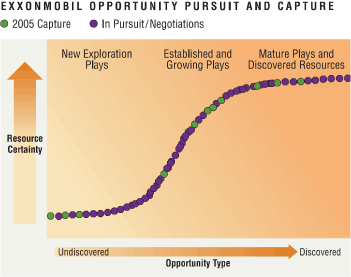
Schematic representation of ExxonMobil’s 2005 opportunity captures and ongoing pursuit, as characterized by exploration maturity stage. From left to right, the maturity stages are New Exploration Plays, Established and Growing Plays, and Mature Plays and Discovered Resources. Resource certainty increases most rapidly early in the exploration of a play. Technical risk and uncertainty are lowest in the mature stage. ExxonMobil is actively pursuing specific opportunities (purple circles) in all stages of exploration maturity, and as shown by the green circles, captured a range of opportunities in 2005.
EXXON MOBIL CORPORATION§ 2005 FINANCIAL & OPERATING REVIEW 29
2005 CAPTURED OPPORTUNITIES
New Exploration Plays
Libya– ExxonMobil was the successful bidder on Contract Area 44, a large, high-risk, high-potential block in a new exploration area offshore eastern Libya.
Madagascar– ExxonMobil expanded its deepwater acreage holdings offshore Madagascar, acquiring a 70-percent interest in the Ambilobe and Ampasindava blocks. These blocks are adjacent to the Majunga Offshore Profond block (ExxonMobil interest, 40 percent) that ExxonMobil acquired in 2004.
United Kingdom– ExxonMobil was awarded 20 contiguous blocks in a North Sea licensing round, covering approximately 1.2 million acres in an under-explored area known as the Mid North Sea High (ExxonMobil interest, 75 percent). This represents the single largest award in the history of licensing on the U.K. continental shelf.
Established and Growing Exploration Plays
Republic of Congo– ExxonMobil acquired a 40-percent interest in the Mer Tres Profonde Nord exploration block offshore in the Republic of Congo.
Nigeria-Sao Tome and Principe Joint Development Zone– ExxonMobil acquired a 40-percent interest in Block 1, which is located south of several nearby discoveries in Nigeria.
U.S. Gulf of Mexico– ExxonMobil was awarded 16 leases in the Central Gulf of Mexico Sale 194. The acreage includes leases in active exploration areas on the shelf and in the deepwater foldbelt.
Mature Plays and Discovered Resources
Angola– ExxonMobil signed a participation agreement (ExxonMobil interest, 13.6 percent) for a single LNG train to produce and export 5 million tons per year of LNG from deepwater Angolan developments.
Australia– Following the signing of a framework agreement, ExxonMobil acquired additional resources in the Greater Gorgon area, and interest in four additional licenses (ExxonMobil interest, 25 percent).
Indonesia– In September 2005, ExxonMobil signed a 30-year Production Sharing Contract with co-venturer PT Pertamina (Persero) and the Government of Indonesia covering the Cepu Contract Area, onshore Java (ExxonMobil interest, 45 percent). The Cepu Contract Area includes the Banyu Urip field, other discovered oil and gas resources, and exploration drilling opportunities.
Kazakhstan– ExxonMobil exercised its pre-emptive rights with respect to the sale of BG International’s interest in the North Caspian Production Sharing Agreement. ExxonMobil resold half of the interest acquired through this pre-emption to KazMunaiGas. Taken together, the purchase and subsequent sale bring ExxonMobil’s total interest to 18.5 percent.
Qatar– By signing a Development and Fiscal Agreement, as well as other agreements, ExxonMobil entered into a new venture with Qatar Petroleum to develop two new RasGas LNG trains, Trains 6 and 7, utilizing gas from Qatar’s North Field.
30 EXXON MOBIL CORPORATION§ 2005 FINANCIAL & OPERATING REVIEW
Resources and Reserves
The size, quality, and breadth of ExxonMobil’s total inventory of discovered oil and gas resources are major strengths of the Corporation. ExxonMobil’s resource base now stands at 73 billion oil-equivalent barrels (31 percent proved).
At year-end 2005, the resource base included 22.4 billion oil-equivalent barrels of proved oil and gas reserves. ExxonMobil added 1.7 billion oil-equivalent barrels to proved reserves in 2005 (excluding year-end price/cost revisions), while producing 1.5 billion oil-equivalent barrels. ExxonMobil replaced 112 percent of reserves produced, including asset sales (129 percent, excluding asset sales). This is the 12th consecutive year that the company’s proved reserves replacement has exceeded 100 percent (excluding year-end price/cost revisions). We have also stated our 2005 proved reserves to reflect the impact of using December 31, 2005 prices. Including the impact of asset sales and year-end prices/costs, we replaced 143 percent of reserves produced.
RESOURCE BASE
The resource base is updated annually to add new discoveries and resource acquisitions, and to reflect any changes in estimates of existing resources. ExxonMobil refers to new discoveries and acquisitions of discovered resources as resource additions/acquisitions. Revisions to existing field resources reflect changes in recovery expectations resulting from new technologies, drilling, ongoing evaluations, and any other revisions. During the update process, volumes produced or sold during the year are removed from the resource base.
The success of ExxonMobil’s strategy of identifying and pursuing all attractive exploration opportunities is demonstrated by our five-year average of 2.8 billion oil-equivalent barrels per year of resource additions/acquisitions.
RESOURCE BASE CHANGES
| | | | | | | | | |
| | | | | | | 5-Year | |
| (billions of oil-equivalent barrels) | | 2005 | | | Average | |
| |
| Resource additions/acquisitions | | | 4.4 | | | | 2.8 | |
| Revisions to existing fields | | | (1.2 | ) | | | (0.2 | ) |
| Production | | | (1.5 | ) | | | (1.6 | ) |
| Sales | | | (1.1 | ) | | | (0.4 | ) |
| |
| Net change | | | 0.6 | | | | 0.6 | |
| | |
| (1) | | Excludes year-end price/cost revisions. |
| | |
| (2) | | See Frequently Used Terms on pages 88 through 91. |
EXXON MOBIL CORPORATION§ 2005 FINANCIAL & OPERATING REVIEW 31
Effective use of global systems, processes, and best practices has resulted in continued low finding and resource-acquisition costs. In 2005, finding and resource-acquisition costs were $0.43 per oil-equivalent barrel. The five-year average finding and resource-acquisition cost is $0.53 per oil-equivalent barrel.
Resource additions/acquisitions over the past five years are balanced geographically and represent a wide range of resource types. Approximately 32 percent of the additions are gas that we anticipate will be utilized for LNG projects. Approximately 17 percent are located in deep water, and 17 percent are conventional.
DISCIPLINED APPROACH TO PROVED RESERVES
Resources are classified as either proved or non-proved. The process to move non-proved resources to proved reserves begins once technical and commercial confidence supports a decision to develop the resource.
The annual reporting of proved reserves is the product of ExxonMobil’s long-standing process, which ensures consistency and management accountability with respect to all reserves bookings. All reserves additions and revisions follow a rigorous and structured management review process that is stewarded by a team of experienced reserves experts with global responsibilities. ExxonMobil has always taken this approach to booking proved reserves in accordance with the standards set by the SEC of reasonable certainty for recovery.
ExxonMobil has consistently added new proved reserves through large development projects worldwide. Significant additions to proved reserves have also been achieved through upward revisions for existing assets by the application of in-depth technical analysis as production and reservoir data are obtained and assessed.
Although we participate in ventures with other companies, ExxonMobil maintains an independent view of reserves. Each company must make its own determination for booking reserves and for moving them into the proved category.
ExxonMobil has also stated our 2005 results to reflect impacts to proved reserves using year-end prices/costs. However, the use of prices from a single date is not relevant to investment decisions made by the Corporation, and annual variations in reserves based on such year-end prices are of no consequence in how the business is actually managed.
PROVED RESERVES
Excluding asset sales and year-end price/cost impacts, the company has added 19 billion oil-equivalent barrels to proved reserves over the last 10 years, more than replacing production.
The development of new fields discovered through exploration and extensions of existing fields has added an average of 1.3 billion oil-equivalent barrels per year to proved reserves over the last five years. These include proved additions in 2005 in Qatar, West Africa, Norway, Russia, the United States, and Canada.
Revisions have averaged 427 million oil-equivalent barrels per year over the last five years, resulting from effective reservoir management and the application of new technology.
ExxonMobil’s proved reserves of 22.4 billion oil-equivalent barrels (excluding year-end price/cost revisions) equates to a reserves life at current production rates of 14.5 years. At year-end 2005, approximately 64 percent of the company’s proved reserves were classified as developed.
| | |
| (1) | | Excludes asset sales and year-end price/cost revisions. |
| |
| (2) | | See Frequently Used Terms on pages 88 through 91. |
32 EXXON MOBIL CORPORATION§ 2005 FINANCIAL & OPERATING REVIEW
PROVED RESERVES ADDITIONS
| | | | | | | | | |
| | | | | | | 5-Year | |
| (millions of oil-equivalent barrels) | | 2005 | | | Average | |
| |
| Revisions (excluding year-end price/cost revisions) | | | 377 | | | | 427 | |
| Discoveries/extensions | | | 1,461 | | | | 1,339 | |
| Improved recovery | | | 31 | | | | 80 | |
| Purchases | | | 122 | | | | 27 | |
| |
| Total excluding sales | | | 1,991 | | | | 1,873 | |
| Asset sales | | | (265 | ) | | | (111 | ) |
| |
| Total including sales | | | 1,726 | | | | 1,762 | |
| Production | | | 1,539 | | | | 1,587 | |
Reserves replacement excluding sales(1)(2)(percent) | | | 129 | | | | 118 | |
Reserves replacement including sales(2)(percent) | | | 112 | | | | 111 | |
| | |
| (1) | | See Frequently Used Terms on pages 88 through 91. |
| |
| (2) | | Excluding year-end price/cost revisions. |
YEAR-END PROVED RESERVES
| | | | | |
| (billions of oil-equivalent barrels) | | | | |
| |
| Year-end 2004 reserves, including year-end price/cost revisions | | | 21.7 | |
| Remove year-end 2004 price/cost revisions | | | 0.5 | |
| Year-end 2004 reserves before year-end price/cost revisions | | | 22.2 | |
| 2005 additions | | | 2.0 | |
| 2005 production | | | (1.5 | ) |
| Year-end 2005 reserves before year-end price/cost revisions and sales | | | 22.7 | |
| 2005 sales | | | (0.3 | ) |
| |
| Year-end 2005 reserves before year-end price/cost revisions | | | 22.4 | |
| Year-end 2005 price/cost revisions | | | — | |
| |
| Year-end 2005 reserves including year-end price/cost revisions | | | 22.4 | |
DEFINITIONS – RESOURCES AND PROVED RESERVES
See Frequently Used Terms on pages 88 through 91 for further information.
Resource base, resources, recoverable oil, recoverable hydrocarbons, recoverable resources – total remaining estimated quantities of oil and gas that are expected to be ultimately recoverable. In addition to proved reserves, the resource base includes quantities that are not yet classified as proved, but which ExxonMobil believes will likely be moved to proved reserves and produced in the future.
Proved oil and gas reserves– estimated quantities of crude oil, natural gas, and natural gas liquids that ExxonMobil has determined to be reasonably certain of recovery under existing economic and operating conditions on the basis of our long-standing, rigorous management review process. ExxonMobil only records proved reserves when we have made significant funding commitments for the related projects. In this report, reserves:
| § | | Include 100 percent of majority-owned affiliates’ proved reserves; |
| |
| § | | Include ExxonMobil’s percentage ownership of equity-company proved reserves; |
| |
| § | | Include proved reserves from Syncrude tar-sands mining operations in Canada. Syncrude reserves are reported separately as a mining operation in SEC filings; and, |
| |
| § | | Exclude royalties and quantities due others. |
Proved developed reserves– volumes recoverable through existing wells with existing equipment and operating methods.
Proved undeveloped reserves– volumes expected to be recovered as a result of future investments.
Year-end price/cost revisions– The Corporation also reports its reserves reflecting the impacts to the proved reserves base utilizing December 31 prices and costs. Changes to proved reserves from these revisions are reported as year-end price/cost revisions. Refer to page 59 as well as page A56 of the 2006 Proxy Statement for more detail.
EXXON MOBIL CORPORATION§ 2005 FINANCIAL & OPERATING REVIEW 33
Invest in Projects that Deliver Superior Returns
ExxonMobil has a development portfolio of more than 110 projects with potential net investment of more than $120 billion. Built on the success of our exploration strategy, it is this portfolio from which we select the best projects for investment and delivery of superior returns.
Upstream capital spending has increased steadily since 2001 to develop major new resources. Our highly disciplined approach to pursuing and selecting the most attractive investment opportunities continues to distinguish ExxonMobil. Potential investment opportunities are evaluated over a wide range of economic scenarios.
As we progress new developments, we expect an evolution in the type of oil and gas resources from which we will be producing and in the physical conditions in which we will be operating. Many new developments will be located in more challenging environments, continuing to require innovations in technology. Such developments include tight gas, heavy oil, acid/sour gas, arctic conditions, deepwater, LNG, and gas-to-liquids. By 2010, these resource types are likely to account for about 40 percent of our production volumes, increasing from approximately 25 percent in 2005. This shift plays to our strengths, as ExxonMobil is unique in its ability to effectively design and execute the variety of projects needed to efficiently commercialize these diverse resources.
TIGHT GAS
Tight gas reservoirs can be thousands of times less permeable than conventional oil and gas reservoirs. However, with effective technology, tight gas reservoirs can become prolific producers, and their contribution to ExxonMobil’s production volumes is anticipated to grow through the end of the decade and beyond. Breakthrough technology, involving state-of-the-art ExxonMobil-proprietary multi-zone stimulation technology, is one of the keys to unlock the economic potential of tight gas reservoirs.
ExxonMobil has more than 9 trillion cubic feet of gas in the resource base from tight gas reservoirs. In the United States, ExxonMobil’s acreage in the Piceance Basin in Colorado contains a potential resource of more than 35 trillion cubic feet of gas.
34 EXXON MOBIL CORPORATION§ 2005 FINANCIAL & OPERATING REVIEW
HEAVY OIL(1)
ExxonMobil’s heavy oil operations include cold-flow production from the Cerro Negro project in Venezuela (ExxonMobil interest, 42 percent), steam-assisted bitumen production from Cold Lake (Imperial Oil interest, 100 percent), and tar-sands mining operations at Syncrude (Imperial Oil interest, 25 percent). ExxonMobil has additional tar-sands mining resources in the Kearl project (Imperial Oil and ExxonMobil combined interest, 100 percent) in Canada. ExxonMobil’s total heavy oil resources exceed 16 billion barrels (net).
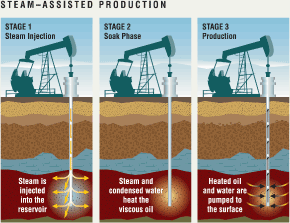
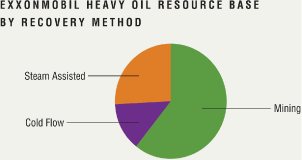
ExxonMobil is researching a range of technologies to improve the economic attractiveness of developing heavy oil resources. A portion of the research is devoted to making improvements to currently commercial recovery technologies, such as steam-based processes, which have been used to recover heavy oil from moderate depths. However, to unlock a wider range of resources, ExxonMobil is developing new proprietary recovery technologies that have the potential to deliver break-through performance. This research is focused on developing alternatives to steam-based recovery methods. Some of these alternatives use injected materials that, unlike steam, can be recovered along with the oil and reused.
A key challenge for heavy oil resources is delivering a marketable product in an economic manner. ExxonMobil’s upgrading and transportation research is focused on maximizing the value of the heavy oil, which has a significant quantity of molecules that do not readily convert to transportation fuels. Utilizing the heating value of these molecules more efficiently reduces transportation and refining costs and improves overall economic performance.
| | |
| (1) | | See Frequently Used Terms on pages 88 through 91. |
ACID/SOUR GAS
Another example of a resource that challenges the boundaries of existing technology is acid/sour gas. Before natural gas can be sold, contaminants such as hydrogen sulfide and carbon dioxide must not only be removed, but also disposed of, in a safe, environmentally sound, and reliable manner. One method of doing so is to reinject the hydrogen sulfide and carbon dioxide gas back into the reservoir from which it was produced.
In 2005, at LaBarge in Wyoming, ExxonMobil started up one of the largest acid-gas injection facilities in the world, with an injection capacity of 60 million cubic feet per day at a pressure of 2500 pounds per square inch (psi). In Qatar, our RasGas joint venture also started acid-gas injection facilities, with a capacity of 85 million cubic feet per day at 1600 psi.
At Tengiz, onshore Kazakhstan, a major expansion is in progress, and one of the primary technological challenges is compressing a gas containing 17 to 23 percent hydrogen sulfide to higher pressures (10,000 psi) in greater quantities than have ever been achieved before. This effort requires extensions of existing technology for compressor materials, seals, and rotating elements. For the Kashagan project offshore Kazakhstan, which is expected to start up later this decade, technology will be developed even further to meet the need of compressing the sour gas to over 12,500 psi.
EXXON MOBIL CORPORATION§ 2005 FINANCIAL & OPERATING REVIEW 35
ARCTIC
Arctic and sub-Arctic regions contain significant hydrocarbon potential, but also present significant operational and environmental challenges. Many arctic basins remain unexplored or underexplored. With our long experience operating in arctic conditions, ExxonMobil is well-positioned to pursue this potential and to address these challenges.
ExxonMobil’s arctic experience began in 1933, with the first commercial oil field at Norman Wells in northern Canada. Since then, ExxonMobil has produced almost 3.5 billion oil-equivalent barrels from fields located in arctic conditions. Today, ExxonMobil has more than 7 billion oil-equivalent barrels of recoverable resources in arctic environments.
Cost-effective and environmentally safe development of arctic resources requires innovative technology. Offshore platforms must be designed to withstand ice loading, icebergs, and severe arctic storms. Transportation of hydrocarbons requires ice-breaking tankers and terminals capable of year-round operation in severe weather conditions. Subsea pipelines must be buried below the seafloor to avoid damage from icebergs. Onshore pipelines must be designed to withstand the strain of frost heave and thaw settlement in areas of discontinuous permafrost, while minimizing the impact on the environment.
With a strong focus on technology and upstream research and development, ExxonMobil remains at the forefront of arctic technology, and is well-positioned to take advantage of potentially significant opportunities.
DEEPWATER
The move into deeper and deeper water has been enabled by a succession of technological innovations, many of which ExxonMobil pioneered as part of our focused, long-term commitment to the development of deepwater technology.
Recent ExxonMobil-operated deepwater projects offshore West Africa have used tension leg platforms (TLPs) or subsea (SS) completions tied to floating production, storage and offloading vessels (FPSOs). FPSO technology is used in our early production systems (EPSs) employed at Xikomba, Yoho, and Zafiro in West Africa. A generic FPSO vessel is deployed to capture early production volumes until full field development is completed. These EPSs have added value through early revenue generation and lower development costs while also providing an accelerated understanding of the reservoir, thus increasing resource certainty for full field development.
Our new-build FPSOs for the Kizomba A and B developments are the largest in the world. Both the EPSs and the Kizomba and Erha FPSO projects are benefitting from our “Design One, Build Multiple” approach, which allows us to leverage our broad deepwater portfolio to achieve design and construction efficiencies that improve project economics and deliver superior returns.
Through year-end 2005, ExxonMobil had participated in 54 deepwater discoveries in West Africa estimated to contain more than 16 billion gross oil-equivalent barrels of recoverable resources, 16 deepwater discoveries in the Gulf of Mexico with 4 billion gross recoverable oil-equivalent barrels, and 20 other deepwater discoveries in Australia, Norway, and Brazil with nearly 13 billion gross recoverable oil-equivalent barrels. We plan to continue our deepwater exploration with 15 to 20 wells per year over the next several years.
36 EXXON MOBIL CORPORATION§ 2005 FINANCIAL & OPERATING REVIEW
LIQUEFIED NATURAL GAS (LNG)
ExxonMobil has participated in the development of liquefied natural gas (LNG) since the 1970s.
Technology has transformed LNG from a niche means of commercializing stranded gas into an increasingly essential method of meeting the world’s growing demand for gas.
ExxonMobil has established the industry benchmark for LNG production capacity (train size). Technological breakthroughs, design changes, and cost reduction through economies of scale at all points of the supply chain have made LNG cost competitive with many local supplies of gas, thus creating new markets.
Working with Qatar Petroleum, ExxonMobil has achieved cost reductions of more than 25 percent, attributable to technology and economies of scale.
LNG SUPPLY CHAIN
The LNG supply chain consists of five principal steps: production of raw natural gas, gas processing and liquefaction, transportation of the LNG (typically by ship), receiving and regasification of the LNG, and distribution of natural gas to end users.
GAS-TO-LIQUIDS (GTL) TECHNOLOGY
GTL technology provides an alternative to LNG for commercializing natural gas. Whereas LNG provides the ability to efficiently transport natural gas to distant markets, GTL converts natural gas to liquid products.
ExxonMobil’s proprietary GTL process,AGC-21, involves a three-step process that includes synthesis gas generation, Fischer-Tropsch hydrocarbon synthesis to heavy wax, and product upgrading for wax conversion to fuels, lubricants, and specialty products. ExxonMobil has established a strong intellectual property position in all aspects of GTL with over 3500 patents issued or pending worldwide. ExxonMobil’s GTL technology is highly selective compared to competing gas-conversion technologies, as it yields a higher percentage of high-quality lube basestocks.
A Heads of Agreement was signed in July 2004 in Qatar to build one of the largest GTL plants in the world. Project planning is currently under way.
EXXON MOBIL CORPORATION§ 2005 FINANCIAL & OPERATING REVIEW 37
PROJECTS CONTRIBUTION
With the largest portfolio of development and exploration opportunities in the industry, projects currently in the planning, designing, and implementing stages are anticipated to be major contributors to ExxonMobil’s future production.
The net production capacity anticipated in 2010 from all ExxonMobil projects started up in 2004 and 2005, and anticipated to start up between 2006 and 2010, is more than 2 million oil-equivalent barrels per day. Since 1999, more than 80 major projects have been brought online, and it is expected that these will have produced more than 4.5 billion net oil-equivalent barrels by 2010.
EXECUTION EXCELLENCE
ExxonMobil sets benchmarks as the industry leader in project execution and operating performance. Realizing the full value from our project portfolio requires technical and execution excellence. ExxonMobil’s global project organization is delivering that value not only for ExxonMobil, but also for host governments.
ExxonMobil-operated Development Company projects started up since 2000 were producing at rates 4 percent higher in 2005 than rates anticipated at full funding. The projects were implemented at development costs within 6 percent of funding and executed overall on schedule.
ExxonMobil’s cost and schedule discipline, project management systems, and global transfer of technology have resulted in unit development costs as much as 20 percent lower than comparable competitor developments. The time from full funding to start-up is, on average, 15 percent shorter for ExxonMobil-operated projects than for competitors.
Comparison of actual 2005 production volumes to those levels anticipated at the time of full funding for ExxonMobil Development Company projects started up between 2000 and 2005.
38 EXXON MOBIL CORPORATION§ 2005 FINANCIAL & OPERATING REVIEW
KIZOMBA B
The Kizomba B project in deepwater offshore Angola Block 15 commenced production in July 2005, setting a new industry record for the fastest development time for a project of its size and complexity. Production ramped up rapidly to its current rate of more than 250 thousand barrels of oil per day.
SAKHALIN-1 (CHAYVO) PHASE 1
Phase 1 of the multiphase Sakhalin-1 project started up in 2005 via an interim production system with capacity to deliver 50 thousand barrels of oil and 150 million cubic feet of gas per day to the Russian market. Start-up of full field production facilities for Chayvo Phase 1 is anticipated in 2006 with a peak oil rate of 250 thousand barrels per day.
AZERI-CHIRAG-GUNASHLI PHASE 1
Azeri-Chirag-Gunashli (ACG) Phase 1 began production from the Central Azeri field in February 2005. Development included the construction and installation of platforms in 420 feet of water, along with 100 miles of subsea oil and gas pipelines.
RASGAS TRAIN 4
RasGas Train 4, the joint venture’s second 4.7 million-ton-per-year LNG train, started up on schedule and under budget, with integrated NGL recovery planned for first-quarter 2006 start-up.
| | | | | | | |
| AL KHALEEJ GAS PHASE 1 | | ARTHUR | | BONGA | | KRISTIN |
| Construction was completed on schedule for Al Khaleej Gas Phase 1, with first gas sales in November 2005 to domestic customers in Qatar. Peak capacity is 675 million cubic feet per day. | | By leveraging existing infrastructure, the Arthur project started up only 15 months after discovery. Wells were tied back to the existing ExxonMobil-operated Thames platform via a new 20-mile pipeline. | | Bonga is the fourth large, deepwater development to have started up in West Africa with ExxonMobil participation. Start-up occurred in November 2005, following a 56-month construction period. | | Early production from the Kristin project, which is developing high-pressure, high-temperature resources in the Norwegian Sea, started up ahead of the full production planned for 2006. |
EXXON MOBIL CORPORATION§ 2005 FINANCIAL & OPERATING REVIEW 39
Major Development Projects
PROJECT START-UPS
| | | | | | | | | | | | | | | | | |
| | | | | | | | | | | | |
| | | ExxonMobil | | | Target Peak | | | | | |
| | | Working | | | Production (Gross) | | | | | |
| | | Interest | | | Liquids | | | Gas | | | | | |
| | | (%) | | | (Kbd) | | | (MCFD) | | | | | |
2005(Actual) | | | | | | | | | | | | | | | | |
| Angola – Kizomba B | | | 40 | | | | 250 | | | | — | | | | n | |
| Azerbaijan – Azeri-Chirag-Gunashli (ACG) Phase 1 | | | 8 | | | | 325 | | | | — | | | | l | |
| Nigeria – Bonga | | | 20 | | | | 225 | | | | 165 | | | | l | |
| Norway – Kristin | | | 11 | | | | 150 | | | | 500 | | | | l | |
| Qatar – Al Khaleej Gas Phase 1 | | | 100 | | | | 40 | | | | 675 | | | | n | |
| Qatar – RasGas Train 4 | | | 34 | | | | 45 | | | | 740 | | | | | |
| Russia – Sakhalin-1 (Chayvo) Phase 1 | | | 30 | | | | 250 | | | | 400 | | | | n | |
| U.K. – Arthur | | | 70 | | | | 5 | | | | 130 | | | | n | |
| | | | | | | | | | | | | | | | | |
2006(Projected) | | | | | | | | | | | | | | | | |
| Angola – Dalia | | | 20 | | | | 225 | | | | — | | | | l | |
| Azerbaijan – Azeri-Chirag-Gunashli (ACG) Phase 2 | | | 8 | | | | 465 | | | | — | | | | l | |
| Canada – Syncrude Upgrader Expansion | | | 25 | | | | 110 | | | | — | | | | l | |
| Malaysia – Guntong Hub | | | 50 | | | | 35 | | | | 715 | | | | n | |
| Nigeria – East Area Additional Oil Recovery | | | 40 | | | | 120 | | | | — | | | | n | |
| Nigeria – Erha / Erha North | | | 56 | | | | 190 | | | | — | | | | n | |
| Norway – Fram East | | | 25 | | | | 50 | | | | 80 | | | | l | |
| U.S. – Thunder Horse | | | 25 | | | | 250 | | | | 200 | | | | l | |
| | | | | | | | | | | | | | | | | |
2007(Projected) | | | | | | | | | | | | | | | | |
| Angola – Rosa Area | | | 20 | | | | 140 | | | | — | | | | l | |
| Kazakhstan – Tengiz Phase 1 | | | 25 | | | | 285 | | | | 290 | | | | l | |
| Norway – Ormen Lange | | | 7 | | | | 30 | | | | 2000 | | | | l | |
| Norway – Statfjord Late Life | | | 21 | | | | 65 | | | | 340 | | | | l | |
| Norway – Volve | | | 30 | | | | 50 | | | | 30 | | | | l | |
| Qatar – RasGas Train 5 | | | 30 | * | | | 45 | | | | 740 | | | | | |
| U.K. – Starling | | | 72 | | | | 6 | | | | 100 | | | | l | |
| | | | | | | | | | | | | | | | | |
2008(Projected) | | | | | | | | | | | | | | | | |
| Angola – Kizomba C – Mondo and Saxi / Batuque | | | 40 | | | | 200 | | | | — | | | | n | |
| Azerbaijan – Azeri-Chirag-Gunashli (ACG) Phase 3 | | | 8 | | | | 260 | | | | — | | | | l | |
| Nigeria – East Area Natural Gas Liquids | | | 51 | | | | 40 | | | | — | | | | n | |
| Qatar – Qatargas II Train 4 | | | 30 | | | | 80 | | | | 1250 | | | | | |
| Qatar – RasGas Train 6 | | | 30 | | | | 75 | | | | 1250 | | | | | |
| U.S. – Piceance Tight Gas (Phase 1) | | | 100 | | | | — | | | | 140 | | | | n | |
| U.S. – Western Region Development (Orion) | | | 36 | | | | 55 | | | | — | | | | l | |
| |
2009 +(Projected) | | | | | | | | | | | | | | | | |
| Angola – Angola LNG | | | 14 | | | | 50 | | | | 965 | | | | l | |
| Angola – Kizomba D | | | 40 | | | | 125 | | | | — | | | | n | |
| Angola – Lirio-Cravo | | | 20 | | | | 115 | | | | — | | | | l | |
| Angola – Paz Flor | | | 20 | | | | 200 | | | | — | | | | l | |
| Australia – Greater Gorgon Trains 1 & 2 | | | 25 | | | | 10 | | | | 1450 | | | | l | |
| Australia – Kipper / Tuna | | | 41 | | | | 25 | | | | 270 | | | | n | |
| Canada – Hebron | | | 38 | | | | 165 | | | | — | | | | l | |
| Canada – Kearl Phase 1 | | | 100 | | | | 100 | | | | — | | | | n | |
| Canada – Kearl (Future Phases) | | | 100 | | | | 200 | | | | — | | | | n | |
| Canada – Mackenzie Gas Project | | | 57 | | | | 10 | | | | 815 | | | | n | |
| Indonesia – Banyu Urip | | | 45 | * | | | 165 | | | | 20 | | | | n | |
| Indonesia – Natuna | | | 76 | | | | — | | | | 1100 | | | | n | |
| Italy – Tempa Rossa | | | 25 | | | | 50 | | | | 20 | | | | l | |
| Kazakhstan – Kashagan Phase 1 | | | 19 | | | | 450 | | | | — | | | | l | |
| Kazakhstan – Kashagan (Future Phases) | | | 19 | | | | 750 | | | | — | | | | l | |
| Kazakhstan – Tengiz Expansion | | | 25 | | | | 220 | | | | — | | | | l | |
| Nigeria – Bonga Ullage | | | 20 | | | | 70 | | | | 50 | | | | l | |
| Nigeria – Bonga SW | | | 20 | | | | 105 | | | | 75 | | | | l | |
| Nigeria – Bosi Oil | | | 56 | | | | 120 | | | | — | | | | n | |
| Nigeria – LNG IPP Project | | | 40 | | | | — | | | | 900 | | | | n | |
| Nigeria – Satellite Projects | | | 40 | | | | 125 | | | | — | | | | n | |
| Nigeria – Usan | | | 30 | | | | 180 | | | | — | | | | l | |
| Norway – Skarv/Idun | | | 12 | | | | 85 | | | | 500 | | | | l | |
| Norway – Tyrihans | | | 12 | * | | | 80 | | | | 330 | | | | l | |
| Papua New Guinea – PNG Gas Project | | | 26 | | | | 20 | | | | 570 | | | | n | |
| Qatar – Al Khaleej Gas (Future Phases) | | | 100 | | | | 70 | | | | 1140 | | | | n | |
| Qatar – Qatar GTL | | | 100 | | | | 165 | | | | 1440 | | | | n | |
| Qatar – Qatargas II Train 5 | | | 18 | * | | | 80 | | | | 1250 | | | | | |
| Qatar – RasGas Train 7 | | | 30 | | | | 75 | | | | 1250 | | | | | |
| Russia – Sakhalin-1 Gas Export | | | 30 | | | | — | | | | 800 | | | | n | |
| U.S. – Alaska Gas Project / Point Thomson | | | 36 | | | | 70 | | | | 4500 | | | | * | |
| U.S. – Piceance Tight Gas (Phase 2) | | | 100 | | | | — | | | | 230 | | | | n | |
| | | | | | | | | | | | | | | | | |
| Operatorship: | | | | | | | | | | | | | | | | |
| | | | | | | | | | | | | | | | | |
n = ExxonMobil Operated | | | | | | | | | | | | | | | | |
= Joint Operation | | | | | | | | | | | | | | | | |
l = Co-Venturer Operated | | | | | | | | | | | | | | | | |
| * Pending Final Agreements | | | | | | | | | | | | | | | | |
| – Not Applicable | | | | | | | | | | | | | | | | |
MAJOR GLOBAL LNG TERMINAL ACTIVITY
| | | | | | | | | |
| | | Primary | | | | |
| | | Market | | | Supply Source |
2007-2009(Projected) | | | | |
| Italy – Adriatic Terminal | | Italy | | | RasGas | |
| U.K. – South Hook Terminal | | | U.K. | | | | Qatargas II | |
| U.S. – Gulf Coast Terminal | | | U.S. | | | | RasGas | |
Supporting ExxonMobil’s LNG efforts, regasification terminals arebeing progressed consistent with project demands. In addition tonew-build terminals in the United Kingdom, Italy, and the UnitedStates, ExxonMobil continues to evaluate third-party terminals.
40 EXXON MOBIL CORPORATION§ 2005 FINANCIAL & OPERATING REVIEW
Capitalize on Growing Natural Gas and Power Markets
ExxonMobil sells natural gas in 25 countries and across five continents in most major gas markets in the world. Our expertise in integrating advanced technologies throughout the gas value chain and our market presence and knowledge provide a substantial competitive advantage. Gas is sold under daily, monthly, and multiyear contracts to a portfolio of customers, including power companies, industrial users, and distributors. In addition to current sales activity, ExxonMobil is working to develop new markets.
NORTH AMERICAN GAS MARKET
With gas demand expected to grow 1 percent per year on average through 2020, and with domestic supply declining, continued investment in both existing and new gas supplies is required.
ExxonMobil is actively developing gas resources to meet North America’s increasing demand. These include pipeline gas from the North Slope of Alaska and the Mackenzie Delta region of northern Canada, where combined we hold the leading resource position. These also include LNG imports from Qatar, expanding development of tight gas in the Piceance Basin in Colorado, and exploring for gas in the Gulf of Mexico.
ExxonMobil has extensive experience in the North American gas market, which is comprised of a number of regional markets, defined by different demographics, weather patterns, cost of transportation, and available storage and infrastructure. ExxonMobil’s understanding of these factors is critical in maximizing the value of our gas.
This market understanding underpins our straightforward business model of selling equity and co-venturer-interest gas at optimized outlets relative to transparent indices. We do not trade speculatively or trade in NYMEX gas futures.
(1) Requires New Investment
EUROPEAN GAS MARKET
European gas demand continues to grow at about 2 percent per year, while local production is declining. As a consequence, Europe will become more dependent on imported natural gas. By 2020, we expect over 70 percent of gas demand to be satisfied by imports.
While we continue to search for new local supplies by exploring areas such as the Norwegian-Danish Basin in the North Sea, ExxonMobil is also participating in several new import projects, including bringing LNG from Qatar.
ExxonMobil’s involvement in the development and growth of the European natural gas business since its inception 40 years ago has provided us with a broad and deep understanding of the market and regulatory environment. In response to evolving regulatory requirements, ExxonMobil has been restructuring its European gas business. On July 1, 2005, ExxonMobil announced that its subsidiary, Esso Nederland B.V., transferred its 25-percent ownership share in Gasunie’s transportation business to the State of the Netherlands for approximately $1.6 billion (earnings after tax).
EXXON MOBIL CORPORATION§ 2005 FINANCIAL & OPERATING REVIEW 41
(1) Includes Joint-venture interests
Global LNG demand is growing at approximately 8 percent per year, which is faster than the growth rate of overall gas demand. Between 2001 and 2020, world LNG demand is expected to grow nearly four-fold, from 120 million to more than 450 million tons per year, driven by demand in North America and Europe, as well as Asia Pacific markets.
In 2005, ExxonMobil participated in LNG operations in Qatar and Indonesia with a combined gross capacity of 30 million tons per year, shipping LNG to customers in Japan, India, Korea, Europe, and the United States. This represented about 20 percent of the global industry capacity, making ExxonMobil one of the major LNG suppliers to the world. By 2015, sales are expected to increase to nearly 80 million tons per year.
ExxonMobil has plans to participate in several world-class LNG regasification terminals. ExxonMobil and Qatar Petroleum are developing the onshore South Hook LNG terminal in Wales. Also under development is the Adriatic LNG terminal in Italy, the world’s first fixed offshore storage and regasification terminal. An onshore terminal in Hong Kong is being evaluated, and in 2005, ExxonMobil obtained permits for both the Golden Pass and Vista del Sol terminals along the Gulf Coast of the United States. ExxonMobil and Qatar Petroleum retain capacity rights in the Fluxys Zeebrugge terminal in Belgium.
Between 2007 and 2011, ExxonMobil plans to participate in the start-up of eight LNG trains in Qatar, Australia, and Angola, targeting growing markets in the United States, Europe, and Asia. These new trains will have a gross capacity of nearly 7 billion cubic feet per day or 51 million tons per year, representing approximately 35 percent of industry’s new LNG capacity expected to be added by 2011. Beyond 2011, ExxonMobil is evaluating LNG opportunities that include additional trains in Australia and West Africa.
POWER ACTIVITIES
ExxonMobil has interests in electric power generation facilities with total capacity of 14,400 megawatts. These interests include the Castle Peak Power Company in Hong Kong, which sells electricity to local markets. ExxonMobil also operates facilities with power generation primarily for our own use. Where economic, we install energy-efficient cogeneration. ExxonMobil’s cogeneration facilities worldwide have had the equivalent impact of reducing greenhouse-gas emissions by 9 million metric tons per year. During 2005, the installation of new generation units at the Beaumont refinery in Texas, as well as at a gas-processing facility in Wyoming, increased cogeneration capacity by 400 megawatts to a total of 3700 megawatts.
42 EXXON MOBIL CORPORATION§ 2005 FINANCIAL & OPERATING REVIEW
Worldwide Upstream Operations
ExxonMobil has interests in exploration and production acreage in 36 countries with production in 26 countries.
The Americas
ExxonMobil’s operations in the Americas accounted for about 33 percent of ExxonMobil’s 2005 net oil and gas production and about 39 percent of Upstream earnings. Base production continues to yield strong returns. We expect future production to include contributions from multiple opportunities, including tight gas, heavy oil, and arctic developments.
AMERICAS HIGHLIGHTS
| | | | | | | | | | | | | |
| | | 2005 | | | 2004 | | | 2003 | |
Earnings(billions of dollars) | | | 9.5 | | | | 7.1 | | | | 5.5 | |
Proved Reserves(BOEB)(1) | | | 6.9 | | | | 7.4 | | | | 8.1 | |
Acreage(gross acres, million) | | | 62.9 | | | | 64.6 | | | | 51.9 | |
Net Liquids Production(MBD) | | | 0.9 | | | | 1.0 | | | | 1.1 | |
Net Gas Production(BCFD) | | | 2.8 | | | | 3.0 | | | | 3.2 | |
(1) Excludes year-end price/cost revisions.
UNITED STATES
ExxonMobil is one of the largest oil and gas producers and reserves holders in the United States. The Corporation’s large portfolio is geographically diverse with significant positions in all major producing regions, including Alaska, the onshore Gulf Coast, shelf and deepwater areas of the Gulf of Mexico, onshore and offshore California, and the midcontinent. The U.S. portfolio contains a diverse range of assets, from mature fields to new, world-scale projects.
In the United States, the Upstream continues to provide a significant contribution to ExxonMobil’s profitability through high-quality drilling programs, selective investments in existing fields and new projects, and continued operational-efficiency improvements. United States properties accounted for about 19 percent of the company’s net oil and gas production in 2005 and 26 percent of Upstream earnings.
2005 highlights include continued development of the Piceance Basin tight gas resource, progress with the State of Alaska on a fiscal contract for the Alaska Gas Project, and start-up of the LaBarge Acid-Gas Injection project. Piceance development and the Alaska Gas Project will continue to be key focus areas in 2006. Start-up of the co-venturer-operated Thunder Horse deepwater Gulf of Mexico project is expected in 2006.
EXXON MOBIL CORPORATION§ 2005 FINANCIAL & OPERATING REVIEW 43
GULF OF MEXICO
ExxonMobil holds one of the leading acreage positions in the Gulf of Mexico with more than 3.8 million acres (gross) under lease, approximately 3 million of which are in deep water. This acreage position includes interests in two highly active industry plays, the ultra-deepwater foldbelt and deep gas targets underlying the Louisiana shelf.
In 2005, ExxonMobil established exploration agreements in the Gulf of Mexico shelf and deep water that could lead to multiple wells being drilled in 2006 and 2007.
| The Hoover-Diana deep draft caisson vessel (DDCV) has been a key contributor to ExxonMobil’s deepwater Gulf of Mexico production since its start-up in 2000. |
In 2005, Hurricanes Katrina and Rita struck the Gulf of Mexico with an impact more severe than industry had previously experienced. Although 68 of ExxonMobil’s 94 platforms incurred some damage, our Upstream managed through these events safely, and there was no significant impact to the environment as a result of the damage to our facilities. By year-end 2005, approximately 80 percent of initial shut-in liquids and 90 percent of initial shut-in gas production were restored. The remaining restoration is dependent upon repair of the more significantly damaged platforms and third-party pipeline and product-handling facilities.
COAL
ExxonMobil operates the Monterey coal mine (ExxonMobil interest, 100 percent) in Illinois which produced 2.7 million metric tons (gross) in 2005. The coal is supplied to local power-generation and cement-processing industries.
44 EXXON MOBIL CORPORATION§ 2005 FINANCIAL & OPERATING REVIEW
PICEANCE BASIN
ExxonMobil has initiated development of approximately 300 thousand gross acres containing tight gas resources located in the Piceance Basin in western Colorado. Initial development efforts in 2005 increased field production capacity to 55 million cubic feet per day. ExxonMobil continues to employ its proprietary, state-of-the-art multi-zone stimulation technology (MZST) to maximize producing rates and recoveries. In addition, ExxonMobil is reducing both the cost and environmental impact of its operations by drilling and completing multiple deviated wells from single surface locations. With access to a potential resource of approximately 35 trillion cubic feet of gas, ExxonMobil is actively progressing development both individually and with co-venturers, with plans for multiple plant expansions and large-scale drilling projects.
ALASKA GAS PROJECT / POINT THOMSON
ExxonMobil is the largest holder of gas resources on the North Slope of Alaska. The Alaska Gas Project will treat and transport gas from the Prudhoe Bay and Point Thomson fields to North American gas markets. The project scope includes a gas-treating plant on the North Slope and construction of a large-diameter, high-pressure pipeline.
In 2005, work focused on negotiating an appropriate fiscal framework with the state of Alaska. Once that framework is established, project planning will progress, leading to further engineering and the securing of permits. Execution of this world-scale development is expected to take approximately 10 years once the fiscal framework is defined.
THUNDER HORSE
Located in the central Gulf of Mexico, this co-venturer-operated deepwater development utilizes a semi-submersible floating production, drilling, and quarters unit with capacity of over 250 thousand barrels per day. The facility incurred damage from a listing incident in 2005. The operator has resumed drilling and construction activities with start-up projected for the second half of 2006.
CANADA
Taken together, ExxonMobil Canada, a wholly-owned affiliate, and Imperial Oil, a majority-owned affiliate (ExxonMobil interest, 69.6 percent), would be the largest crude oil producer in Canada, a leading natural gas producer, and would hold the largest resource position. The company has a significant presence in major projects offshore eastern Canada and a well-established production base with expansion opportunities in western Canada.
OFFSHORE CANADA OPERATIONS
The ExxonMobil-operated Sable Offshore Energy Project (ExxonMobil interest, 51 percent; Imperial Oil interest, 9 percent) consists of five producing fields. Production in 2005 was approximately 380 million cubic feet per day of natural gas (gross) and 20 thousand barrels per day of liquids (gross).
The Hibernia field (ExxonMobil interest, 33 percent), is operated by Hibernia Management and Development Company Ltd., using ExxonMobil personnel and processes. In 2005, Hibernia’s production averaged approximately 200 thousand barrels of oil per day (gross). By the end of 2005, Hibernia had produced more than 400 million barrels of oil (gross).
The co-venturer-operated Terra Nova development (ExxonMobil interest, 22 percent) produces up to 150 thousand barrels of oil per day (gross). Located in 300 feet of water, Terra Nova consists of a unique, harsh-environment-equipped FPSO and 24 subsea wells that are expected to recover 380 million oil-equivalent barrels (gross).
ExxonMobil has interest in four operated, and four co-venturer-operated, deepwater exploration blocks in the Orphan Basin (ExxonMobil interest, 15 percent; Imperial Oil interest, 15 percent), a high-potential, unexplored basin with arctic conditions offshore eastern Canada. Activity in 2004 and 2005 focused on seismic acquisition and processing in anticipation of drilling planned for 2006.
ONSHORE CANADA OPERATIONS
The Cold Lake field (Imperial Oil interest, 100 percent) and the Syncrude tar-sands mining operation (Imperial Oil interest, 25 percent) in Alberta account for the majority of Imperial Oil’s liquids production in western Canada. Cold Lake averaged 138 thousand barrels of oil per day in 2005, and at Syncrude, 2005 production of synthetic crude averaged 214 thousand barrels per day (gross). The Kearl tar-sands mining project and the Mackenzie Gas Project are advancing.
EXXON MOBIL CORPORATION§ 2005 FINANCIAL & OPERATING REVIEW 45
HIBERNIA
The Hibernia field was discovered in 1979 offshore eastern Canada, an arctic environment, and was originally thought to contain 600 million barrels of recoverable resources. Today, the estimated recoverable resources have grown significantly, to more than 1 billion barrels of oil (gross).
In addition to processing oil, the Hibernia facilities can inject more than 265 thousand barrels of water and 270 million cubic feet of gas per day for the reservoir-pressure support required to maximize oil recovery.
SYNCRUDE UPGRADER EXPANSION
The Syncrude upgrader expansion project consists of adding a second train at the Aurora tar-sands mine and increasing capacity of the upgrader by about 110 thousand barrels of oil per day (gross). The upgrader expansion, which includes the addition of a third coker, a new aromatic saturation unit, and a new hydrogen plant, is scheduled for completion in early 2006. The project is expected to develop about 1 billion barrels of resource (gross).
KEARL TAR-SANDS MINING PROJECT
In July 2005, an application for the phased development of the Kearl tar-sands mining project was submitted to the Alberta Government. The application included the facilities for three phases of ore preparation and bitumen production, with each phase producing about 100 thousand barrels of bitumen per day (gross). First production could begin in 2011, with the second and third phases to follow. The project is expected to develop 4.4 billion barrels of resource (gross) with an investment of between $4 and $6 billion (gross).
MACKENZIE GAS PROJECT
The Mackenzie Gas Project includes the development of three onshore anchor fields containing approximately 6 trillion cubic feet of natural gas in the Mackenzie Delta region of northern Canada. ExxonMobil and Imperial Oil hold interests in two of the three fields. In addition to field development, the project includes a gas-gathering pipeline system, a gas-processing plant, an associated natural gas liquids line, and a 760-mile pipeline to southern markets. The proposed pipeline has an initial design capacity of 1.2 billion cubic feet per day and is expandable to 1.8 billion cubic feet per day with additional compression facilities. A decision to proceed with regulatory hearings, a critical step in the public consultation process, was made in late 2005.
SOUTH AMERICA
VENEZUELA
ExxonMobil operates the Cerro Negro field (ExxonMobil interest, 42 percent) in Venezuela. The 120 thousand barrels of extra heavy oil produced daily (gross) are processed through an upgrader into synthetic crude oil. ExxonMobil also has a 50-percent interest in the 122-thousand-acre La Ceiba block on the southeastern shore of Lake Maracaibo. Extended production testing at La Ceiba began in October 2004, and a declaration of commerciality was made in 2005.
BRAZIL
At year-end 2005, ExxonMobil held interests in two blocks offshore Brazil. BC-10 (ExxonMobil interest, 20 percent) is located in the Campos Basin, and Block BM-S-22 (ExxonMobil interest, 40 percent), is located in the Santos Basin. ExxonMobil-operated BM-S-22 is a 340-thousand-acre exploration block over which 3D seismic data were acquired in 2005. ExxonMobil is finalizing the sale of its interest in BC-10.
COLOMBIA
In 2005, activity on the 11-million-acre Tayrona block (ExxonMobil interest, 40 percent), off Colombia’s northern coast in the Caribbean Sea, consisted of technical evaluation in preparation for acquisition of 3D seismic data planned for 2006.
OTHER SOUTH AMERICA
ExxonMobil holds a 51-percent interest in the Chihuidos block in central Argentina and a 23-percent interest in the Aguarague concession in northwestern Argentina. Net daily gas production of 80 million cubic feet is sold into markets in Argentina and central and northern Chile.
In addition, the company holds exploration rights onshore Bolivia, and offshore Guyana and Trinidad.
46 EXXON MOBIL CORPORATION§ 2005 FINANCIAL & OPERATING REVIEW
Europe
ExxonMobil is the largest net producer of hydrocarbons in Europe. The company has operations in the United Kingdom, Norway, the Netherlands, Germany, France, and Italy. Extensive North Sea oil and natural gas production operations and significant onshore natural gas production are among the company’s key assets. ExxonMobil’s operations in Europe accounted for about 31 percent of the company’s 2005 net oil and gas production and about 28 percent of Upstream earnings.
EUROPE HIGHLIGHTS
| | | | | | | | | | | | | |
| | | 2005 | | | 2004 | | | 2003 | |
Earnings(billions of dollars) | | | 6.9 | | | | 4.4 | | | | 5.3 | |
Proved Reserves(BOEB)(1) | | | 4.3 | | | | 4.7 | | | | 5.2 | |
Acreage(gross acres, million) | | | 20.1 | | | | 19.8 | | | | 19.9 | |
Net Liquids Production(MBD) | | | 0.5 | | | | 0.6 | | | | 0.6 | |
Net Gas Production(BCFD) | | | 4.3 | | | | 4.6 | | | | 4.5 | |
(1) Excludes year-and price/cost revisions.
CONTINENTAL EUROPE
ExxonMobil has significant gas holdings onshore in the Netherlands and Germany, and is the largest gas producer in both countries.
In late 2004, the Dutch Parliament endorsed Cabinet recommendations to allow both exploration and gas production from the Waddenzee (ExxonMobil interest, 40 percent) under carefully controlled conditions to ensure environmental integrity. The Waddenzee development plan is mature, and the permitting process is under way.
The Groningen field (ExxonMobil interest, 30 percent), located in the Netherlands, started production in 1963. It is the largest gas field in Europe, with estimated ultimate recoverable resources of approximately 100 trillion cubic feet of gas (gross). A multiyear major project is under way to renovate production clusters in order to ensure the long-term integrity of existing facilities, and to install new compression to maintain capacity and extend field life.
In Germany, ExxonMobil increased gas capacity with the start-up of the Soehlingen compression project, to be followed by the start-up of the Scholen/BBU compression project in 2006. ExxonMobil continues to develop new gas resources in Germany, drilling approximately 10 wells per year. The drilling portfolio covers wells in the Zechstein (sour gas), the Rotliegende (sweet gas), as well as significant opportunities in tight Carboniferous formations.
In southern Italy, the Tempa Rossa project ($700 million, gross) is an onshore development designed to produce up to 50 thousand barrels of oil per day (gross). Upon finalization of commercial agreements, construction of the oil facilities and export pipeline will commence.
In France, Esso S.A.F. has entered into negotiations to sell its Upstream subsidiary, Esso R.E.P.
NORTH SEA
The North Sea continues to be a strong producer for ExxonMobil. Activities continue in all sectors (Northern, Central, and Southern) and include the full range from execution of greenfield projects to programs to maximize recovery in mature assets.
NORTHERN NORTH SEA / MID-NORWAY
The high-pressure, high-temperature Kristin project started up in November 2005. In addition, three other major development projects are under way: the deepwater Ormen Lange project, Skarv/Idun, and Tyrihans.
Tyrihans will develop 460 million oil-equivalent barrels (gross) from two fields with the well stream tied back to the Kristin platform for processing and export. Total investment is expected to be $2.2 billion (gross). Pending final government approval, ExxonMobil will increase its interest in Tyrihans to 12 percent, via a trade involving the Victoria field, also located in Norway.
CENTRAL NORTH SEA
In 2005, in the Norwegian sector of the North Sea, the ExxonMobil-operated Ringhorne field (ExxonMobil interest, 100 percent) reached peak production of 100 thousand oil-equivalent barrels per day.
In 2006, the ExxonMobil-operated Ringhorne East oil field (ExxonMobil interest, 77 percent) is expected to start producing. The project is anticipated to recover 47 million oil-equivalent barrels (gross) utilizing existing infrastructure. Drilling and initial processing will take place on the Ringhorne platform with fluids sent via pipeline to the ExxonMobil-operated Balder FPSO (ExxonMobil interest, 100 percent) for final processing, storage, and export.
Three major ExxonMobil-interest projects are under way in the Central North Sea: Statfjord Late Life, Fram East, and Volve.
The first exploration well (Kogge-1) on acreage awarded in 2004 (ExxonMobil interest, 30 percent) in the Norwegian-Danish Basin spudded in January 2006.
EXXON MOBIL CORPORATION§ 2005 FINANCIAL & OPERATING REVIEW 47
SOUTHERN NORTH SEA
In the U.K., the ExxonMobil-operated Arthur field started up in January 2005. ExxonMobil is participating in two projects anticipated to start up in 2006: Cutter in the U.K. (ExxonMobil interest, 49 percent), and K17 in the Netherlands (ExxonMobil interest, 30 percent). Both projects use an innovative monotower platform design to reduce resource development costs.
ORMEN LANGE
The Ormen Lange project ($10 billion, gross) is designed to develop over 13 trillion cubic feet of gas (gross) from the Ormen Lange field. The gas will be transported by the world’s longest subsea export pipeline, approximately 750 miles, from a new processing plant at Nyhamna on the west coast of Norway (shown above), via Sleipner in the North Sea, to Easington in the United Kingdom.
ADRIATIC LNG TERMINAL
The Adriatic LNG terminal, offshore Rovigo, Italy, will provide the Italian gas market with LNG supplied from RasGas Train 4 in Qatar beginning in 2008. This innovative terminal will receive LNG ships nine miles offshore, and regasify and transmit gas to an onshore metering station where it will enter the Italian grid. This is also the industry’s only European offshore LNG terminal under construction.
SOUTH HOOK LNG TERMINAL
Construction is in progress on the South Hook LNG receiving terminal at ExxonMobil’s former refinery site in Milford Haven, Wales. ExxonMobil and Qatar Petroleum plan to provide LNG from the Qatargas II LNG project to meet first sales in 2008.
STATFJORD LATE LIFE
The Statfjord Late Life project ($3 billion, gross) will recover additional oil and gas reserves from the Statfjord A, B, and C platforms in the North Sea by converting field operations from pressure maintenance to reservoir depressurization. This conversion, scheduled to begin in 2006, is expected to extend the life of the field an additional 15 years.
48 EXXON MOBIL CORPORATION§ 2005 FINANCIAL & OPERATING REVIEW
Africa
ExxonMobil is one of the largest net producers of hydrocarbons in Africa. ExxonMobil’s operations in Africa accounted for about 16 percent of the company’s 2005 net oil and gas production and about 15 percent of Upstream earnings, with those percentages expected to increase as new projects come onstream.
The production base includes operations in Angola, Chad, Cameroon, Equatorial Guinea, and Nigeria. In addition to those countries, exploration activities are taking place in Libya, Madagascar, Niger, the Republic of Congo, and the Nigeria-Sao Tome and Principe Joint Development Zone. ExxonMobil is also progressing LNG opportunities in Nigeria and Angola.
In deepwater areas offshore Africa, ExxonMobil holds interests in 22 blocks totaling more than 32 million gross acres. ExxonMobil participated in 21 deepwater exploration wells completed offshore West Africa during 2005.
AFRICA HIGHLIGHTS
| | | | | | | | | | | | | |
| | | 2005 | | | 2004 | | | 2003 | |
Earnings(billions of dollars) | | | 3.7 | | | | 2.1 | | | | 1.3 | |
Proved Reserves(BOEB)(1) | | | 2.7 | | | | 2.8 | | | | 2.8 | |
Acreage(gross acres, million) | | | 50.8 | | | | 42.6 | | | | 29.5 | |
Net Liquids Production(MBD) | | | 0.7 | | | | 0.5 | | | | 0.4 | |
Net Gas Production(BCFD) | | | — | | | | — | | | | — | |
(1) Excludes year-end price/cost revisons.
ANGOLA AND CONGO
ExxonMobil has interests in six deepwater blocks that cover more than 5 million gross acres. The company and its co-venturers have announced through year-end 2005 a total of 46 discoveries in Angola and the Republic of Congo, representing world-class development opportunities with a recoverable resource potential of more than 12 billion oil-equivalent barrels (gross). These development projects include Kizomba C and D in Angola Block 15, and Dalia and Rosa in Angola Block 17.
The discoveries include 14 in the ultra-deepwater of the Outer Congo Basin blocks and contain a total discovered resource of approximately 2.5 billion oil-equivalent barrels (gross). Five of the discoveries were made in 2005. The co-venturer groups are currently evaluating potential cluster development concepts. ExxonMobil has a 25-percent interest in Block 31, a 15-percent interest in Block 32, a 30-percent interest in Mer Tres Profonde Sud, and a 40-percent interest in Mer Tres Profonde Nord.
EQUATORIAL GUINEA
ExxonMobil is the largest oil producer in Equatorial Guinea and operates two blocks, which cover 787,000 acres (gross). The Zafiro field is on Block B (ExxonMobil interest, 71 percent) in water depths between 400 and 2800 feet.
In 2005, Zafiro field production averaged more than 260 thousand barrels of oil per day (gross), through the FPSO Serpentina, the Jade Platform, and the Zafiro Producer, a floating production unit.
ANGOLA BLOCK 15
ExxonMobil was awarded Block 15 in 1994, and the first discovery was in 1998. To date, a total resource of over 4 billion oil-equivalent barrels has been discovered on the block. First oil was produced in November 2003 from the Xikomba field. With the 2005 start-up of Kizomba B, combined daily production capacity on the block is more than 550 thousand barrels per day (gross). Production plateaus will be maintained by phased development of subsea tie-backs of nearby discoveries on the block. Daily production capacity for the block is projected to exceed 750 thousand barrels per day by 2008. Esso Angola operates with a 40-percent interest.
Kizomba C— The Kizomba C project is planned to include the fourth and fifth offshore production hubs. Two FPSOs will be required to develop the Mondo and Saxi/Batuque fields, which have combined resources of over 615 million barrels of oil (gross). The project is currently in the pre-engineering, procurement, and construction contract-award phase.
DALIA
The Dalia project includes a 2-million barrel floating production, storage, and offloading (FPSO) vessel to recover nearly 1 billion barrels of oil (gross) from the Dalia field, offshore Angola in Block 17.
EXXON MOBIL CORPORATION§ 2005 FINANCIAL & OPERATING REVIEW 49
| Production from the Kizomba A tension leg platform (above) s transferred to one of the world’s largest FPSOs. |
NIGERIA
ExxonMobil is active in both shallow and deepwater acreage in Nigeria. In shallow water, ExxonMobil operates a joint venture with the Nigerian National Petroleum Corporation (ExxonMobil interest, 40 percent for crude and condensate; 51 percent for natural gas liquids) that covers over 800,000 acres in five leases offshore southeastern Nigeria. In deep water, ExxonMobil has interests in eight blocks that include the Bolia, Bonga, Bosi, Erha, and Usan discoveries. In 2005, ExxonMobil operations and participation in offshore Nigeria produced an average of more than 730 thousand barrels of liquids per day (gross).
Nigeria Joint Venture – Shelf Development
In the joint-venture area, activities are progressing to develop additional resources and increase production capacity. Production growth will result from development drilling, satellite field developments, enhanced recovery projects, and a series of platform upgrades, which will improve facility integrity and increase production capacity. Major projects under way are the East Area Additional Oil Recovery, East Area Natural Gas Liquids, and Satellite developments.
Nigeria Deepwater Development
Complementing the activity in the joint-venture area, development projects are now under way to realize Nigeria’s deepwater potential. The first of these, co-venturer-operated Bonga, started up in late 2005 and will be followed in 2006 by the ExxonMobil-operated Erha/Erha North project. Development plans continue for Usan on Block 222 and Bosi on Block 209.
ERHA / ERHA NORTH
The Erha/Erha North project is designed to produce 190 thousand barrels of oil per day (gross). The project is progressing toward the planned start-up of three drill centers in 2006.
EAST AREA ADDITIONAL OIL RECOVERY AND NATURAL GAS LIQUIDS
Two major projects are under way to further develop the mature East Area producing fields offshore Nigeria. The Additional Oil Recovery (AOR) project will increase oil recovery and also eliminate gas flaring from six joint-venture East Area producing fields, two years ahead of the government-mandated deadline. The project is expected to recover approximately 530 million oil-equivalent barrels (gross) and provides strategic infrastructure to access additional resources.
The East Area Natural Gas Liquids project extends the development by installing offshore liquids-extraction facilities adjacent to the AOR complex, and expanding the Bonny River Terminal NGL I facility. Estimated recovery is 275 million oil-equivalent barrels (gross) of natural gas liquids.
CHAD
Development drilling continued in the Three Fields area (Kome, Miandoum, and Bolobo), and the Nya field began production in 2005. Development of the Moundouli field also began with start-up expected in 2006.
The Maikeri (Pouponguem) and Timbre fields were discovered in 2005, and exploration will continue in 2006 with planned activities including drilling in the East Doseo and Doba basins.
MADAGASCAR
ExxonMobil used its integrated global understanding and opportunity evaluation process to identify and capture a dominant acreage position (21.8 million gross acres) in four, high-potential, frontier exploration blocks offshore northwestern Madagascar.
We are progressing a phased evaluation program with drilling planned for 2006 or 2007.
50 EXXON MOBIL CORPORATION§ 2005 FINANCIAL & OPERATING REVIEW
Asia Pacific/Middle East
ExxonMobil’s operations in the Asia Pacific/Middle East region accounted for about 17 percent of the company’s 2005 net oil and gas production and about 14 percent of Upstream earnings. Built on an established large-scale and profitable production base in the region, those percentages are expected to increase as new developments come onstream in Qatar.
ASIA PACIFIC / MIDDLE EAST HIGHLIGHTS
| | | | | | | | | | | | | |
| | | 2005 | | | 2004 | | | 2003 | |
Earnings(billions of dollars) | | | 3.3 | | | | 2.7 | | | | 2.2 | |
Proved Reserves(BOEB)(1) | | | 6.3 | | | | 5.0 | | | | 3.7 | |
Acreage(gross acres, million) | | | 15.0 | | | | 17.9 | | | | 30.2 | |
Net Liquids Production(MBD) | | | 0.3 | | | | 0.4 | | | | 0.3 | |
Net Gas Production(BCFD) | | | 2.1 | | | | 2.2 | | | | 2.3 | |
| | |
| (1) | | Excludes year-end price/cost revisions. |
INDONESIA
ExxonMobil operates Indonesia’s Arun natural gas field (ExxonMobil interest, 100 percent), which supplies gas to the PT Arun LNG plant. In 2005, net production from the Arun and satellite fields and the North Sumatra Offshore field averaged 410 million cubic feet of gas per day.
In 2005, ExxonMobil reached agreement with co-venturer PT Pertamina (Persero) and the government of Indonesia to enter into a 30-year Production Sharing Contract enabling the development and further exploration of the Cepu Contract Area, onshore Java (ExxonMobil interest, 45 percent), including the Banyu Urip field.
ExxonMobil, along with co-venturer PT Pertamina (Persero), is proceeding with the next phase of the Production Sharing Agreement for the Natuna D-Alpha gas field (ExxonMobil interest, 76 percent). During this phase, the participating parties will work to complete marketing arrangements for the gas and update design and cost studies. The Natuna D-Alpha gas field has an estimated recoverable hydrocarbon resource of 46 trillion cubic feet of natural gas (gross).
BANYU URIP AND CEPU CONTRACT AREA
Development of the Banyu Urip field will include construction of a central processing facility and a 50-mile pipeline to transport the processed oil to a 2-million-barrel floating storage and offloading vessel (FSO) moored off the Tuban coast in the Java Sea. Estimated recovery from the field is over 250 million barrels of oil (gross). Further exploration in the Cepu Contract Area will include additional seismic acquisition and exploratory drilling. Development of the Banyu Urip field will commence when the Joint Operating Agreement with PT Pertamina (Persero) is finalized.
MALAYSIA
ExxonMobil is the largest oil producer in Malaysia and the largest supplier of natural gas to peninsular Malaysia. Net production in 2005 was over 82 thousand barrels of liquids per day and 488 million cubic feet of gas per day. The company operates 39 platforms offshore peninsular Malaysia, including the Irong Barat C and Guntong F small-field developments installed and commissioned in 2005. ExxonMobil has plans to develop additional gas capacity to meet Malaysia’s growing demand through developments at the Guntong, Tabu, and Tapis fields.
GUNTON PRODUCTION HUB (MALAYSIA)
The Guntong Hub project (ExxonMobil interest, 50 percent) will develop approximately 800 million oil-equivalent barrels (gross) and features the installation of a compression platform, Guntong E. The massive Guntong E platform marks the first phase of a production hub that will supply gas to peninsular Malaysia. The platform consists of an eight-leg jacket and six modules for receiving, separating, dehydrating, and compressing natural gas. Scheduled for start-up in 2006, the project is expected to process approximately 715 million cubic feet of gas per day and 35 thousand barrels of liquids per day (gross). Maximizing output from the Guntong Hub will involve new wells, workovers of existing wells, satellite platforms, interfield pipelines, and retrofit of existing platforms. The project sets the stage for a series of future gas developments with planned investments of $1.6 billion (gross) over 15 years.
EXXON MOBIL CORPORATION§ 2005 FINANCIAL & OPERATING REVIEW 51
| Guntong Compression Hub, offshore peninsular Malaysia. From left to right: Guntong D-Production, Guntong D-Compression, and Guntong E (under construction). |
AUSTRALIA AND PAPUA NEW GUINEA
In 2005, daily net production from ExxonMobil’s Australian and Papua New Guinea operations was about 81 thousand barrels of liquids and 338 million cubic feet of gas.
In the Bass Strait, the company operates offshore producing facilities, a crude stabilization plant, three gas processing plants, and one fractionation plant, and supplies natural gas throughout southeast Australia. After more than 35 years of production, this mature area still contains significant gas resources, with potential for additional gas discoveries. Extensive seismic and drilling programs undertaken in the Gippsland Basin during the past several years have added about 380 billion cubic feet of gas (net) to the resource base.
In 2005, ExxonMobil entered into a framework agreement covering the Greater Gorgon area offshore Western Australia (ExxonMobil interest, 25 percent) to align interests in 10 licenses containing over 40 trillion cubic feet of gas (gross).
In Papua New Guinea, the company is advancing the PNG Gas project. The project has completed the front-end engineering and design (FEED) stage. Over the past year, ExxonMobil and co-venturers have successfully contracted additional sales volumes to support the overall project development.
PNG GAS PROJECT
The PNG Gas project involves the development of the Hides gas field in the Southern Highlands of Papua New Guinea. The gas will be transported via a 2900-mile pipeline (570 million cubic feet per day) to Australia. The PNG co-venturers will build the pipeline as far as the international offshore border, and another consortium will build the remaining 2500 miles of pipeline into Queensland and the Northern Territory to connect with existing pipelines. The potential buyers for this gas are mostly regional gas distributors, mineral processors, and power generators.
GREATER GORGON LNG PROJECT
Development of the Gorgon and Jansz-Io fields continues into the design phase for a project that would include field developments and the construction of two 5-million-ton-per-year LNG trains on Barrow Island (ExxonMobil interest, 25 percent). LNG marketing is being pursued throughout the Asia Pacific region, with initial agreements anticipated in 2006. Start-up of the first LNG train is targeted for 2010. Successful development of this initial project has the potential to lead to further development and future trains.
52 EXXON MOBIL CORPORATION§ 2005 FINANCIAL & OPERATING REVIEW
MIDDLE EAST
ExxonMobil continues to pursue opportunities in the Middle East, focusing where ExxonMobil’s industry-leading technology and capabilities can contribute to increased recovery of oil and gas.
ABU DHABI UPPER ZAKUM OPPORTUNITY
In 2005, Abu Dhabi National Oil Company (ADNOC) selected ExxonMobil to enter final negotiations for a 28-percent interest in the Upper Zakum field, an offshore super-giant field with approximately 50 billion barrels of oil originally in place. Current production capacity is approximately 500 thousand barrels per day, and less than 5 percent of the resource has been produced to date. ExxonMobil’s industry-leading capabilities to obtain high oil recovery, optimize production, transfer technology and develop ADNOC staff, as well as our research and technology development and deployment expertise, were instrumental in our selection.
QATAR
ExxonMobil and Qatar Petroleum, with other joint-venture partners, are further developing the giant North Field, the largest nonassociated gas field in the world. Resources to be developed through ExxonMobil-interest existing and planned LNG trains include a gas-to-liquids (GTL) project, and pipeline-sales projects exceed 25 billion oil-equivalent barrels (gross). Natural gas from the North Field is cost competitive for supplying LNG to the Asia Pacific region, Europe, and the United States.
In 2005, three existing LNG trains at the Qatargas joint venture produced 9 million tons (gross), which were sold mainly to customers in Japan and Spain.
The RasGas joint ventures (ExxonMobil interest, 25 to 34 percent) produced 12.2 million tons of LNG in 2005 (gross), sold mainly to Korea and India, with the bulk of the remainder going into markets in the United States, Spain, Belgium, and Japan. RasGas Train 4 and the Al Khaleej Gas Phase I project both commenced production in 2005. The Al Khaleej Gas project supplies pipeline gas to local industries in Qatar.
| Conventional ship for transporting LNG to global markets. |
Work is progressing on the Qatargas II and Ras Laffan III (RasGas Trains 6 and 7) projects, which include a total of four LNG trains with capacity of 7.8 million tons per year each. Deliveries from Qatargas II are planned into the United Kingdom gas market, via the South Hook LNG terminal currently under construction, as well as other major markets. Deliveries from Ras Laffan III are targeted principally for the U.S. gas market. Also included in the supply-chain development are newly-designed large LNG ships that are expected to realize significant benefits from economies of scale. Associated condensate and natural gas liquids are being exported to markets worldwide.
QATAR EXISTING AND PLANNED LNG TRAINS
| | | | | | | | | | | | | | | | | |
| Joint | | | | | | Capacity | | Working | | Primary | | Scheduled |
| Venture | | Train | | (MTA)(1) | | Interest | | Market | | Completion |
| | | | | | | | | | | (%) | | | | |
| Qatargas | | | 1,2,3 | | | | 9.7 | | | | 10 | | | Japan/Europe | | Complete |
| Qatargas II | | | 4 | | | | 7.8 | | | | 30 | | | United Kingdom | | 2008 |
| Qatargas II | | | 5 | | | | 7.8 | | | 18(2) | | United Kingdom | | 2009 |
| RasGas | | | 1,2 | | | | 6.6 | | | | 25 | | | Korea | | Complete |
| RasGas | | | 3 | | | | 4.7 | | | | 30 | | | India | | Complete |
| RasGas | | | 4 | | | | 4.7 | | | | 34 | | | Europe | | Complete |
| RasGas | | | 5 | | | | 4.7 | | | 32(2) | | Europe/Asia | | 2007 |
| RasGas | | | 6 | | | | 7.8 | | | | 30 | | | United States/Europe | | 2008 |
| RasGas | | | 7 | | | | 7.8 | | | | 30 | | | United States | | 2009 |
| |
Total | | | | | | | 61.3 | | | | | | | | | |
| | |
| (1) | | Million tons per year. |
| |
| (2) | | Pending final agreements. |
EXXON MOBIL CORPORATION§ 2005 FINANCIAL & OPERATING REVIEW 53
(1) Shipping-cost basis: Qatar to United States
The application of ExxonMobil proprietary technology has facilitated significant reductions in the cost of shipping LNG. With the development of the Q-Flex and Q-Max class of ships, the cost of shipping from Qatar to the United States is expected to be reduced by about 30 percent, largely resulting from the economies of scale of increasing ship size by as much as 80 percent. The Qatargas and RasGas joint ventures will realize the benefits of these advances.
RASGAS TRAIN 5
RasGas Train 5 is designed to increase Qatar’s North Field production capacity by 4.7 million tons per year. As a near duplicate of Train 4, the Train 5 development will capture synergistic savings and minimize construction time. First production from Train 5 is anticipated to occur in mid-2007 and will supply European and Asian markets.
RASGAS TRAINS 6 & 7 (RAS LAFFAN III)
RasGas Trains 6 and 7 are the largest LNG export projects designed principally to supply the U.S. market. First deliveries are expected in 2008. Engineering, procurement, and construction (EPC) contracts were awarded in 2005 to produce and deliver 15.6 million tons per year of LNG from Qatar’s North Field, contributing significantly to meeting U.S. gas demand. Fifteen LNG ships are included in the development plan.
QATARGAS II
A joint development project created by Qatar Petroleum and ExxonMobil, Qatargas II further develops Qatar’s North Field through the addition of two record-setting, 7.8-million-ton-per-year onshore LNG liquefaction trains. The project includes offshore production, liquefaction, shipping, and regasification facilities. The first of the two trains, Train 4, is anticipated to start up in the second quarter of 2008. The second train, Train 5, is planned to start up in 2009.
| DESIGN FOR RASGAS TRAINS 6 & 7 |
| 1 REFRIGERATION 2 NGL EXTRACTION 3 SULFUR RECOVERY 4 FRACTIONATION 5 GAS LIQUEFACTION 6 DEHYDRATION 7 ACID GAS REMOVAL 8 CONDENSATE TREATING |
| Illustration of one of the RasGas 7.8 million-ton-per-year LNG trains. These large industry-benchmark trains have been designed for greater efficiency and economy of scale. |
54 EXXON MOBIL CORPORATION§ 2005 FINANCIAL & OPERATING REVIEW
Russia/Caspian
ExxonMobil’s operations in the Russia/Caspian region accounted for about 3 percent of the company’s 2005 net oil and gas production, and about 4 percent of Upstream earnings, with those percentages expected to increase as new projects come onstream.
In the Caspian, ExxonMobil holds the unique position of participating in the development of three of the largest fields in the world: Kashagan and Tengiz in Kazakhstan, and Azeri-Chirag-Gunashli in Azerbaijan.
RUSSIA / CASPIAN HIGHLIGHTS
| | | | | | | | | | | | | |
| | | 2005 | | | 2004 | | | 2003 | |
Earnings(billions of dollars) | | | 0.9 | | | | 0.4 | | | | 0.2 | |
Proved Reserves(BOEB)(1) | | | 2.2 | | | | 2.3 | | | | 2.2 | |
Acreage(gross acres, million) | | | 3.1 | | | | 3.1 | | | | 3.2 | |
Net Liquids Production(MBD) | | | 0.1 | | | | 0.1 | | | | 0.1 | |
Net Gas Production(BCFD) | | | 0.1 | | | | 0.1 | | | | 0.1 | |
| | |
| (1) | | Excludes year-end price/cost revisions. |
AZERBAIJAN
Production from the Azeri-Chirag-Gunashli development (ExxonMobil interest, 8 percent) in the southern Caspian Sea averaged 261 thousand barrels of oil per day (gross) in 2005.
AZERI — CHIRAG — GUNASHLI
Phase 1 of the multiphase Azeri-Chirag-Gunashli development started up in February 2005, developing the Central Azeri field. Phase 2 of the project started up in January 2006, further developing the Azeri field with two additional platforms. Phase 3 will develop the Gunashli field. Estimated recovery from Phases 1, 2, and 3 totals 5.4 billion oil-equivalent barrels (gross) with gross investment of $12 billion.
KAZAKHSTAN
ExxonMobil participates in the Tengizchevroil (TCO) joint venture (ExxonMobil interest, 25 percent), which includes a production license area encompassing the Tengiz field, an associated processing plant complex, and the nearby Korolev field. TCO also holds an exploration license that covers over 600 thousand gross acres surrounding the production license. Under the North Caspian Production Sharing Agreement (NCPSA), development planning activities are under way to initiate production from the giant Kashagan field, located offshore in the northern Caspian Sea.
TENGIZ
Peak production capacity of the Tengiz field, in Kazakhstan, is currently 300 thousand barrels of oil per day with over 3 billion barrels of oil reserves developed (gross). Planned expansions ($15 billion, gross) are expected to add more than 500 thousand barrels per day of oil production (gross) and develop an incremental 3.3 billion barrels of oil. The first expansion will integrate a second-generation gas-handling project with a sour-gas injection project, resulting in incremental production of 285 thousand barrels of oil per day (gross). Construction is under way with initial oil production planned in 2007.
KASHAGAN
Development of Kashagan will occur in phases, with the first phase targeting 5.2 billion barrels of oil (gross) at a producing rate of 450 thousand barrels per day. Phase 1 development, currently under way, will include an offshore production and separation hub on an artificial island, three drilling islands, three onshore oil-stabilization trains, and two onshore gas-treating plants. Future phases are expected to increase recovery to 13 billion barrels of oil (gross) at a producing rate of more than 1 million barrels of oil per day.
EXXON MOBIL CORPORATION§ 2005 FINANCIAL & OPERATING REVIEW 55
RUSSIA
ExxonMobil operates and holds a 30-percent interest in the Sakhalin-1 blocks offshore Sakhalin Island, eastern Russia. Production from the first phase of this multiphase project commenced in 2005.
Exploration activities on the Sakhalin III blocks are pending award of exploration and production licenses by the Russian government.
WORLD – CLASS EXTENDED – REACH CAPABILITY
ExxonMobil’s Sakhalin drilling has defined a new extended-reach operating envelope for vertical depth and horizontal reach. ExxonMobil is not only drilling several of the longest and most complex extended-reach wells in the world, we are also drilling them faster than competitors. Average drilling rates for Chayvo wells have been 80 percent faster than typical competitor wells despite the record reach and depth. Our most recent well is the fastest yet, averaging more than 600 feet per day. Additionally, our wells have set world records for casing depth, coiled tubing, and completion operations.
| EXTENDED – REACH DRILLING RATE Chayvo Wells Drilled by ExxonMobil in Sakhalin |
| Drilling from the Orlan drilling and production platform commenced in December 2005, offshore Sakhalin Island. |
SAKHALIN – 1
The initial phase of the Sakhalin-1 Chayvo field development began first production in early October 2005 through the use of an interim production facility. The first oil and gas sales were to domestic customers, contributing to Russia’s Far East gasification program. The balance of the Chayvo gas resource will be exported to international markets once long-term gas sales contracts are concluded and the export system is built.
Phase 1 is slated to reach full production and start oil exports to international markets in 2006. The development of Chayvo will be followed by development of the Odoptu and Arkutun-Dagi fields.
56 EXXON MOBIL CORPORATION§ 2005 FINANCIAL & OPERATING REVIEW
Upstream Operating Statistics
NET LIQUIDS PRODUCTION(1)– Including Tar Sands and Non-Consolidated Operations
| | | | | | | | | | | | | | | | | | | | | |
| (thousands of barrels per day) | | 2005 | | | 2004 | | | 2003 | | | 2002 | | | 2001 | |
| |
United States | | | | | | | | | | | | | | | | | | | | |
| Alaska | | | 159 | | | | 174 | | | | 188 | | | | 197 | | | | 210 | |
| Lower 48 | | | 317 | | | | 383 | | | | 422 | | | | 484 | | | | 502 | |
| Total United States | | | 477 | | | | 557 | | | | 610 | | | | 681 | | | | 712 | |
Canada | | | 346 | | | | 355 | | | | 363 | | | | 349 | | | | 331 | |
| Total North America | | | 823 | | | | 912 | | | | 973 | | | | 1,030 | | | | 1,043 | |
| |
Europe | | | | | | | | | | | | | | | | | | | | |
| United Kingdom | | | 202 | | | | 235 | | | | 278 | | | | 305 | | | | 320 | |
| Norway | | | 327 | | | | 328 | | | | 280 | | | | 263 | | | | 307 | |
| Other | | | 17 | | | | 20 | | | | 21 | | | | 24 | | | | 26 | |
| Total Europe | | | 546 | | | | 583 | | | | 579 | | | | 592 | | | | 653 | |
| |
Africa | | | | | | | | | | | | | | | | | | | | |
| Nigeria | | | 299 | | | | 276 | | | | 260 | | | | 213 | | | | 249 | |
| Angola | | | 181 | | | | 95 | | | | 43 | | | | 35 | | | | 1 | |
| Equatorial Guinea | | | 122 | | | | 136 | | | | 124 | | | | 98 | | | | 89 | |
| Other | | | 64 | | | | 65 | | | | 15 | | | | 3 | | | | 3 | |
| Total Africa | | | 666 | | | | 572 | | | | 442 | | | | 349 | | | | 342 | |
| |
Asia Pacific/Middle East | | | | | | | | | | | | | | | | | | | | |
| Australia | | | 73 | | | | 91 | | | | 111 | | | | 122 | | | | 131 | |
| Malaysia | | | 82 | | | | 94 | | | | 105 | | | | 115 | | | | 98 | |
| Middle East | | | 163 | | | | 158 | | | | 149 | | | | 127 | | | | 135 | |
| Other | | | 14 | | | | 17 | | | | 21 | | | | 23 | | | | 18 | |
| Total Asia Pacific/Middle East | | | 332 | | | | 360 | | | | 386 | | | | 387 | | | | 382 | |
| |
Russia/Caspian | | | 107 | | | | 91 | | | | 88 | | | | 91 | | | | 86 | |
| |
Other Areas | | | 49 | | | | 53 | | | | 48 | | | | 47 | | | | 36 | |
| |
Total worldwide | | | 2,523 | | | | 2,571 | | | | 2,516 | | | | 2,496 | | | | 2,542 | |
| |
| |
Gas Plant Liquids Included Above | | | | | | | | | | | | | | | | | | | | |
| United States | | | 68 | | | | 86 | | | | 90 | | | | 111 | | | | 120 | |
| Non-U.S. | | | 172 | | | | 168 | | | | 166 | | | | 178 | | | | 185 | |
| |
Total worldwide | | | 240 | | | | 254 | | | | 256 | | | | 289 | | | | 305 | |
| |
| |
Tar Sands and Non-Consolidated Volumes Included Above | | | | | | | | | | | | | | | | | | | | |
| United States | | | 93 | | | | 101 | | | | 106 | | | | 106 | | | | 109 | |
| Canada | | | 53 | | | | 59 | | | | 52 | | | | 57 | | | | 52 | |
| Europe | | | 7 | | | | 9 | | | | 9 | | | | 9 | | | | 10 | |
| Asia Pacific/Middle East | | | 146 | | | | 140 | | | | 127 | | | | 102 | | | | 108 | |
| Russia/Caspian | | | 72 | | | | 74 | | | | 71 | | | | 74 | | | | 70 | |
| |
Total worldwide | | | 371 | | | | 383 | | | | 365 | | | | 348 | | | | 349 | |
| |
| | |
| (1) | | Net liquids production quantities are the volumes of crude oil and natural gas liquids withdrawn from ExxonMobil’s oil and gas reserves, excluding royalties and quantities due to others when produced, and are based on the volumes delivered from the lease or at the point measured for royalty and/or severance tax purposes. Volumes include 100 percent of the production of majority-owned affiliates, including liquids production from tar-sands operations in Canada, and ExxonMobil’s ownership of the production by companies owned 50 percent or less. |
EXXON MOBIL CORPORATION§ 2005 FINANCIAL & OPERATING REVIEW 57
NET NATURAL GAS PRODUCTION AVAILABLE FOR SALE(1)– Including Non-Consolidated Operations
| | | | | | | | | | | | | | | | | | | | | |
| (millions of cubic feet per day) | | 2005 | | | 2004 | | | 2003 | | | 2002 | | | 2001 | |
| |
United States | | | 1,739 | | | | 1,947 | | | | 2,246 | | | | 2,375 | | | | 2,598 | |
Canada | | | 918 | | | | 972 | | | | 943 | | | | 1,024 | | | | 1,006 | |
| Total North America | | | 2,657 | | | | 2,919 | | | | 3,189 | | | | 3,399 | | | | 3,604 | |
| |
Europe | | | | | | | | | | | | | | | | | | | | |
| The Netherlands | | | 1,595 | | | | 1,725 | | | | 1,591 | | | | 1,601 | | | | 1,637 | |
| United Kingdom | | | 1,126 | | | | 1,196 | | | | 1,234 | | | | 1,417 | | | | 1,547 | |
| Norway | | | 709 | | | | 645 | | | | 667 | | | | 503 | | | | 445 | |
| Germany | | | 885 | | | | 1,048 | | | | 1,006 | | | | 942 | | | | 966 | |
| Total Europe | | | 4,315 | | | | 4,614 | | | | 4,498 | | | | 4,463 | | | | 4,595 | |
| |
Asia Pacific/Middle East | | | | | | | | | | | | | | | | | | | | |
| Australia | | | 338 | | | | 397 | | | | 450 | | | | 453 | | | | 449 | |
| Malaysia | | | 488 | | | | 511 | | | | 563 | | | | 690 | | | | 645 | |
| Middle East | | | 846 | | | | 642 | | | | 455 | | | | 408 | | | | 354 | |
| Indonesia | | | 410 | | | | 578 | | | | 745 | | | | 825 | | | | 401 | |
| Other | | | 32 | | | | 33 | | | | 45 | | | | 51 | | | | 52 | |
| Total Asia Pacific/Middle East | | | 2,114 | | | | 2,161 | | | | 2,258 | | | | 2,427 | | | | 1,901 | |
| |
Russia/Caspian | | | 77 | | | | 73 | | | | 73 | | | | 77 | | | | 65 | |
| |
Other Areas | | | 88 | | | | 97 | | | | 101 | | | | 86 | | | | 114 | |
| |
Total worldwide | | | 9,251 | | | | 9,864 | | | | 10,119 | | | | 10,452 | | | | 10,279 | |
| |
| |
Non-Consolidated Natural Gas Volumes Included Above | | | | | | | | | | | | | | | | | | | | |
| United States | | | 2 | | | | 2 | | | | 2 | | | | 2 | | | | 13 | |
| Europe | | | 1,548 | | | | 1,667 | | | | 1,531 | | | | 1,539 | | | | 1,556 | |
| Asia Pacific/Middle East | | | 807 | | | | 642 | | | | 455 | | | | 408 | | | | 354 | |
| Other | | | 73 | | | | 74 | | | | 73 | | | | 77 | | | | 65 | |
| |
Total worldwide | | | 2,430 | | | | 2,385 | | | | 2,061 | | | | 2,026 | | | | 1,988 | |
| |
| | |
| (1) | | Net natural gas available for sale quantities are the volumes withdrawn from ExxonMobil’s natural gas reserves, excluding royalties and volumes due to others when produced, and excluding gas purchased from others, gas consumed in producing operations, field processing plant losses, volumes used for gas lift, gas injection and cycling operations, quantities flared, and volume shrinkage due to the removal of condensate or natural gas liquids fractions. |
NATURAL GAS SALES(1)
| | | | | | | | | | | | | | | | | | | | | |
| (millions of cubic feet per day) | | 2005 | | | 2004 | | | 2003 | | | 2002 | | | 2001 | |
| |
| United States | | | 1,833 | | | | 2,277 | | | | 4,793 | | | | 6,939 | | | | 5,925 | |
| Canada | | | 1,094 | | | | 1,253 | | | | 1,919 | | | | 2,051 | | | | 2,305 | |
| Europe | | | 6,015 | | | | 6,262 | | | | 6,610 | | | | 7,544 | | | | 7,570 | |
| Asia Pacific/Middle East | | | 1,901 | | | | 1,973 | | | | 2,092 | | | | 2,241 | | | | 1,780 | |
| Russia/Caspian | | | 170 | | | | 170 | | | | 177 | | | | 186 | | | | 203 | |
| Other | | | 8 | | | | 7 | | | | 4 | | | | 2 | | | | 2 | |
| |
Total worldwide | | | 11,021 | | | | 11,942 | | | | 15,595 | | | | 18,963 | | | | 17,785 | |
| |
| | |
| (1) | | Natural gas sales include 100 percent of the sales of ExxonMobil- and majority-owned affiliates and ExxonMobil’s ownership of sales by companies owned 50 percent or less. Numbers include sales of gas purchased from third parties. |
58 EXXON MOBIL CORPORATION§ 2005 FINANCIAL & OPERATING REVIEW
NUMBER OF NET WELLS DRILLED ANNUALLY(1)
| | | | | | | | | | | | | | | | | | | | | | | | | | | | | | | | | | | | | | | | | | | | | | | | | | | | | | | | | | | | | |
| | | Productive | | | Dry | | | Total | |
| (net wells drilled) | | 2005 | | | 2004 | | | 2003 | | | 2002 | | | 2001 | | | 2005 | | | 2004 | | | 2003 | | | 2002 | | | 2001 | | | 2005 | | | 2004 | | | 2003 | | | 2002 | | | 2001 | |
| |
Exploratory(2) | | | 24 | | | | 21 | | | | 38 | | | | 46 | | | | 51 | | | | 13 | | | | 15 | | | | 28 | | | | 23 | | | | 41 | | | | 37 | | | | 36 | | | | 66 | | | | 69 | | | | 92 | |
| Development | | | 946 | | | | 1,164 | | | | 1,060 | | | | 1,287 | | | | 1,313 | | | | 14 | | | | 18 | | | | 34 | | | | 29 | | | | 24 | | | | 960 | | | | 1,182 | | | | 1,094 | | | | 1,316 | | | | 1,337 | |
Total | | | 970 | | | | 1,185 | | | | 1,098 | | | | 1,333 | | | | 1,364 | | | | 27 | | | | 33 | | | | 62 | | | | 52 | | | | 65 | | | | 997 | | | | 1,218 | | | | 1,160 | | | | 1,385 | | | | 1,429 | |
| |
NET ACREAGE AT YEAR END(3)
| | | | | | | | | | | | | | | | | | | | | | | | | | | | | | | | | | | | | | | | | |
| | | Undeveloped | | | Developed | |
| (thousands of net acres) | | 2005 | | | 2004 | | | 2003 | | | 2002 | | | 2001 | | | 2005 | | | 2004 | | | 2003 | | | 2002 | | | 2001 | |
| |
| United States | | | 6,413 | | | | 7,055 | | | | 7,353 | | | | 7,309 | | | | 7,669 | | | | 5,260 | | | | 5,480 | | | | 5,655 | | | | 5,695 | | | | 5,714 | |
Canada(4) | | | 4,971 | | | | 6,144 | | | | 5,204 | | | | 8,851 | | | | 9,708 | | | | 2,266 | | | | 2,527 | | | | 2,457 | | | | 2,382 | | | | 2,426 | |
| Europe | | | 2,778 | | | | 2,245 | | | | 2,611 | | | | 2,687 | | | | 4,624 | | | | 4,687 | | | | 4,715 | | | | 4,746 | | | | 4,874 | | | | 4,819 | |
| Africa | | | 29,048 | | | | 21,797 | | | | 11,447 | | | | 12,205 | | | | 15,736 | | | | 545 | | | | 475 | | | | 462 | | | | 685 | | | | 630 | |
| Asia Pacific/Middle East | | | 3,797 | | | | 4,180 | | | | 8,694 | | | | 12,088 | | | | 14,171 | | | | 1,570 | | | | 2,436 | | | | 3,079 | | | | 3,047 | | | | 2,995 | |
| Russia/Caspian | | | 569 | | | | 561 | | | | 601 | | | | 628 | | | | 1,241 | | | | 116 | | | | 103 | | | | 103 | | | | 103 | | | | 103 | |
| Other | | | 19,513 | | | | 19,688 | | | | 15,141 | | | | 17,459 | | | | 19,205 | | | | 232 | | | | 388 | | | | 388 | | | | 387 | | | | 388 | |
Total worldwide | | | 67,089 | | | | 61,670 | | | | 51,051 | | | | 61,227 | | | | 72,354 | | | | 14,676 | | | | 16,124 | | | | 16,890 | | | | 17,173 | | | | 17,075 | |
| |
NET CAPITALIZED COSTS AT YEAR END(3)
| | | | | | | | | | | | | | | | | | | | | |
| (millions of dollars) | | 2005 | | | 2004 | | | 2003 | | | 2002 | | | 2001 | |
| |
| United States | | | 16,097 | | | | 16,217 | | | | 16,711 | | | | 15,739 | | | | 15,408 | |
Canada(4) | | | 9,096 | | | | 8,907 | | | | 8,114 | | | | 6,114 | | | | 5,772 | |
| Europe | | | 13,556 | | | | 16,169 | | | | 15,830 | | | | 12,872 | | | | 10,704 | |
| Africa | | | 12,744 | | | | 10,706 | | | | 8,606 | | | | 5,755 | | | | 4,355 | |
| Asia Pacific/Middle East | | | 6,718 | | | | 6,675 | | | | 7,094 | | | | 6,078 | | | | 5,622 | |
| Russia/Caspian | | | 7,158 | | | | 5,336 | | | | 3,975 | | | | 2,964 | | | | 2,328 | |
| Other | | | 1,210 | | | | 1,237 | | | | 1,216 | | | | 1,237 | | | | 1,273 | |
Total worldwide | | | 66,579 | | | | 65,247 | | | | 61,546 | | | | 50,759 | | | | 45,462 | |
| |
COSTS INCURRED IN PROPERTY ACQUISITION , EXPLORATION , AND DEVELOPMENT ACTIVITIES(3)
| | | | | | | | | | | | | | | | | | | | | | | | | | | | | | | | | |
| | | | | | | | | | | | | | | | | | | Asia Pacific/ | | | Russia/ | | | | | | | |
| (millions of dollars) | | United States | | | Canada(4) | | | Europe | | | Africa | | | Middle East | | | Caspian | | | Other | | | Worldwide | |
| |
During 2005 | | | | | | | | | | | | | | | | | | | | | | | | | | | | | | | | |
| Property acquisition costs | | | 11 | | | | 6 | | | | — | | | | 53 | | | | 41 | | | | 330 | | | | 12 | | | | 453 | |
| Exploration costs | | | 286 | | | | 75 | | | | 152 | | | | 507 | | | | 181 | | | | 160 | | | | 59 | | | | 1,420 | |
| Development costs | | | 1,695 | | | | 1,079 | | | | 1,493 | | | | 3,189 | | | | 850 | | | | 2,157 | | | | 98 | | | | 10,561 | |
Total | | | 1,992 | | | | 1,160 | | | | 1,645 | | | | 3,749 | | | | 1,072 | | | | 2,647 | | | | 169 | | | | 12,434 | |
| |
During 2004 | | | | | | | | | | | | | | | | | | | | | | | | | | | | | | | | |
| Property acquisition costs | | | 14 | | | | 1 | | | | — | | | | 92 | | | | 2 | | | | 25 | | | | — | | | | 134 | |
| Exploration costs | | | 233 | | | | 80 | | | | 143 | | | | 382 | | | | 141 | | | | 190 | | | | 86 | | | | 1,255 | |
| Development costs | | | 1,581 | | | | 1,196 | | | | 1,381 | | | | 2,788 | | | | 668 | | | | 1,435 | | | | 73 | | | | 9,122 | |
Total | | | 1,828 | | | | 1,277 | | | | 1,524 | | | | 3,262 | | | | 811 | | | | 1,650 | | | | 159 | | | | 10,511 | |
| |
During 2003(5) | | | | | | | | | | | | | | | | | | | | | | | | | | | | | | | | |
| Property acquisition costs | | | 17 | | | | 7 | | | | 4 | | | | 17 | | | | — | | | | — | | | | — | | | | 45 | |
| Exploration costs | | | 253 | | | | 102 | | | | 171 | | | | 264 | | | | 151 | | | | 173 | | | | 67 | | | | 1,181 | |
| Development costs | | | 1,780 | | | | 1,079 | | | | 1,968 | | | | 3,117 | | | | 870 | | | | 1,015 | | | | 27 | | | | 9,856 | |
Total | | | 2,050 | | | | 1,188 | | | | 2,143 | | | | 3,398 | | | | 1,021 | | | | 1,188 | | | | 94 | | | | 11,082 | |
| |
During 2002 | | | | | | | | | | | | | | | | | | | | | | | | | | | | | | | | |
| Property acquisition costs | | | 32 | | | | 20 | | | | — | | | | 10 | | | | — | | | | 121 | | | | 4 | | | | 187 | |
| Exploration costs | | | 281 | | | | 109 | | | | 160 | | | | 301 | | | | 116 | | | | 96 | | | | 100 | | | | 1,163 | |
| Development costs | | | 1,843 | | | | 949 | | | | 1,975 | | | | 1,708 | | | | 924 | | | | 658 | | | | 44 | | | | 8,101 | |
Total | | | 2,156 | | | | 1,078 | | | | 2,135 | | | | 2,019 | | | | 1,040 | | | | 875 | | | | 148 | | | | 9,451 | |
| |
| | |
| (1) | | A regional breakout of this data is included on page 12 of ExxonMobil’s 2005 Form 10-K. |
| |
| (2) | | These include near-field and appraisal wells classified as exploratory for SEC reporting. |
| |
| (3) | | Includes non-consolidated interests and Canadian tar-sands mining operations and is not directly comparable to data on pages A54 and A55 of ExxonMobil’s 2006 Proxy Statement, and page 6 of ExxonMobil’s 2005 Form 10-K, which due to financial reporting requirements, treat Canadian tar sands as a mining operation. |
| |
| (4) | | Canadian tar-sands data included above: net acreage of 28 thousand developed acres and 149 thousand undeveloped acres at year-end 2005, net capitalized cost of about $2.8 billion at year-end 2005, exploration costs of $13 million, and development costs of $455 million incurred during 2005. |
| |
| (5) | | Per FAS 143, development costs beginning in 2003 also included new asset retirement obligations established in the current year, as well as increases or decreases to the asset retirement obligation resulting from changes in cost estimates or abandonment date. |
EXXON MOBIL CORPORATION§ 2005 FINANCIAL & OPERATING REVIEW 59
PROVED OIL AND GAS RESERVES(1)
The Corporation began stating its reserves on the basis of December 31 prices and costs in 2004.
The use of year-end prices for reserves estimation introduces short-term price volatility into the process since annual adjustments are required based on prices occurring on a single day. The Corporation believes that this approach is inconsistent with the long-term nature of the upstream business where production from individual projects often spans multiple decades. The use of prices from a single date is not relevant to the investment decisions made by the Corporation and annual variations in reserves based on such year-end prices are of no consequence in how the business is actually managed.
| | | | | | | | | | | | | | | | | | | | | |
| | | 2005 | | | 2004 | | | 2003 | | | 2002 | | | 2001 | |
| |
| Liquids, Including Tar Sands and Non-Consolidated Reserves(millions of barrels at year end) |
| Net proved developed and undeveloped reserves |
| United States | | | 2,424 | | | | 2,894 | | | | 3,218 | | | | 3,352 | | | | 3,494 | |
Canada(2) | | | 1,701 | | | | 1,848 | | | | 1,975 | | | | 2,085 | | | | 2,098 | |
| Europe | | | 886 | | | | 1,029 | | | | 1,204 | | | | 1,359 | | | | 1,503 | |
| Africa | | | 2,527 | | | | 2,654 | | | | 2,742 | | | | 2,626 | | | | 2,461 | |
| Asia Pacific/Middle East | | | 1,908 | | | | 1,688 | | | | 1,383 | | | | 1,372 | | | | 1,410 | |
| Russia/Caspian | | | 1,798 | | | | 1,922 | | | | 1,822 | | | | 1,302 | | | | 801 | |
| Other | | | 451 | | | | 478 | | | | 512 | | | | 527 | | | | 545 | |
Total worldwide excluding year-end price/cost revisions | | | 11,695 | | | | 12,513 | | | | 12,856 | | | | 12,623 | | | | 12,312 | |
| |
| Year-end price/cost revisions | | | (466 | ) | | | (862 | ) | | | — | | | | — | | | | — | |
| |
Total worldwide | | | 11,229 | | | | 11,651 | | | | 12,856 | | | | 12,623 | | | | 12,312 | |
| |
Proportional interest in tar sands and non-consolidated
reserves included above, excluding year-end price/cost revisions |
| United States | | | 391 | | | | 402 | | | | 426 | | | | 444 | | | | 466 | |
Canada (tar sands)(2) | | | 738 | | | | 757 | | | | 781 | | | | 800 | | | | 821 | |
| Europe | | | 11 | | | | 17 | | | | 20 | | | | 26 | | | | 27 | |
| Asia Pacific/Middle East | | | 1,353 | | | | 1,161 | | | | 767 | | | | 779 | | | | 758 | |
| Russia/Caspian | | | 923 | | | | 981 | | | | 973 | | | | 949 | | | | 688 | |
| | | | | | | | | | | | | | | | | | | | | |
| Net proved developed reserves included above |
| United States | | | 2,006 | | | | 2,551 | | | | 2,711 | | | | 2,835 | | | | 2,957 | |
Canada(2) | | | 1,117 | | | | 1,089 | | | | 1,301 | | | | 1,255 | | | | 1,184 | |
| Europe | | | 665 | | | | 778 | | | | 821 | | | | 817 | | | | 900 | |
| Africa | | | 1,218 | | | | 1,117 | | | | 1,107 | | | | 1,057 | | | | 1,022 | |
| Asia Pacific/Middle East | | | 1,189 | | | | 1,045 | | | | 1,105 | | | | 1,162 | | | | 1,193 | |
| Russia/Caspian | | | 629 | | | | 634 | | | | 546 | | | | 498 | | | | 382 | |
| Other | | | 227 | | | | 129 | | | | 132 | | | | 147 | | | | 165 | |
| |
Total worldwide | | | 7,051 | | | | 7,343 | | | | 7,723 | | | | 7,771 | | | | 7,803 | |
| |
| | | | | | | | | | | | | | | | | | | | | |
| Natural Gas, Including Non-Consolidated Reserves(billions of cubic feet at year end) |
| Net proved developed and undeveloped reserves |
| United States | | | 11,362 | | | | 10,578 | | | | 11,424 | | | | 12,239 | | | | 12,924 | |
| Canada | | | 1,735 | | | | 1,979 | | | | 2,341 | | | | 2,882 | | | | 3,183 | |
| Europe | | | 20,575 | | | | 21,916 | | | | 23,849 | | | | 24,336 | | | | 25,252 | |
| Africa | | | 841 | | | | 771 | | | | 583 | | | | 436 | | | | 379 | |
| Asia Pacific/Middle East | | | 26,662 | | | | 19,938 | | | | 13,993 | | | | 13,467 | | | | 12,576 | |
| Russia/Caspian | | | 2,173 | | | | 1,989 | | | | 1,934 | | | | 1,671 | | | | 950 | |
| Other | | | 619 | | | | 769 | | | | 645 | | | | 687 | | | | 682 | |
Total worldwide excluding year-end price/cost revisions | | | 63,967 | | | | 57,940 | | | | 54,769 | | | | 55,718 | | | | 55,946 | |
| |
| Year-end price/cost revisions | | | 2,940 | | | | 2,422 | | | | — | | | | — | | | | — | |
| |
Total worldwide | | | 66,907 | | | | 60,362 | | | | 54,769 | | | | 55,718 | | | | 55,946 | |
| |
Proportional interest in non-consolidated reserves included
above, excluding year-end price/cost revisions |
| United States | | | 136 | | | | 140 | | | | 152 | | | | 177 | | | | 192 | |
| Europe | | | 12,340 | | | | 12,873 | | | | 13,703 | | | | 13,828 | | | | 14,321 | |
| Asia Pacific/Middle East | | | 18,697 | | | | 13,339 | | | | 6,055 | | | | 5,692 | | | | 4,237 | |
| Russia/Caspian | | | 1,326 | | | | 1,473 | | | | 1,464 | | | | 1,440 | | | | 942 | |
| | | | | | | | | | | | | | | | | | | | | |
| Net proved developed reserves included above |
| United States | | | 10,499 | | | | 9,254 | | | | 9,637 | | | | 10,128 | | | | 10,511 | |
| Canada | | | 1,527 | | | | 1,647 | | | | 1,962 | | | | 2,294 | | | | 2,517 | |
| Europe | | | 16,558 | | | | 16,881 | | | | 14,966 | | | | 12,928 | | | | 13,641 | |
| Africa | | | 376 | | | | 279 | | | | 155 | | | | 112 | | | | 122 | |
| Asia Pacific/Middle East | | | 13,343 | | | | 9,018 | | | | 8,473 | | | | 8,274 | | | | 8,395 | |
| Russia/Caspian | | | 1,062 | | | | 841 | | | | 713 | | | | 637 | | | | 473 | |
| Other | | | 313 | | | | 279 | | | | 328 | | | | 370 | | | | 363 | |
| |
Total worldwide | | | 43,678 | | | | 38,199 | | | | 36,234 | | | | 34,743 | | | | 36,022 | |
| |
| (1) | | See Frequently Used Terms on pages 88 through 91. |
| |
| (2) | | Includes proven reserves from Canadian tar-sands operations in Canada and, therefore, is not directly comparable to data shown on pages A57 to A59 of ExxonMobil’s 2006 Proxy Statement, which due to financial reporting requirements, treat Canadian tar sands as a mining operation. |
60 EXXON MOBIL CORPORATION§ 2005 FINANCIAL & OPERATING REVIEW
PROVED OIL AND GAS RESERVES REPLACEMENT(1) – Units are million barrels of oil or billion cubic feet of gas unless specified otherwise
| | | | | | | | | | | | | | | | | | | | | | | | | |
| | | | | | | | | | | | | | | | | | | | | | | Average | |
| | | 2005 | | | 2004 | | | 2003 | | | 2002 | | | 2001 | | | 2001-2005 | |
| |
Liquids(millions of barrels) | | | | | | | | | | | | | | | | | | | | | | | | |
| Revisions | | | (333 | ) | | | 97 | | | | 375 | | | | 355 | | | | 264 | | | | 152 | |
| Improved recovery | | | 30 | | | | 22 | | | | 111 | | | | 94 | | | | 121 | | | | 75 | |
| Extensions/discoveries | | | 516 | | | | 595 | | | | 674 | | | | 777 | | | | 683 | | | | 649 | |
| Purchases | | | 113 | | | | 10 | | | | 1 | | | | — | | | | — | | | | 25 | |
| Sales | | | (227 | ) | | | (132 | ) | | | (16 | ) | | | (13 | ) | | | (9 | ) | | | (79 | ) |
| |
| Total additions before year-end price/cost revisions | | | 99 | | | | 592 | | | | 1,145 | | | | 1,213 | | | | 1,059 | | | | 822 | |
| Remove prior year-end price/cost revisions | | | 862 | | | | — | | | NA | | | NA | | | NA | | | NA | |
| Current year-end price/cost revisions | | | (466 | ) | | | (862 | ) | | NA | | | NA | | | NA | | | NA | |
| Total additions | | | 495 | | | | (270 | ) | | NA | | | NA | | | NA | | | NA | |
| Production | | | 917 | | | | 935 | | | | 912 | | | | 902 | | | | 918 | | | | 917 | |
| |
Reserves replacement ratio, excluding sales(2)(percent) | | | 36 | | | | 77 | | | | 127 | | | | 136 | | | | 116 | | | | 98 | |
Reserves replacement ratio, including sales(2)(percent) | | | 11 | | | | 63 | | | | 126 | | | | 134 | | | | 115 | | | | 90 | |
Reserves replacement ratio, including sales and year-end price/cost revisions(2)(percent) | | | 54 | | | | — | | | NA | | | NA | | | NA | | | NA | |
| |
| | | | | | | | | | | | | | | | | | | | | | | | | |
Natural Gas(billions of cubic feet) | | | | | | | | | | | | | | | | | | | | | | | | |
| Revisions | | | 4,261 | | | | 256 | | | | 1,462 | | | | 1,447 | | | | 836 | | | | 1,653 | |
| Improved recovery | | | 9 | | | | 37 | | | | 25 | | | | 4 | | | | 39 | | | | 23 | |
| Extensions/discoveries | | | 5,667 | | | | 7,282 | | | | 1,719 | | | | 2,597 | | | | 3,431 | | | | 4,139 | |
| Purchases | | | 53 | | | | 9 | | | | 10 | | | | 2 | | | | 1 | | | | 15 | |
| Sales | | | (229 | ) | | | (477 | ) | | | (120 | ) | | | (43 | ) | | | (69 | ) | | | (188 | ) |
| |
| Total additions before year-end price/cost revisions | | | 9,761 | | | | 7,107 | | | | 3,096 | | | | 4,007 | | | | 4,238 | | | | 5,642 | |
| Remove prior year-end price/cost revisions | | | (2,422 | ) | | | — | | | NA | | | NA | | | NA | | | NA | |
| Current year-end price/cost revisions | | | 2,940 | | | | 2,422 | | | NA | | | NA | | | NA | | | NA | |
| Total additions | | | 10,279 | | | | 9,529 | | | NA | | | NA | | | NA | | | NA | |
| Production | | | 3,734 | | | | 3,936 | | | | 4,045 | | | | 4,235 | | | | 4,158 | | | | 4,022 | |
| |
Reserves replacement ratio, excluding sales(2)(percent) | | | 268 | | | | 193 | | | | 80 | | | | 96 | | | | 104 | | | | 145 | |
Reserves replacement ratio, including sales(2)(percent) | | | 261 | | | | 181 | | | | 77 | | | | 95 | | | | 102 | | | | 140 | |
Reserves replacement ratio, including sales and year-end price/cost revisions(2)(percent) | | | 275 | | | | 242 | | | NA | | | NA | | | NA | | | NA | |
| |
| | | | | | | | | | | | | | | | | | | | | | | | | |
Oil-Equivalent(millions of barrels) | | | | | | | | | | | | | | | | | | | | | | | | |
| Revisions | | | 377 | | | | 140 | | | | 619 | | | | 597 | | | | 403 | | | | 427 | |
| Improved recovery | | | 31 | | | | 28 | | | | 116 | | | | 95 | | | | 127 | | | | 80 | |
| Extensions/discoveries | | | 1,461 | | | | 1,809 | | | | 961 | | | | 1,210 | | | | 1,255 | | | | 1,339 | |
| Purchases | | | 122 | | | | 11 | | | | 2 | | | | — | | | | — | | | | 27 | |
| Sales | | | (265 | ) | | | (211 | ) | | | (36 | ) | | | (21 | ) | | | (20 | ) | | | (111 | ) |
| |
| Total additions before year-end price/cost revisions | | | 1,726 | | | | 1,777 | | | | 1,662 | | | | 1,881 | | | | 1,765 | | | | 1,762 | |
| Remove prior year-end price/cost revisions | | | 458 | | | | — | | | NA | | | NA | | | NA | | | NA | |
| Current year-end price/cost revisions | | | 24 | | | | (459 | ) | | NA | | | NA | | | NA | | | NA | |
| Total additions | | | 2,208 | | | | 1,318 | | | NA | | | NA | | | NA | | | NA | |
| Production | | | 1,539 | | | | 1,591 | | | | 1,587 | | | | 1,608 | | | | 1,611 | | | | 1,587 | |
| |
Reserves replacement ratio, excluding sales(2)(percent) | | | 129 | | | | 125 | | | | 107 | | | | 118 | | | | 111 | | | | 118 | |
Reserves replacement ratio, including sales(2)(percent) | | | 112 | | | | 112 | | | | 105 | | | | 117 | | | | 110 | | | | 111 | |
Reserves replacement ratio, including sales and year-end price/cost revisions(2)(percent) | | | 143 | | | | 83 | | | NA | | | NA | | | NA | | | NA | |
| |
2005 Reserves Changes by Region
| | | | | | | | | | | | | | | | | | | | | | | | | | | | | | | | | | | | | | | | | | | | | | | | | | | | | | | | | | | | | | | | | |
| | | Crude Oil and Natural Gas Liquids(millions of barrels) | | | Natural Gas (billions of cubic feet) |
| | | | | | | | | | | | | | | | | | | Asia Pacific/ | | | | | | | | | | | | | | | | | | | | | | | | | | | | | | | Asia Pacific/ | | | | | | | | | | |
| | | United | | | | | | | | | | | | | | | Middle | | | Russia/ | | | | | | | | | | | United | | | | | | | | | | | | | | | Middle | | | Russia/ | | | | | | | |
| | | States | | | Canada | | | Europe | | | Africa | | | East | | | Caspian | | | Other | | | Total | | | States | | | Canada | | | Europe | | | Africa | | | East | | | Caspian | | | Other | | | Total | |
| |
| Revisions | | | (237 | ) | | | 2 | | | | 7 | | | | (53 | ) | | | 89 | | | | (139 | ) | | | (2 | ) | | | (333 | ) | | | 1,367 | | | | 128 | | | | 256 | | | | 35 | | | | 2,701 | | | | (114 | ) | | | (112 | ) | | | 4,261 | |
| Improved recovery | | | 27 | | | | — | | | | 3 | | | | — | | | | — | | | | — | | | | — | | | | 30 | | | | 9 | | | | — | | | | — | | | | — | | | | — | | | | — | | | | — | | | | 9 | |
| Extensions/discoveries | | | 6 | | | | 19 | | | | 47 | | | | 170 | | | | 262 | | | | 12 | | | | — | | | | 516 | | | | 288 | | | | 27 | | | | 117 | | | | 57 | | | | 4,863 | | | | 315 | | | | — | | | | 5,667 | |
| Purchases | | | — | | | | — | | | | — | | | | — | | | | — | | | | 113 | | | | — | | | | 113 | | | | — | | | | — | | | | — | | | | — | | | | — | | | | 53 | | | | — | | | | 53 | |
| Sales | | | (96 | ) | | | (42 | ) | | | (1 | ) | | | — | | | | (11 | ) | | | (70 | ) | | | (7 | ) | | | (227 | ) | | | (105 | ) | | | (23 | ) | | | (73 | ) | | | — | | | | — | | | | (26 | ) | | | (2 | ) | | | (229 | ) |
| |
| Total additions before year-end price/cost revisions | | | (300 | ) | | | (21 | ) | | | 56 | | | | 117 | | | | 340 | | | | (84 | ) | | | (9 | ) | | | 99 | | | | 1,559 | | | | 132 | | | | 300 | | | | 92 | | | | 7,564 | | | | 228 | | | | (114 | ) | | | 9,761 | |
| Remove 2004 year-end price/cost revisions | | | (101 | ) | | | 464 | | | | (2 | ) | | | 210 | | | | 4 | | | | 287 | | | | — | | | | 862 | | | | (1,891 | ) | | | 96 | | | | (826 | ) | | | — | | | | 93 | | | | 106 | | | | — | | | | (2,422 | ) |
| 2005 year-end price/cost revisions | | | 102 | | | | (131 | ) | | | 8 | | | | (215 | ) | | | (12 | ) | | | (218 | ) | | | — | | | | (466 | ) | | | 2,466 | | | | (30 | ) | | | 847 | | | | — | | | | (264 | ) | | | (79 | ) | | | — | | | | 2,940 | |
| Total additions | | | (299 | ) | | | 312 | | | | 62 | | | | 112 | | | | 332 | | | | (15 | ) | | | (9 | ) | | | 495 | | | | 2,134 | | | | 198 | | | | 321 | | | | 92 | | | | 7,393 | | | | 255 | | | | (114 | ) | | | 10,279 | |
| Production | | | 170 | | | | 126 | | | | 199 | | | | 244 | | | | 120 | | | | 40 | | | | 18 | | | | 917 | | | | 775 | | | | 376 | | | | 1,641 | | | | 22 | | | | 841 | | | | 43 | | | | 36 | | | | 3,734 | |
| Net change | | | (469 | ) | | | 186 | | | | (137 | ) | | | (132 | ) | | | 212 | | | | (55 | ) | | | (27 | ) | | | (422 | ) | | | 1,359 | | | | (178 | ) | | | (1,320 | ) | | | 70 | | | | 6,552 | | | | 212 | | | | (150 | ) | | | 6,545 | |
| |
Reserves replacement ratio, excluding sales(2)(percent) | | | — | | | | 17 | | | | 29 | | | | 48 | | | | 293 | | | | — | | | | — | | | | 36 | | | | 215 | | | | 41 | | | | 23 | | | | 418 | | | | 899 | | | | 591 | | | | — | | | | 268 | |
Reserves replacement ratio, including sales(2)(percent) | | | — | | | | — | | | | 28 | | | | 48 | | | | 283 | | | | — | | | | — | | | | 11 | | | | 201 | | | | 35 | | | | 18 | | | | 418 | | | | 899 | | | | 530 | | | | — | | | | 261 | |
| Reserves replacement ratio, including sales and year-end price/cost revisions (percent) | | | — | | | | 248 | | | | 31 | | | | 46 | | | | 277 | | | | — | | | | — | | | | 54 | | | | 275 | | | | 53 | | | | 20 | | | | 418 | | | | 879 | | | | 593 | | | | — | | | | 275 | |
| |
See footnotes on page 61.
EXXON MOBIL CORPORATION§ 2005 FINANCIAL & OPERATING REVIEW 61
PROVED OIL AND GAS RESERVES REPLACEMENT(1) – Units are million barrels of oil or billion cubic feet of gas unless specified otherwise
| | | | | | | | | | | | | | | | | | | | | | | | | |
| | | | | | | | | | | | | | | | | | | | | | | Average | |
| | | 2005 | | | 2004 | | | 2003 | | | 2002 | | | 2001 | | | 2001-2005 | |
| |
Non-U.S. | | | | | | | | | | | | | | | | | | | | | | | | |
E&P costs(millions of dollars) | | | 10,442 | | | | 8,683 | | | | 9,032 | | | | 7,295 | | | | 5,670 | | | | 8,224 | |
| |
| Oil reserves additions | | | 794 | | | | (246 | ) | | | 1,063 | | | | 1,116 | | | | 795 | | | | 704 | |
| Oil production | | | 747 | | | | 737 | | | | 695 | | | | 663 | | | | 668 | | | | 702 | |
| |
| Gas reserves additions | | | 8,145 | | | | 7,626 | | | | 2,900 | | | | 3,635 | | | | 3,477 | | | | 5,157 | |
| Gas production | | | 2,959 | | | | 3,077 | | | | 3,034 | | | | 3,177 | | | | 3,026 | | | | 3,055 | |
| |
Oil-equivalent reserves additions, excluding sales(2) | | | 1,918 | | | | 1,974 | | | | 1,554 | | | | 1,722 | | | | 1,375 | | | | 1,709 | |
Oil-equivalent reserves additions, including sales(2) | | | 1,766 | | | | 1,900 | | | | 1,547 | | | | 1,722 | | | | 1,374 | | | | 1,662 | |
| Oil-equivalent reserves additions, including sales and price/cost revisions | | | 2,151 | | | | 1,025 | | | NA | | | NA | | | NA | | | NA | |
| Oil-equivalent production | | | 1,240 | | | | 1,250 | | | | 1,201 | | | | 1,193 | | | | 1,172 | | | | 1,211 | |
| |
Reserves replacement ratio, excluding sales(2)(percent) | | | 155 | | | | 158 | | | | 129 | | | | 144 | | | | 117 | | | | 141 | |
Reserves replacement ratio, including sales(2)(percent) | | | 142 | | | | 152 | | | | 129 | | | | 144 | | | | 117 | | | | 137 | |
Reserves replacement ratio, including sales and year-end price/cost revisions(percent) | | | 173 | | | | 82 | | | NA | | | NA | | | NA | | | NA | |
Reserves replacement costs(3)(dollars per barrel) | | | 5.44 | | | | 4.40 | | | | 5.81 | | | | 4.24 | | | | 4.12 | | | | 4.81 | |
| |
| | | | | | | | | | | | | | | | | | | | | | | | | |
United States | | | | | | | | | | | | | | | | | | | | | | | | |
E&P costs(millions of dollars) | | | 1,992 | | | | 1,828 | | | | 2,050 | | | | 2,156 | | | | 2,267 | | | | 2,059 | |
| |
| Oil reserves additions | | | (299 | ) | | | (24 | ) | | | 82 | | | | 97 | | | | 264 | | | | 24 | |
| Oil production | | | 170 | | | | 198 | | | | 217 | | | | 239 | | | | 250 | | | | 215 | |
| |
| Gas reserves additions | | | 2,134 | | | | 1,903 | | | | 196 | | | | 372 | | | | 761 | | | | 1,073 | |
| Gas production | | | 775 | | | | 859 | | | | 1,011 | | | | 1,058 | | | | 1,132 | | | | 967 | |
| |
Oil-equivalent reserves additions, excluding sales(2) | | | 73 | | | | 14 | | | | 144 | | | | 180 | | | | 410 | | | | 164 | |
Oil-equivalent reserves additions, including sales(2) | | | (40 | ) | | | (123 | ) | | | 115 | | | | 159 | | | | 391 | | | | 100 | |
| Oil-equivalent reserves additions, including sales and year-end price/cost revisions | | | 57 | | | | 293 | | | NA | | | NA | | | NA | | | NA | |
| Oil-equivalent production | | | 299 | | | | 341 | | | | 386 | | | | 415 | | | | 439 | | | | 376 | |
| |
Reserves replacement ratio, excluding sales(2)(percent) | | | 24 | | | | 4 | | | | 37 | | | | 43 | | | | 93 | | | | 44 | |
Reserves replacement ratio, including sales(2)(percent) | | | — | | | | — | | | | 30 | | | | 38 | | | | 89 | | | | 27 | |
Reserves replacement ratio, including sales and year-end price/cost revisions(percent) | | | 19 | | | | 86 | | | NA | | | NA | | | NA | | | NA | |
Reserves replacement costs(3)(dollars per barrel) | | | 27.29 | | | | 130.57 | | | | 14.24 | | | | 11.98 | | | | 5.53 | | | | 12.54 | |
| |
| | | | | | | | | | | | | | | | | | | | | | | | | |
Worldwide | | | | | | | | | | | | | | | | | | | | | | | | |
E&P costs(millions of dollars) | | | 12,434 | | | | 10,511 | | | | 11,082 | | | | 9,451 | | | | 7,937 | | | | 10,283 | |
| |
| Oil reserves additions | | | 495 | | | | (270 | ) | | | 1,145 | | | | 1,213 | | | | 1,059 | | | | 728 | |
| Oil production | | | 917 | | | | 935 | | | | 912 | | | | 902 | | | | 918 | | | | 917 | |
| |
| Gas reserves additions | | | 10,279 | | | | 9,529 | | | | 3,096 | | | | 4,007 | | | | 4,238 | | | | 6,230 | |
| Gas production | | | 3,734 | | | | 3,936 | | | | 4,045 | | | | 4,235 | | | | 4,158 | | | | 4,022 | |
| |
Oil-equivalent reserves additions, excluding sales(2) | | | 1,991 | | | | 1,988 | | | | 1,698 | | | | 1,902 | | | | 1,785 | | | | 1,873 | |
Oil-equivalent reserves additions, including sales(2) | | | 1,726 | | | | 1,777 | | | | 1,662 | | | | 1,881 | | | | 1,765 | | | | 1,762 | |
| Oil-equivalent reserves additions, including sales and price/cost revisions | | | 2,208 | | | | 1,318 | | | NA | | | NA | | | NA | | | NA | |
| Oil-equivalent production | | | 1,539 | | | | 1,591 | | | | 1,587 | | | | 1,608 | | | | 1,611 | | | | 1,587 | |
| |
Reserves replacement ratio, excluding sales(2)(percent) | | | 129 | | | | 125 | | | | 107 | | | | 118 | | | | 111 | | | | 118 | |
Reserves replacement ratio, including sales(2)(percent) | | | 112 | | | | 112 | | | | 105 | | | | 117 | | | | 110 | | | | 111 | |
Reserves replacement ratio, including sales and year-end price/cost revisions(percent) | | | 143 | | | | 83 | | | NA | | | NA | | | NA | | | NA | |
Reserves replacement costs(3)(dollars per barrel) | | | 6.25 | | | | 5.29 | | | | 6.53 | | | | 4.97 | | | | 4.45 | | | | 5.49 | |
| |
| (1) | | The data shown above and on the preceding page include reserves, production, and costs from Canadian tar-sands operations. This is a more complete summary of ExxonMobil’s exploration and production operations than the data on pages A57 to A59 of ExxonMobil’s 2006 Proxy Statement, which due to financial reporting requirements, treat Canadian tar sands as a mining operation. See Frequently Used Terms on pages 88 through 91 for definitions of reserves and reserves replacement ratio. |
| |
| (2) | | Excluding year-end revisions associated with using December 31 prices and costs. See Frequently Used Terms on pages 88 through 91 for definitions of reserves and reserves replacement ratio. |
| |
| (3) | | Calculation based on exploration and production costs divided by oil-equivalent reserves additions. All values exclude the impact of asset sales; i.e., reserves sold and proceeds received; and price/cost related revisions associated with using December 31 prices and costs. See Frequently Used Terms for definition of reserves replacement costs. |
62 EXXON MOBIL CORPORATION§ 2005 FINANCIAL & OPERATING REVIEW
OIL AND GAS EXPLORATION AND PRODUCTION EARNINGS
The revenue, cost, and earnings data are shown both on a total dollar and unit basis, and are inclusive of non-consolidated and Canadian tar sands operations. They are not directly comparable to the data on pages A52 and A53 of ExxonMobil’s 2006 Proxy Statement, which due to financial reporting requirements, treat Canadian tar sands as a mining operation. The data displayed here provide a more complete summary of ExxonMobil’s exploration and production operations.
| | | | | | | | | | | | | | | | | | | | | | | | | | | | | | | | | | | | | | | | | | | | | | | | | |
| | | Total Revenues and Costs, Including Non-Consolidated Interests and Tar Sands | | | Revenues and Costs per Unit of Sales or Production(1) | |
| | | | | | | | | | | | | | | | | | Asia Pacific/ | | | | | | | | | | | | | | | | | | | | | | | Outside | | | | |
| | | United | | | | | | | | | | | | | | Middle | | | Russia/ | | | | | | | | | | | United | | | | | | | North | | | | |
| | | States | | | Canada | | | Europe | | | Africa | | | East | | | Caspian | | | Other | | | Total | | | States | | | Canada | | | America | | | Worldwide | |
| | | |
| 2005 | | | | | | | | | | | | | | (millions of dollars) | | | | | | | | | | | | | | | | | | (dollars per unit of sales) | | | | |
| Revenue | | | | | | | | | | | | | | | | | | | | | | | | | | | | | | | | | | | | | | | | | | | | | | | | |
| Crude oil and NGL | | | 8,081 | | | | 5,251 | | | | 9,841 | | | | 12,333 | | | | 6,396 | | | | 1,819 | | | | 656 | | | | 44,377 | | | | 46.29 | | | | 41.42 | | | | 50.73 | | | | 48.59 | |
| Natural gas | | | 4,633 | | | | 2,492 | | | | 9,095 | | | | — | | | | 3,165 | | | | 21 | | | | 38 | | | | 19,444 | | | | 7.30 | | | | 7.43 | | | | 5.12 | | | | 5.76 | |
| | | | | |
| | | | | | | | | | | | | | | | | | | | | | | | | | | | | | | | | | | (dollars per barrel of net oil-equivalent production) |
| Total revenue | | | 12,714 | | | | 7,743 | | | | 18,936 | | | | 12,333 | | | | 9,561 | | | | 1,840 | | | | 694 | | | | 63,821 | | | | 45.41 | | | | 42.48 | | | | 42.46 | | | | 43.02 | |
| Less costs: | | | | | | | | | | | | | | | | | | | | | | | | | | | | | | | | | | | | | | | | | | | | | | | | |
| Production costs excluding taxes | | | 1,786 | | | | 1,782 | | | | 2,461 | | | | 840 | | | | 624 | | | | 209 | | | | 105 | | | | 7,807 | | | | 6.38 | | | | 9.78 | | | | 4.15 | | | | 5.26 | |
| Depreciation and depletion | | | 1,291 | | | | 1,037 | | | | 2,362 | | | | 1,319 | | | | 716 | | | | 199 | | | | 58 | | | | 6,982 | | | | 4.61 | | | | 5.68 | | | | 4.56 | | | | 4.71 | |
| Exploration expenses | | | 158 | | | | 49 | | | | 77 | | | | 310 | | | | 122 | | | | 164 | | | | 101 | | | | 981 | | | | 0.56 | | | | 0.27 | | | | 0.76 | | | | 0.66 | |
| Taxes other than income | | | 761 | | | | 61 | | | | 2,113 | | | | 1,158 | | | | 2,501 | | | | 57 | | | | 3 | | | | 6,654 | | | | 2.72 | | | | 0.33 | | | | 5.71 | | | | 4.49 | |
| Related income tax | | | 3,138 | | | | 1,656 | | | | 7,130 | | | | 5,143 | | | | 2,596 | | | | 411 | | | | 159 | | | | 20,233 | | | | 11.21 | | | | 9.09 | | | | 15.11 | | | | 13.64 | |
| | | |
| Results of producing activities | | | 5,580 | | | | 3,158 | | | | 4,793 | | | | 3,563 | | | | 3,002 | | | | 800 | | | | 268 | | | | 21,164 | | | | 19.93 | | | | 17.33 | | | | 12.17 | | | | 14.26 | |
Other earnings(2) | | | 633 | | | | (70 | ) | | | 2,101 | | | | 166 | | | | 6 | | | | 109 | | | | (61 | ) | | | 2,884 | | | | 2.26 | | | | (0.39 | ) | | | 2.27 | | | | 1.95 | |
| | | |
| Total earnings, excluding power and coal | | | 6,213 | | | | 3,088 | | | | 6,894 | | | | 3,729 | | | | 3,008 | | | | 909 | | | | 207 | | | | 24,048 | | | | 22.19 | | | | 16.94 | | | | 14.44 | | | | 16.21 | |
| Power and coal | | | (13 | ) | | | — | | | | — | | | | — | | | | 314 | | | | — | | | | — | | | | 301 | | | | | | | | | | | | | | | | | |
| | | | | | | | | | | | | | | | | |
Total earnings | | | 6,200 | | | | 3,088 | | | | 6,894 | | | | 3,729 | | | | 3,322 | | | | 909 | | | | 207 | | | | 24,349 | | | | | | | | | | | | | | | | | |
| | | | | | | | | | | | | | | | | |
| | | | | | | | | | | | | | | | | | | | | | | | | | | | | | | | | | | | | | | | | | | | | | | | | |
| 2004 | | | | | | | | | | | | | | (millions of dollars) | | | | | | | | | | | | | | | | | | (dollars per unit of sales) | | | | |
| Revenue | | | | | | | | | | | | | | | | | | | | | | | | | | | | | | | | | | | | | | | | | | | | | | | | |
| Crude oil and NGL | | | 7,119 | | | | 4,148 | | | | 7,647 | | | | 7,301 | | | | 5,071 | | | | 1,061 | | | | 462 | | | | 32,809 | | | | 34.92 | | | | 31.92 | | | | 35.51 | | | | 34.88 | |
| Natural gas | | | 3,943 | | | | 1,860 | | | | 7,642 | | | | — | | | | 2,629 | | | | 18 | | | | 40 | | | | 16,132 | | | | 5.53 | | | | 5.23 | | | | 4.06 | | | | 4.47 | |
| | | | | |
| | | | | | | | | | | | | | | | | | | | | | | | | | | | | | | | | | | (dollars per barrel of net oil-equivalent production) |
| Total revenue | | | 11,062 | | | | 6,008 | | | | 15,289 | | | | 7,301 | | | | 7,700 | | | | 1,079 | | | | 502 | | | | 48,941 | | | | 34.28 | | | | 31.74 | | | | 30.92 | | | | 31.72 | |
| Less costs: | | | | | | | | | | | | | | | | | | | | | | | | | | | | | | | | | | | | | | | | | | | | | | | | |
| Production costs excluding taxes | | | 1,787 | | | | 1,444 | | | | 2,209 | | | | 719 | | | | 695 | | | | 180 | | | | 82 | | | | 7,116 | | | | 5.54 | | | | 7.63 | | | | 3.77 | | | | 4.61 | |
| Depreciation and depletion | | | 1,454 | | | | 1,020 | | | | 2,296 | | | | 839 | | | | 740 | | | | 98 | | | | 60 | | | | 6,507 | | | | 4.50 | | | | 5.38 | | | | 3.91 | | | | 4.22 | |
| Exploration expenses | | | 202 | | | | 104 | | | | 137 | | | | 321 | | | | 104 | | | | 189 | | | | 76 | | | | 1,133 | | | | 0.63 | | | | 0.55 | | | | 0.80 | | | | 0.73 | |
| Taxes other than income | | | 571 | | | | 52 | | | | 1,747 | | | | 722 | | | | 1,702 | | | | 42 | | | | 3 | | | | 4,839 | | | | 1.77 | | | | 0.28 | | | | 4.09 | | | | 3.14 | |
| Related income tax | | | 2,546 | | | | 1,147 | | | | 4,971 | | | | 2,789 | | | | 1,949 | | | | 201 | | | | 97 | | | | 13,700 | | | | 7.89 | | | | 6.06 | | | | 9.71 | | | | 8.88 | |
| | | |
| Results of producing activities | | | 4,502 | | | | 2,241 | | | | 3,929 | | | | 1,911 | | | | 2,510 | | | | 369 | | | | 184 | | | | 15,646 | | | | 13.95 | | | | 11.84 | | | | 8.64 | | | | 10.14 | |
Other earnings(2) | | | 458 | | | | (313 | ) | | | 459 | | | | 201 | | | | (85 | ) | | | 13 | | | | (7 | ) | | | 726 | | | | 1.42 | | | | (1.65 | ) | | | 0.56 | | | | 0.47 | |
| | | |
| Total earnings, excluding power and coal | | | 4,960 | | | | 1,928 | | | | 4,388 | | | | 2,112 | | | | 2,425 | | | | 382 | | | | 177 | | | | 16,372 | | | | 15.37 | | | | 10.19 | | | | 9.20 | | | | 10.61 | |
| Power and coal | | | (12 | ) | | | — | | | | — | | | | — | | | | 315 | | | | — | | | | — | | | | 303 | | | | | | | | | | | | | | | | | |
| | | | | | | | | | | | | | | | | |
Total earnings | | | 4,948 | | | | 1,928 | | | | 4,388 | | | | 2,112 | | | | 2,740 | | | | 382 | | | | 177 | | | | 16,675 | | | | | | | | | | | | | | | | | |
| | | | | | | | | | | | | | | | | |
| (1) | | The per unit data is divided into two separate sections: (a) revenue per unit of sales from ExxonMobil’s own production; and, (b) operating costs and earnings per unit of net oil-equivalent production. Units for crude oil and natural gas liquids (NGL) are barrels, while units for natural gas are thousands of cubic feet. The volumes of crude oil and natural gas liquids production and net natural gas production available for sale used in this calculation are shown on pages 56 and 57 of this document. The volumes of natural gas were converted to oil-equivalent barrels based on a conversion factor of 6 thousand cubic feet per barrel. |
| |
| (2) | | Includes earnings related to transportation operations, LNG liquefaction and transportation operations, sale of third-party purchases, technical services agreements, other nonoperating activities, and adjustments for minority interests. |
| |
| (3) | | Other revenue includes carbon dioxide, helium, and sulfur. Revenue from these products has been included in other earnings beginning in 2002. |
EXXON MOBIL CORPORATION§ 2005 FINANCIAL & OPERATING REVIEW 63
Oil and Gas Exploration and Production Earnings (continued)
| | | | | | | | | | | | | | | | | | | | | | | | | | | | | | | | | | | | | | | | | | | | | | | | | |
| | | Total Revenues and Costs, Including Non-Consolidated Interests and Tar Sands | | | Revenues and Costs per Unit of Sales or Production(1) | |
| | | | | | | | | | | | | | | | | | Asia Pacific/ | | | | | | | | | | | | | | | | | | | | | | | Outside | | | | |
| | | United | | | | | | | | | | | | | | Middle | | | Russia/ | | | | | | | | | | | United | | | | | | | North | | | | |
| | | States | | | Canada | | | Europe | | | Africa | | | East | | | Caspian | | | Other | | | Total | | | States | | | Canada | | | America | | | Worldwide | |
| | | |
| 2003 | | | | | | | | | | | | | | (millions of dollars) | | | | | | | | | | | | | | | | | | (dollars per unit of sales) | | | | |
| Revenue | | | | | | | | | | | | | | | | | | | | | | | | | | | | | | | | | | | | | | | | | | | | | | | | |
| Crude oil and NGL | | | 5,785 | | | | 3,307 | | | | 5,683 | | | | 4,499 | | | | 4,014 | | | | 755 | | | | 326 | | | | 24,369 | | | | 26.00 | | | | 24.80 | | | | 27.47 | | | | 26.72 | |
| Natural gas | | | 4,152 | | | | 1,587 | | | | 6,720 | | | | — | | | | 2,342 | | | | 16 | | | | 38 | | | | 14,855 | | | | 5.07 | | | | 4.61 | | | | 3.60 | | | | 4.02 | |
| | | | | |
| | | | | | | | | | | | | | | | | | | | | | | | | | | | | | | | | | | (dollars per barrel of net oil-equivalent production) |
| Total revenue | | | 9,937 | | | | 4,894 | | | | 12,403 | | | | 4,499 | | | | 6,356 | | | | 771 | | | | 364 | | | | 39,224 | | | | 27.67 | | | | 25.75 | | | | 24.77 | | | | 25.57 | |
| Less costs: | | | | | | | | | | | | | | | | | | | | | | | | | | | | | | | | | | | | | | | | | | | | | | | | |
| Production costs excluding taxes | | | 1,780 | | | | 1,372 | | | | 1,951 | | | | 564 | | | | 640 | | | | 150 | | | | 79 | | | | 6,536 | | | | 4.96 | | | | 7.22 | | | | 3.44 | | | | 4.26 | |
| Depreciation and depletion | | | 1,574 | | | | 821 | | | | 1,997 | | | | 459 | | | | 797 | | | | 92 | | | | 62 | | | | 5,802 | | | | 4.37 | | | | 4.32 | | | | 3.46 | | | | 3.78 | |
| Exploration expenses | | | 257 | | | | 92 | | | | 166 | | | | 217 | | | | 152 | | | | 95 | | | | 54 | | | | 1,033 | | | | 0.72 | | | | 0.48 | | | | 0.69 | | | | 0.67 | |
| Taxes other than income | | | 554 | | | | 42 | | | | 1,594 | | | | 528 | | | | 1,154 | | | | 41 | | | | 3 | | | | 3,916 | | | | 1.54 | | | | 0.22 | | | | 3.37 | | | | 2.55 | |
| Related income tax | | | 2,017 | | | | 808 | | | | 3,420 | | | | 1,496 | | | | 1,664 | | | | 138 | | | | 39 | | | | 9,582 | | | | 5.62 | | | | 4.25 | | | | 6.86 | | | | 6.25 | |
| | | |
| Results of producing activities | | | 3,755 | | | | 1,759 | | | | 3,275 | | | | 1,235 | | | | 1,949 | | | | 255 | | | | 127 | | | | 12,355 | | | | 10.46 | | | | 9.26 | | | | 6.95 | | | | 8.06 | |
Other earnings(2) | | | 149 | | | | (246 | ) | | | 1,977 | | | | 14 | | | | (62 | ) | | | 9 | | | | (6 | ) | | | 1,835 | | | | 0.41 | | | | (1.30 | ) | | | 1.96 | | | | 1.19 | |
| | | |
| Total earnings, excluding power and coal | | | 3,904 | | | | 1,513 | | | | 5,252 | | | | 1,249 | | | | 1,887 | | | | 264 | | | | 121 | | | | 14,190 | | | | 10.87 | | | | 7.96 | | | | 8.91 | | | | 9.25 | |
| Power and coal | | | 1 | | | | — | | | | — | | | | — | | | | 311 | | | | — | | | | — | | | | 312 | | | | | | | | | | | | | | | | | |
| | | | | | | | | | | | | | | | | |
Total earnings | | | 3,905 | | | | 1,513 | | | | 5,252 | | | | 1,249 | | | | 2,198 | | | | 264 | | | | 121 | | | | 14,502 | | | | | | | | | | | | | | | | | |
| | | | | | | | | | | | | | | | | |
| | | | | | | | | | | | | | | | | | | | | | | | | | | | | | | | | | | | | | | | | | | | | | | | | |
| 2002 | | | | | | | | | | | | | | (millions of dollars) | | | | | | | | | | | | | | | | | | (dollars per unit of sales) | | | | |
| Revenue | | | | | | | | | | | | | | | | | | | | | | | | | | | | | | | | | | | | | | | | | | | | | | | | |
| Crude oil and NGL | | | 5,203 | | | | 2,715 | | | | 4,979 | | | | 3,064 | | | | 3,486 | | | | 643 | | | | 235 | | | | 20,325 | | | | 20.95 | | | | 21.56 | | | | 23.15 | | | | 22.33 | |
| Natural gas | | | 2,320 | | | | 876 | | | | 5,304 | | | | — | | | | 2,020 | | | | 14 | | | | 15 | | | | 10,549 | | | | 2.68 | | | | 2.34 | | | | 2.86 | | | | 2.77 | |
| | | | | |
| | | | | | | | | | | | | | | | | | | | | | | | | | | | | | | | | | | (dollars per barrel of net oil-equivalent production) |
| Total revenue | | | 7,523 | | | | 3,591 | | | | 10,283 | | | | 3,064 | | | | 5,506 | | | | 657 | | | | 250 | | | | 30,874 | | | | 19.14 | | | | 18.94 | | | | 20.49 | | | | 19.96 | |
| Less costs: | | | | | | | | | | | | | | | | | | | | | | | | | | | | | | | | | | | | | | | | | | | | | | | | |
| Production costs excluding taxes | | | 1,675 | | | | 1,010 | | | | 1,674 | | | | 455 | | | | 676 | | | | 129 | | | | 89 | | | | 5,708 | | | | 4.26 | | | | 5.33 | | | | 3.13 | | | | 3.69 | |
| Depreciation and depletion | | | 1,644 | | | | 716 | | | | 1,869 | | | | 354 | | | | 713 | | | | 97 | | | | 76 | | | | 5,469 | | | | 4.19 | | | | 3.77 | | | | 3.22 | | | | 3.54 | |
| Exploration expenses | | | 222 | | | | 66 | | | | 133 | | | | 177 | | | | 112 | | | | 162 | | | | 85 | | | | 957 | | | | 0.56 | | | | 0.35 | | | | 0.69 | | | | 0.62 | |
| Taxes other than income | | | 477 | | | | 33 | | | | 1,007 | | | | 345 | | | | 882 | | | | 36 | | | | 3 | | | | 2,783 | | | | 1.21 | | | | 0.17 | | | | 2.36 | | | | 1.80 | |
| Related income tax | | | 1,153 | | | | 566 | | | | 2,828 | | | | 972 | | | | 1,407 | | | | 60 | | | | (161 | ) | | | 6,825 | | | | 2.93 | | | | 2.99 | | | | 5.30 | | | | 4.41 | |
| | | |
| Results of producing activities | | | 2,352 | | | | 1,200 | | | | 2,772 | | | | 761 | | | | 1,716 | | | | 173 | | | | 158 | | | | 9,132 | | | | 5.99 | | | | 6.33 | | | | 5.79 | | | | 5.90 | |
Other earnings(2) | | | 165 | | | | (202 | ) | | | 228 | | | | 76 | | | | (102 | ) | | | (6 | ) | | | 1 | | | | 160 | | | | 0.41 | | | | (1.07 | ) | | | 0.20 | | | | 0.10 | |
| | | |
| Total earnings, excluding power and coal | | | 2,517 | | | | 998 | | | | 3,000 | | | | 837 | | | | 1,614 | | | | 167 | | | | 159 | | | | 9,292 | | | | 6.40 | | | | 5.26 | | | | 5.99 | | | | 6.00 | |
| Power and coal | | | 7 | | | | — | | | | — | | | | — | | | | 299 | | | | — | | | | — | | | | 306 | | | | | | | | | | | | | | | | | |
| | | | | | | | | | | | | | | | | |
Total earnings | | | 2,524 | | | | 998 | | | | 3,000 | | | | 837 | | | | 1,913 | | | | 167 | | | | 159 | | | | 9,598 | | | | | | | | | | | | | | | | | |
| | | | | | | | | | | | | | | | | |
| | | | | | | | | | | | | | | | | | | | | | | | | | | | | | | | | | | | | | | | | | | | | | | | | |
| 2001 | | | | | | | | | | | | | | (millions of dollars) | | | | | | | | | | | | | | | | | | (dollars per unit of sales) | | | | |
| Revenue | | | | | | | | | | | | | | | | | | | | | | | | | | | | | | | | | | | | | | | | | | | | | | | | |
| Crude oil and NGL | | | 5,124 | | | | 2,095 | | | | 5,372 | | | | 2,911 | | | | 3,376 | | | | 475 | | | | 128 | | | | 19,481 | | | | 19.70 | | | | 17.43 | | | | 22.74 | | | | 21.19 | |
| Natural gas | | | 4,126 | | | | 1,364 | | | | 5,790 | | | | — | | | | 1,370 | | | | 10 | | | | 60 | | | | 12,720 | | | | 4.35 | | | | 3.71 | | | | 2.97 | | | | 3.39 | |
Other(3) | | | 90 | | | | 7 | | | | 23 | | | | — | | | | — | | | | — | | | | 2 | | | | 122 | | | | | | | | | | | | | | | | | |
| | | | | |
| | | | | | | | | | | | | | | | | | | | | | | | | | | | | | | | | | | (dollars per barrel of net oil-equivalent production) |
| Total revenue | | | 9,340 | | | | 3,466 | | | | 11,185 | | | | 2,911 | | | | 4,746 | | | | 485 | | | | 190 | | | | 32,323 | | | | 22.35 | | | | 19.05 | | | | 20.47 | | | | 20.81 | |
| Less costs: | | | | | | | | | | | | | | | | | | | | | | | | | | | | | | | | | | | | | | | | | | | | | | | | |
| Production costs excluding taxes | | | 1,650 | | | | 884 | | | | 1,613 | | | | 414 | | | | 679 | | | | 88 | | | | 123 | | | | 5,451 | | | | 3.95 | | | | 4.86 | | | | 3.06 | | | | 3.51 | |
| Depreciation and depletion | | | 1,522 | | | | 602 | | | | 1,781 | | | | 318 | | | | 612 | | | | 112 | | | | 68 | | | | 5,015 | | | | 3.64 | | | | 3.31 | | | | 3.03 | | | | 3.22 | |
| Exploration expenses | | | 216 | | | | 109 | | | | 128 | | | | 217 | | | | 122 | | | | 124 | | | | 275 | | | | 1,191 | | | | 0.52 | | | | 0.60 | | | | 0.91 | | | | 0.77 | |
| Taxes other than income | | | 567 | | | | 56 | | | | 1,178 | | | | 375 | | | | 829 | | | | 26 | | | | 4 | | | | 3,035 | | | | 1.36 | | | | 0.31 | | | | 2.53 | | | | 1.96 | |
| Related income tax | | | 1,957 | | | | 603 | | | | 3,079 | | | | 1,023 | | | | 1,186 | | | | 13 | | | | (150 | ) | | | 7,711 | | | | 4.68 | | | | 3.31 | | | | 5.40 | | | | 4.96 | |
| | | |
| Results of producing activities | | | 3,428 | | | | 1,212 | | | | 3,406 | | | | 564 | | | | 1,318 | | | | 122 | | | | (130 | ) | | | 9,920 | | | | 8.20 | | | | 6.66 | | | | 5.54 | | | | 6.39 | |
Other earnings(2) | | | 504 | | | | (151 | ) | | | 224 | | | | 32 | | | | (70 | ) | | | (18 | ) | | | (12 | ) | | | 509 | | | | 1.21 | | | | (0.83 | ) | | | 0.16 | | | | 0.32 | |
| | | |
| Total earnings, excluding power and coal | | | 3,932 | | | | 1,061 | | | | 3,630 | | | | 596 | | | | 1,248 | | | | 104 | | | | (142 | ) | | | 10,429 | | | | 9.41 | | | | 5.83 | | | | 5.70 | | | | 6.71 | |
| Power and coal | | | 1 | | | | — | | | | — | | | | — | | | | 306 | | | | — | | | | — | | | | 307 | | | | | | | | | | | | | | | | | |
| | | | | | | | | | | | | | | | | |
Total earnings | | | 3,933 | | | | 1,061 | | | | 3,630 | | | | 596 | | | | 1,554 | | | | 104 | | | | (142 | ) | | | 10,736 | | | | | | | | | | | | | | | | | |
| | | | | | | | | | | | | | | | | |
See footnotes on page 62.
64 EXXON MOBIL CORPORATION§ 2005 FINANCIAL & OPERATING REVIEW
ExxonMobil’s Singapore refinery is one of the largest in the world and is well-positioned to take advantage of the strong demand growth forecast in many countries in the Asia Pacific region.
Downstream
Refining and Supply, Fuels Marketing, and Lubricants and Specialties
| | | | | | | | | | | | | | | | | | | | | |
| Statistical Recap | | 2005 | | | 2004 | | | 2003 | | | 2002 | | | 2001 | |
| |
Earnings(millions of dollars) | | | 7,992 | | | | 5,706 | | | | 3,516 | | | | 1,300 | | | | 4,227 | |
Refinery throughput(thousands of barrels per day) | | | 5,723 | | | | 5,713 | | | | 5,510 | | | | 5,443 | | | | 5,542 | |
Petroleum product sales(thousands of barrels per day) | | | 8,257 | | | | 8,210 | | | | 7,957 | | | | 7,757 | | | | 7,971 | |
Average capital employed(millions of dollars) | | | 24,680 | | | | 27,173 | | | | 26,965 | | | | 26,045 | | | | 26,321 | |
Return on average capital employed(percent) | | | 32.4 | | | | 21.0 | | | | 13.0 | | | | 5.0 | | | | 16.1 | |
Capital expenditures(millions of dollars) | | | 2,495 | | | | 2,405 | | | | 2,781 | | | | 2,450 | | | | 2,322 | |
EXXON MOBIL CORPORATION§ 2005 FINANCIAL & OPERATING REVIEW 65
DOWNSTREAM STRATEGIES
ExxonMobil has refining operations in 25 countries, over 35 thousand retail sites in nearly 100 countries, and lubricants marketing activities in approximately 160 countries and territories. Our financial objectives in the Downstream can be summarized into three broad areas — margin enhancement, cost efficiency, and capital discipline. The key strategies we pursue to meet these objectives are:
| § | | Maintain best-in-class operations, in all respects; |
| |
| § | | Provide quality, valued products and services to customers; |
| |
| § | | Lead industry in efficiency and effectiveness; |
| |
| § | | Capitalize on integration with other ExxonMobil businesses; |
| |
| § | | Selectively invest for resilient, advantaged returns; and, |
| |
| § | | Maximize value from leading-edge technology. |
Delivering on these objectives enables us to create long-term value for shareholders through industry-leading performance, such as return on average capital employed.
2005 RESULTS AND HIGHLIGHTS
Continued leadership in safety, reliability, scale, and technology helped contribute to our best-ever financial and operating results.
Earnings increased 40 percent versus 2004 to $8 billion.
More than $2.0 billion of pretax operating cost efficiencies and revenue enhancements were achieved.We have delivered an average of $1.6 billion in pretax savings per year since 2001 through improvements that leverage our industry-leading proprietary technology, scale, and global functional organization.
Downstream capital expenditures were $2.5 billion in 2005, up 4 percent versus 2004,due to opportunities associated with economic growth in Asia Pacific.
Downstream return on average capital employed was 32 percent, up from 21 percent in 2004,aided by stronger industry margins and ongoing “self-help” improvements.
Refinery throughput, at 5.7 million barrels per day, was the highest since 2000 following the merger. Higher throughput in Asia Pacific more than offset the effects of the U.S. Gulf Coast hurricanes.
Petroleum product sales of 8.3 million barrels per day were the highest since 2000 following the merger,largely due to higher refinery throughput and stronger industry demand.
DOWNSTREAM COMPETITIVE ADVANTAGES
ExxonMobil’s Downstream business is a large, diversified, and profitable portfolio, with refining facilities and marketing presence around the world. In pursuing our Downstream strategies, we have created sustainable competitive advantage in a number of areas:
| § | | Our manufacturing facilities are highly integrated with other ExxonMobil operations. Integration provides us with the flexibility to optimize feedstock and product streams in a refining-chemical complex to the highest-value outlet. It also enables us to share infrastructure and support staff, lowering operating costs. |
| § | | Our global functional organization enables better prioritization and rapid deployment of new technologies, while fully leveraging best practices and cost efficiencies across the Downstream businesses. |
| § | | TheExxon,Mobil, andEssobrands are well-recognized and respected throughout the world, and are valued by customers for superior quality, performance, and reliability. |
| | |
| (1) | | Royal Dutch Shell, BP, and Chevron values are estimated on a consistent basis with ExxonMobil, based on public information. |
66 EXXON MOBIL CORPORATION§ 2005 FINANCIAL & OPERATING REVIEW
Refining and Supply
ExxonMobil’s Refining and Supply business utilizes a highly efficient network of manufacturing facilities and transportation and distribution systems to provide clean fuels, lubricants, and other high-value products and feedstocks to our customers around the world. Our global supply organization places the Upstream’s equity crude production in its highest-value disposition and optimizes the supply of raw materials to our refineries and products to our customers.
| Employees optimize raw material and product supplies in ExxonMobil’s global commercial and operations center in Fairfax, Virginia. We are the largest global refiner and manufacturer of lube basestocks in the world. |
LARGEST GLOBAL REFINER
| | | | | |
| Refinery interests | | | 45 |
Distillation capacity(barrels per day) | | 6.4 million |
Lube basestock capacity(barrels per day) | | 150 thousand |
Crude oil and product tanker interests(>1kDWT) | | | 26 |
| Major petroleum products terminals | | | 269 |
| | |
| (1) | | Royal Dutch Shell and BP values calculated on a consistent basis with ExxonMobil, based on public information. |
| |
| (2) | | Conversion capacity includes cat cracking, hydrocracking, and coking. |
GLOBAL SCALE AND INTEGRATION ARE STRUCTURAL ADVANTAGES
We are the largest global refining company and also the world’s largest manufacturer of lube basestocks.
We have more distillation and conversion capacity than any refiner in the world. Overall, our refineries are 65 percent larger than the industry average and are integrated with chemical or lubricants operations at many locations. Combined, these factors enable us to place molecules in the highest-value outlet and provide advantages through improved feedstock flexibility and lower site operating costs.
In addition to being large, we are an industry leader in operations excellence, including safety and reliability, and in improving margin, operating efficiency, and capital productivity.
Our scale, integration, functional organization, and technical capabilities combine to provide us with significant competitive advantages versus industry. These structural strengths are difficult for competitors to duplicate. We leverage them across our global network to yield results that are better than industry.
IMPROVING MARGIN
We improve returns and create shareholder value by lowering our raw materials cost, by improving our yield of high-value products, and by increasing refinery utilization.
Innovation Lowers Raw Material Costs
We continue to find new, innovative methods to reduce overall raw material costs. We employ advanced molecular fingerprinting and modeling technologies that improve our understanding of the behavior and characteristics of materials moving through our refineries. This technology enables us to more precisely select and blend crudes with properties that will produce the highest margins through our operating facilities.
| | |
| (1) | | Royal Dutch Shell and BP values calculated on a consistent basis with ExxonMobil, based on public Information. |
EXXON MOBIL CORPORATION§ 2005 FINANCIAL & OPERATING REVIEW 67
We are also an industry leader in identifying and utilizing challenged crudes that are typically discounted in the marketplace because they are acidic or have other properties that make them difficult to process. Over the past five years, we have increased runs of these crudes by 60 percent. We have also increased our ability to process high sulfur and heavy crudes, which provided significant cost advantage last year. In 2005, we ran 126 crudes that were new to our individual refineries, 21 of which had never been processed by ExxonMobil anywhere in the world.
Optimizing the Yield of High-Value Products
Technology and innovation are also keys to maximizing yields of high-value products, and our global functional organization is focused on quickly moving technological breakthroughs from the drawing board to the field. Our molecule management technology also enables us to optimize the composition of our products in real time and maximize yields of high-value products. This program is expected to deliver about $750 million per year, and implementation is 70 percent complete.
About 80 percent of our fuels refining capacity is integrated with either chemical and/or lubricants and specialties operations. We realize a sizable yield advantage from our ability to optimize many product and feedstock streams and exchanges between the plants. For example, by integrating a large chemical operation with a refinery, streams that would normally end up as fuels products can be upgraded to higher-value chemical products.
Increasing Refinery Utilization
We reduce planned downtime by shortening the time required to complete required work while units are out of service and by extending intervals between turnarounds. We also continue to decrease unplanned capacity loss, which we have reduced about 30 percent since 2000. Our improvements are driven by the disciplined application of our Reliability and Maintenance Management System, which continues to safely increase plant reliability and availability while lowering total facility maintenance costs. We are an industry leader in operating reliability and utilization of our refining capacity.
| | |
| (1) | | Estimated Solomon data; survey is only prepared in even years. Utilization would have been higher in 2005 versus 2004 absent the U.S. hurricanes. |
PURSUIT OF OPERATING EFFICIENCIES
In addition to improving margin, we also increase returns by becoming more efficient. Energy and workforce in total comprise about 75 percent of total refining cash operating costs. An ongoing focus on being the most efficient in these areas, as well as in other expenses, has resulted in worldwide cash operating costs at our refineries that are substantially below the industry average, as confirmed by external benchmarking with Solomon Associates, Inc.
Energy Initiatives Lower Operating Costs
Improved energy efficiency is a key contributor to our better-than-industry cost performance. In 2005, we had our best-ever energy efficiency, and we have been improving at a rate about twice that of industry. ExxonMobil’s proprietary Global Energy Management System (GEMS) focuses on opportunities that reduce the energy consumed at our refineries and chemical complexes. More than $1 billion of pretax energy savings has been identified to date, equal to 15 to 20 percent of the energy consumed at our facilities. As of year-end 2005, we have captured about 50 percent of these savings.
EXXONMOBIL RAW MATERIAL FLEXIBILITY
68 EXXON MOBIL CORPORATION§ 2005 FINANCIAL & OPERATING REVIEW
| A second and third cogeneration train, each with 160 megawatts of capacity, started up at Beaumont in 2005. Cogeneration is the simultaneous production of electricity and steam. It is up to twice as efficient as traditional methods, and saves energy costs and lowers greenhouse gas emissions. |
We also continue to make significant investments in cogeneration facilities, which simultaneously produce electrical power and steam. This requires substantially less energy and results in lower emissions versus separate conventional steam and power generation. In 2005, we started up the second and third cogeneration trains that produce 160 megawatts each at Beaumont, Texas. In addition to reducing energy consumption, our GEMS system and cogeneration also reduce greenhouse gas emissions.
Workforce Productivity Reduces Operating Expense
Workforce productivity in Refining and Supply continues to increase as we leverage our global functional organization and reduce overhead costs. This ongoing focus has resulted in our refineries being able to operate safely and efficiently with 30 percent less staffing than the industry average.
EXXONMOBIL REFINING COST EFFICIENCY
| | |
| (1) | | Estimated Solomon data; survey is prepared only in even years. |
EXXON MOBIL CORPORATION§ 2005 FINANCIAL & OPERATING REVIEW 69
INVESTING FOR ADVANTAGED RETURNS
Refining and Supply capital expenditures are focused on selective and resilient investments that yield competitive advantage. These investments are to meet future product quality requirements, reduce environmental impact, further upgrade safety systems, lower operating costs, and produce higher-value products and chemical feedstocks using lower-cost raw materials. We also continue to implement projects that enhance refinery capacity and yield. By investing primarily in low-cost debottleneck steps, we have effectively added a new industry-average-sized refinery to our portfolio every three years, and an average conversion unit every year, at a fraction of grass-roots cost.
In 2005, we completed construction and successfully started up several facilities to produce lower-sulfur gasoline and diesel, and additional start-ups are planned for 2006. ExxonMobil’s proprietarySCANfiningtechnology provides a competitive edge by producing lower-sulfur gasoline with less octane loss and a minimum of new investment. Similarly, ExxonMobil’s proprietary catalyst technology is being used to produce ultra-low-sulfur diesel.
ExxonMobil’s Capital Project Management System continues to provide “top-tier” performance in project execution. Through a rigorous post-project completion appraisal process, and confirmed by external benchmarking with Independent Project Analysis, Inc., our 2004 project cost effectiveness was 7 percent better than the refining industry average. Leveraging our global scale, we continue to increase our capital execution efficiency.
| Upgraded facilities at our Trecate, Italy, refinery are one of several ExxonMobil projects that increase conversion and high-value product production. |
| Technicians work to install a new distillate hydrotreater unit at the Joliet, Illinois, refinery, one of several ExxonMobil facilities that will start up in 2006 to produce lower-sulfur diesel for U.S. consumers. |
LOW – SULFUR GASOLINE AND DIESEL FACILITY START-UPS
| | | | | |
| 2005 | | Location |
| |
SCANfining Unit & Related Facilities | | Fawley, United Kingdom |
HydrofiningUnit Debottleneck | | Sakai, Japan |
SCANfining Unit | | Altona, Australia |
| Distillate Hydrotreater | | Chiba, Japan |
| | | | | |
| 2006 | | Location |
| |
| Distillate Hydrotreater | | Joliet, Illinois |
| Distillate Hydrotreater | | Baton Rouge, Louisiana |
| Distillate Hydrotreater | | Billings, Montana |
| Distillate Hydrotreater Upgrade | | Baytown, Texas |
| Distillate Hydrotreater Upgrade | | Beaumont, Texas |
| Distillate Hydrotreater | | Dartmouth, Canada |
| Distillate Hydrotreater | | Nanticoke, Canada |
| Distillate Hydrotreater | | Sarnia, Canada |
| Distillate Hydrotreater | | Strathcona, Canada |
SCANfining Unit & Related Facilities | | Wakayama, Japan |
| Distillate Hydrotreater Upgrade | | Yanbu, Saudi Arabia |
70 EXXON MOBIL CORPORATION§ 2005 FINANCIAL & OPERATING REVIEW
Fuels Marketing
ExxonMobil Fuels Marketing sells high-quality products to millions of customers around the globe. Our retail business operates in nearly 100 countries and includes over 35 thousand service stations. In addition to our retail business, our three business-to-business segments – Industrial and Wholesale, Aviation, and Marine – sell ExxonMobil fuels to over 1 million customers at locations around the world, including nearly 700 airports and over 200 marine ports.
DIVERSE CUSTOMER BASE PROVIDES GLOBAL OUTLET
| | | | | |
| Operations | | 107 countries on six continents |
| Service stations | | 35 thousand |
| Industrial and wholesale customers | | 1 million |
| Aviation operations | | 680 airports |
| Marine operations | | 220 ports |
| ExxonMobil Aviation supplies aviation fuel at nearly 700 airports worldwide. |
| Our popularOn the Runconvenience store format incorporates leading-edge technology and market research to provide value and convenience to customers. |
Fuels Marketing provides a stable outlet for our refineries and continues to create long-term value by focusing on the fundamentals of our business; superior safety and environmental performance, disciplined capital management, operating efficiencies from our global scale, and customer focused marketing initiatives and alliances to ensure that our three strong brands,Exxon,Mobil, andEsso, are trusted by consumers around the world.
DISCIPLINED CAPITAL MANAGEMENT ENHANCES PERFORMANCE
Fuels Marketing utilizes a targeted capital management strategy focused on selective investments, divestments, and asset highgrading to optimize the profitability of our retail chain. We prioritize our focus market investments using sophisticated global tools and models that incorporate factors such as customer demographics and preferences. The majority of our capital is spent on growth initiatives.
Our focused investment decisions are complemented by equally selective divestments, which highgrade our asset base and optimize returns from the business. This disciplined and consistent process has reduced the size of our retail portfolio by over 20 percent since 2000; however, in markets where we have seen the full benefits of a focused market approach, our chain’s volumes are 50 percent higher than the industry average.
GLOBAL SCALE AND INTEGRATION DELIVER EFFICIENCY AND GROWTH
Our global scale facilitates the capture of efficiencies through the worldwide application of innovative technologies, by simplifying and automating work processes, and by centralizing support activities while maintaining our focus on improving customer service. In addition, consistently applied on-site best
EXXON MOBIL CORPORATION§ 2005 FINANCIAL & OPERATING REVIEW 71
practices are driving down operating costs at our service stations, airports, and marine ports around the world. In 2005, the combined impact of our efficiency initiatives reduced ongoing operating expenses by over $150 million. This is particularly important for our retail business as the underlying trend for retail fuels margins continues to decline. The combined benefit of higher efficiencies and growth in nonfuels income from our convenience stores, car washes, and strategic alliances has further reduced the fuels margin we require to breakeven after netting nonfuels income against site operating costs.
COMMERCIAL BUSINESS
Our three strong commercial businesses – Industrial and Wholesale, Aviation, and Marine – serve growing markets with distinct customer needs. Our global functional organizations, in partnership with Refining and Supply, bring added focus and expertise to ensure we capture the opportunities in this important sector. This has resulted in the continued profitable growth of our base volumes.
CUSTOMER FOCUS AND STRATEGIC ALLIANCES GROW NONFUELS INCOME
Fuels Marketing offers a suite of innovative retail products and formats to meet our customers’ diverse lifestyle needs by delivering convenience, value, and quality. These tailored programs reflect extensive market research and leading-edge technology, and are designed to optimize site profitability by increasing nonfuels income.
In 2005, we continued the global expansion of our popular, award-winningOn the Run convenience store format. We added over 250 newOn the Runstores, bringing the total to more than 1500 in over 45 countries.
The continued growth of our strategic alliances, with select leading food and grocery marketers worldwide, complements our three brands. By leveraging the strength of a partner’s brand power and distribution network, we have been able to enhance our customer offering. Examples of our partners include Tesco in the United Kingdom and Thailand, Doutor and 7-Eleven in Japan, NTUC Fairprice in Singapore, and Tim Hortons in Canada.
| Bengal Traderscoffee, introduced in 2004, provides high-quality coffee to our customers in the U.S. |
72 EXXON MOBIL CORPORATION§ 2005 FINANCIAL & OPERATING REVIEW
Lubricants and Specialties
ExxonMobil is the world’s largest supplier of lube basestocks and a leading marketer of finished lubricants and specialty products. Anchored byMobil 1, the world’s leading synthetic motor oil, we leverage three strong global brands,Mobil,Exxon, andEsso. Many of the world’s top original equipment manufacturers trust us to deliver technically superior products that provide the lubrication they need to keep their vehicle engines and industrial machines running at peak performance. Our dedicated organization and strong distributor network supply high-quality lubricants and provide technical application expertise to customers around the world.
GLOBAL LUBRICANTS LEADERSHIP POSITION
| | | | | |
| Lube basestock refineries | | | 14 |
| Average capacity per site | | 2 times industry |
| Blend plants | | | 52 |
| Lube basestock market share | | 19 percent |
| Finished lubricant market share | | 13 percent |
| State-of-the-art filling operations at the Naantali, Finland, lubricants plant suppliesMobil 1to the rapidly growing Russian market. |
LEVERAGING OUR BRANDS AND TECHNOLOGY
ExxonMobil’s leading lubricant brands –Mobil,Exxon, andEsso– continue to meet customer needs for transportation and industrial applications around the world. Customers rely onMobil,Exxon, andEssobranded products because of their quality, reliability, technological leadership, close association with many leading original-equipment manufacturers, and their demonstrated ability to withstand performance stresses, including those of motorsports racing such asNASCAR,American Le Mans, andFormula 1. They are also backed by a variety of technical services designed to provide customers with worry-free operations.
In 2005, ExxonMobil took another step in technology leadership with the U.S. introduction of a new line of passenger car lubricants that guarantee extended engine protection.Mobil 1 Extended Performance,Mobil Clean 7500, andMobil Clean 5000provide consumers durable protection for their vehicles’ engines, enabling longer oil change intervals. Likewise in Europe,Mobil 1 ESP Formula, a low-ash lubricant for diesel engines that prolongs the life of emission systems in cars and trucks, was introduced to the market in 2005.
STRATEGIC GLOBAL ALLIANCES
Globally respected brands and industry-leading technology enable ExxonMobil to build strategic global alliances with automotive and industrial equipment manufacturers. A strong global presence enables ExxonMobil to better serve customers with worldwide operations and meet their demands for consistently reliable, high-quality products and services. For example, ExxonMobil is a global supplier of premium oils to Caterpillar factories and dealers in over 100 countries. We are also a primary supplier of lubricants for Toyota Motor Corporation.
Motorsports sponsorships, like those inFormula 1 with the McLaren Mercedes and Toyota teams, provide an ideal environment for developing and proving the quality of our high-performance lubricants. Additionally, we have developed collaborative technology partnerships with Toyota, DaimlerChrysler, General Motors, Peugeot, and Porsche to develop innovative new lubricants. ExxonMobil’s worldwide service capability and integrated sales focus on strategic global customers differentiate us from competitors.
GROWTH IN PROFITABLE EMERGING MARKETS
As economies develop and industrialize, there is an increasing demand for high-quality industrial and automotive lubricants. For example, in China and Russia, we have leveraged our well-recognized brands, strong equipment manufacturer relationships, and technical expertise to become the leading international lubricants marketer. In these two countries, we have grown our business nearly two-fold since 2000.
SUPPLY CHAIN EFFICIENCY
ExxonMobil continues to improve supply chain efficiency while ensuring superior execution of our marketing offers. Further optimization of our supply chain network in 2005 includes the reduction of several blend plants, distribution warehouses, and third-party blenders and packagers.
EXXON MOBIL CORPORATION§ 2005 FINANCIAL & OPERATING REVIEW 73
| ThisMobil 1 Centerin the United Arab Emirates joins nearly 300Mobil 1branded premium oil change service centers now operating worldwide. |
MOBIL 1LUBE CHANGE CENTERS
With the global trend towards the “do-it-for-me” customer, ExxonMobil Lubricants and Specialties is leveraging its flagship brand,Mobil 1, to build premier oil change service centers in key markets around the globe, including the United States, Japan, Egypt, and the United Arab Emirates.
Launched in 2003, ExxonMobil now has close to 300 centers worldwide, with the U.S. representing 75 percent of those locations. Growth is expected to continue at a 5 to 10 percent rate globally. Oil changes at these centers not only includeMobil 1, the high-performance synthetic oil, but also otherMobil-branded premium products.
GROWING FLAGSHIP AND PREMIUM PRODUCTS
As the world’s economies grow, so does the demand for higher quality lubricants. ExxonMobil continues to grow market share in this very profitable part of the finished lubricants business.
| § | | Mobil 1has more endorsements, recommendations, and/or approvals than any other engine oil in the North American market. |
| § | | The growing list of automotive manufacturers recommendingMobil 1for their high-performance vehicles include the makers ofAcura,Aston Martin,Bentley,Cadillac,Chrysler,Corvette,Dodge,Mercedes-Benz,Porsche, andSaabautomobiles. |
| § | | Our new high-enduranceMobil 1 Extended Performance,Mobil Clean 7500, andMobil Clean 5000products drew praise from the chairman of the California Integrated Waste Management Board, who issued a letter commending the introduction of these products, especially the reduction of used oil resulting from the longer drain intervals. |
| § | | In Europe, our newMobil 1 ESP Formula, a low-ash lubricant designed for diesel engines, was named the “Best OEM-Approved Lubricant 2005” by the U.K. Institute of Transport Management, based on its ability to prolong the life of emission systems of cars and trucks. |
Through the introduction of the new high-endurance product family ofMobillubricants, consumers can now confidently extend their drain intervals to meet vehicle manufacturer’s recommendations.
| | |
| (1) | | Source: ExxonMobil analysis of available industry data. |
74 EXXON MOBIL CORPORATION§ 2005 FINANCIAL & OPERATING REVIEW
Downstream Operating Statistics
REFINING CAPACITY AT YEAR – END 2005(1)
| | | | | | | | | | | | | | | | | | | | | | | | | | | | | | | | | | | | | | | | | |
| | | | | | | | | | | | | | | Capacity at 100% | | |
| | | | | | | | | | | | | | | ExxonMobil | | | | | | | | | | | | | | | | | | | | | | ExxonMobil |
| | | | | | | | | | | | | | | Share | | Atmospheric | | Catalytic | | | | | | Residuum | | | | | | Interest |
| (thousands of barrels per day) | | | | | | | | | | Kbd(2) | | Distillation | | Cracking | | Hydrocracking | | Conversion(3) | | Lubricants(4) | | % |
| |
United States | | | | | | | | | | | | | | | | | | | | | | | | | | | | | | | | | | | | | | | | |
| Torrance | | California | | | = | | | | | | | | 150 | | | | 150 | | | | 96 | | | | 21 | | | | 53 | | | | — | | | | 100 | |
| Joliet | | Illinois | | | = | 5 | | | | | | | 238 | | | | 238 | | | | 93 | | | | — | | | | 56 | | | | — | | | | 100 | |
| Baton Rouge | | Louisiana | | < | = | | | | | | | | 501 | | | | 501 | | | | 229 | | | | 24 | | | | 113 | | | | 16 | | | | 100 | |
| Chalmette | | Louisiana | | | = | 5 | | | | | | | 94 | | | | 188 | | | | 68 | | | | 19 | | | | 33 | | | | — | | | | 50 | |
| Billings | | Montana | | | = | | | | | | | | 60 | | | | 60 | | | | 23 | | | | 6 | | | | 10 | | | | — | | | | 100 | |
| Baytown | | Texas | | < | = | | | | | | | | 563 | | | | 563 | | | | 203 | | | | 26 | | | | 83 | | | | 22 | | | | 100 | |
| Beaumont | | Texas | | < | = | | �� | | | | | | 349 | | | | 349 | | | | 112 | | | | 62 | | | | 48 | | | | 13 | | | | 100 | |
| Total United States | | | | | | | | | | | | | | | 1,955 | | | | 2,049 | | | | 824 | | | | 158 | | | | 396 | | | | 51 | | | | | |
| |
| | | | | | | | | | | | | | | | | | | | | | | | | | | | | | | | | | | | | | | | | |
Canada | | | | | | | | | | | | | | | | | | | | | | | | | | | | | | | | | | | | | | | | |
| Strathcona | | Alberta | | | | | | | | | | | 187 | | | | 187 | | | | 57 | | | | — | | | | — | | | | 2 | | | | 69.6 | |
| Dartmouth | | Nova Scotia | | | | 5 | | | | | | | 82 | | | | 82 | | | | 29 | | | | — | | | | — | | | | — | | | | 69.6 | |
| Nanticoke | | Ontario | | | = | 5 | | | | | | | 112 | | | | 112 | | | | 48 | | | | — | | | | — | | | | — | | | | 69.6 | |
| Sarnia | | Ontario | | < | = | | | | | | | | 121 | | | | 121 | | | | 26 | | | | 18 | | | | 24 | | | | 6 | | | | 69.6 | |
| Total Canada | | | | | | | | | | | | | | | 502 | | | | 502 | | | | 160 | | | | 18 | | | | 24 | | | | 8 | | | | | |
| |
| | | | | | | | | | | | | | | | | | | | | | | | | | | | | | | | | | | | | | | | | |
Europe | | | | | | | | | | | | | | | | | | | | | | | | | | | | | | | | | | | | | | | | |
| Antwerp | | Belgium | | < | = | | | | | | | | 275 | | | | 275 | | | | 35 | | | | — | | | | — | | | | — | | | | 100 | |
| Fos-sur-Mer | | France | | | = | 5 | | | | | | | 119 | | | | 119 | | | | 29 | | | | — | | | | — | | | | — | | | | 82.9 | |
| Port Jerome- Gravenchon | | France | | < | = | | | | | | | | 233 | | | | 233 | | | | 34 | | | | — | | | | — | | | | 17 | | | | 82.9 | |
| Ingolstadt | | Germany | | | = | 5 | | | | | | | 106 | | | | 106 | | | | 28 | | | | — | | | | — | | | | — | | | | 100 | |
| Karlsruhe | | Germany | | | = | 5 | | | | | | | 76 | | | | 302 | | | | 87 | | | | — | | | | 26 | | | | — | | | | 25 | |
| Augusta | | Italy | | | = | 5 | | | | | | | 198 | | | | 198 | | | | 46 | | | | — | | | | — | | | | 18 | | | | 100 | |
| Trecate | | Italy | | | = | 5 | | | | | | | 174 | | | | 174 | | | | 32 | | | | — | | | | — | | | | — | | | | 75.4 | |
| Rotterdam | | The Netherlands | | < | = | | | | | | | | 188 | | | | 188 | | | | — | | | | 50 | | | | 39 | | | | — | | | | 100 | |
| Slagen | | Norway | | | | | | | | | | | 110 | | | | 110 | | | | — | | | | — | | | | 32 | | | | — | | | | 100 | |
| Fawley | | United Kingdom | | < | = | | | | | | | | 326 | | | | 326 | | | | 75 | | | | — | | | | 28 | | | | 10 | | | | 100 | |
| Total Europe | | | | | | | | | | | | | | | 1,805 | | | | 2,031 | | | | 366 | | | | 50 | | | | 125 | | | | 45 | | | | | |
| |
| | | | | | | | | | | | | | | | | | | | | | | | | | | | | | | | | | | | | | | | | |
Japan | | | | | | | | | | | | | | | | | | | | | | | | | | | | | | | | | | | | | | | |
| Chiba | | Japan | | | = | | | | | | | | 88 | | | | 175 | | | | 34 | | | | 39 | | | | — | | | | — | | | | 50 | |
Kawasaki(5) | | Japan | | < | = | | | | | | | | 296 | | | | 296 | | | | 88 | | | | 23 | | | | — | | | | — | | | | 50 | |
Okinawa(5) | | Japan | | | | | | | | | | | 90 | | | | 90 | | | | — | | | | — | | | | — | | | | — | | | | 43.8 | |
Sakai(5) | | Japan | | | = | 5 | | | | | | | 140 | | | | 140 | | | | 38 | | | | — | | | | — | | | | — | | | | 50 | |
Wakayama(5) | | Japan | | | = | 5 | | | | | | | 155 | | | | 155 | | | | 37 | | | | — | | | | — | | | | 7 | | | | 50 | |
| Total Japan | | | | | | | | | | | | | | | 769 | | | | 856 | | | | 197 | | | | 62 | | | | — | | | | 7 | | | | | |
| |
| < | | Integrated refinery and chemical complex |
| |
| = | | Cogeneration capacity |
| |
| 5 | | Refineries with some chemical production |
| |
| (1) | | Capacity data is based on 100 percent of rated refinery process unit capacities. ExxonMobil has additional interests with a total net capacity of about 6 thousand barrels per day of lubricants in Dunkirk, France; Jeddah, Saudi Arabia; and Yanbu, Saudi Arabia. |
| |
| (2) | | ExxonMobil share reflects 100 percent of atmospheric distillation capacity in operations of ExxonMobil and majority-owned subsidiaries. For companies owned 50 percent or less, ExxonMobil share is the greater of ExxonMobil’s equity interest or that portion of distillation capacity normally available to ExxonMobil. |
| |
| (3) | | Includes thermal cracking, visbreaking, coking, and hydrorefining processes. |
| |
| (4) | | Lubricants capacity based on dewaxed oil production. |
| |
| (5) | | Operated by majority-owned subsidiaries. |
| |
| (6) | | Facility mothballed. |
EXXON MOBIL CORPORATION§ 2005 FINANCIAL & OPERATING REVIEW 75
Refining Capacity at Year-End 2005 (continued)(1)
| | | | | | | | | | | | | | | | | | | | | | | | | | | | | | | | | | | | | | | | | | | | | |
| | | | | | | | | | | | | | | | | | | Capacity at 100% | | |
| | | | | | | | | | | | | | | | | | | ExxonMobil | | | | | | | | | | | | | | | | | | | | | | ExxonMobil |
| | | | | | | | | | | | | | | | | | | Share | | Atmospheric | | Catalytic | | | | | | Residuum | | | | | | Interest |
| (thousands of barrels per day) | | | | | | | | | | | | | | Kbd(2) | | Distillation | | Cracking | | Hydrocracking | | Conversion(3) | | Lubricants(4) | | % |
| |
| Asia Pacific excluding Japan | | | | | | | | | | | | | | | | | | | | | | | | | | | | | | | | | | | | |
Adelaide(6) | | Australia | | | | | | | | | | | | | | | — | | | | — | | | | — | | | | — | | | | — | | | | — | | | | 100 | |
| Altona | | Australia | | < | | | | | | | | | | | | | 78 | | | | 78 | | | | 29 | | | | — | | | | — | | | | — | | | | 100 | |
| Port Dickson | | Malaysia | | | | | | | | | | | | | | | 86 | | | | 86 | | | | — | | | | — | | | | — | | | | — | | | | 65 | |
| Whangerei | | New Zealand | | | | | | | | | | | | | | | 28 | | | | 104 | | | | — | | | | 26 | | | | — | | | | — | | | | 19.2 | |
| Jurong/PAC | | Singapore | | < | = | | | | | | | | | | | | 605 | | | | 605 | | | | — | | | | 34 | | | | 116 | | | | 33 | | | | 100 | |
| Sriracha | | Thailand | | < | = | | | | | | | | | | | | 174 | | | | 174 | | | | 42 | | | | — | | | | — | | | | — | | | | 87.5 | |
| Total Asia Pacific excluding Japan | | | | | | | | | | | 971 | | | | 1,047 | | | | 71 | | | | 60 | | | | 116 | | | | 33 | | | | | |
| |
| | | | | | | | | | | | | | | | | | | | | | | | | | | | | | | | | | | | | | | | | | | | | |
| Latin America/Other | | | | | | | | | | | | | | | | | | | | | | | | | | | | | | | | | | | | | | | | |
| Campana | | Argentina | | | = | 5 | | | | | | | | | | | 85 | | | | 85 | | | | 27 | | | | — | | | | 24 | | | | — | | | | 100 | |
| Sonara | | Cameroon | | | | | | | | | | | | | | | 3 | | | | 42 | | | | — | | | | — | | | | — | | | | — | | | | 8 | |
| Abidjan | | Cote d’Ivoire | | | | | | | | | | | | | | | 5 | | | | 65 | | | | — | | | | 15 | | | | — | | | | — | | | | 8 | |
| Acajutla | | El Salvador | | | | | | | | | | | | | | | 22 | | | | 22 | | | | — | | | | — | | | | — | | | | — | | | | 65 | |
| Sogara | | Gabon | | | | | | | | | | | | | | | 2 | | | | 17 | | | | — | | | | — | | | | — | | | | — | | | | 11.7 | |
| Martinique | | Martinique | | | | | | | | | | | | | | | 2 | | | | 17 | | | | — | | | | — | | | | — | | | | — | | | | 14.5 | |
| Managua | | Nicaragua | | | | 5 | | | | | | | | | | | 20 | | | | 20 | | | | — | | | | — | | | | — | | | | — | | | | 100 | |
| La Pampilla | | Peru | | | | | | | | | | | | | | | 6 | | | | 102 | | | | 14 | | | | — | | | | — | | | | — | | | | 6 | |
| Yanbu | | Saudi Arabia | | | | | | | | | | | | | | | 200 | | | | 400 | | | | 91 | | | | — | | | | 46 | | | | — | | | | 50 | |
| Dakar | | Senegal | | | | | | | | | | | | | | | 3 | | | | 27 | | | | — | | | | — | | | | — | | | | — | | | | 11.8 | |
| Total Latin America/Other | | | | | | | | | | | | | | | 348 | | | | 797 | | | | 132 | | | | 15 | | | | 70 | | | | — | | | | | |
| |
Total worldwide | | | | | | | | | | | | | | | | | | | 6,350 | | | | 7,282 | | | | 1,750 | | | | 363 | | | | 731 | | | | 144 | | | | | |
| |
| < | | Integrated refinery and chemical complex |
| |
| = | | Cogeneration capacity |
| |
| 5 | | Refineries with some chemical production |
| |
| (1) | | Capacity data is based on 100 percent of rated refinery process unit capacities. ExxonMobil has additional interests with a total net capacity of about 6 thousand barrels per day of lubricants in Dunkirk, France; Jeddah, Saudi Arabia; and Yanbu, Saudi Arabia. |
| |
| (2) | | ExxonMobil share reflects 100 percent of atmospheric distillation capacity in operations of ExxonMobil and majority-owned subsidiaries. For companies owned 50 percent or less, ExxonMobil share is the greater of ExxonMobil’s equity interest or that portion of distillation capacity normally available to ExxonMobil. |
| |
| (3) | | Includes thermal cracking, visbreaking, coking, and hydrorefining processes. |
| |
| (4) | | Lubricants capacity based on dewaxed oil production. |
| |
| (5) | | Operated by majority-owned subsidiaries. |
| |
| (6) | | Facility mothballed. |
| | | |
| | 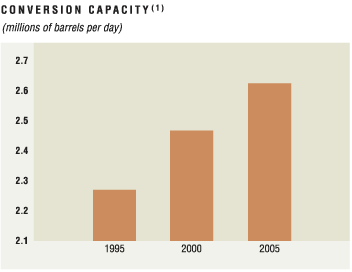 |
| | | |
| (1) ExxonMobil on a 100% basis, excluding divestments. | | (1) ExxonMobil on a 100% basis, excluding divestments. Conversion includes cat cracking, hydrocracking, and coking. |
76 EXXON MOBIL CORPORATION§ 2005 FINANCIAL & OPERATING REVIEW
THROUGHPUT, CAPACITY, AND UTILIZATION(1)
| | | | | | | | | | | | | | | | | | | | | |
| | | 2005 | | | 2004 | | | 2003 | | | 2002 | | | 2001 | |
| |
Refinery Throughput(2)(thousands of barrels per day) | | | | | | | | | | | | | | | | | | | | |
| United States | | | 1,794 | | | | 1,850 | | | | 1,806 | | | | 1,834 | | | | 1,811 | |
| Canada | | | 466 | | | | 468 | | | | 450 | | | | 447 | | | | 449 | |
| Europe | | | 1,672 | | | | 1,663 | | | | 1,566 | | | | 1,539 | | | | 1,563 | |
| Japan | | | 691 | | | | 685 | | | | 704 | | | | 671 | | | | 707 | |
| Asia Pacific excluding Japan | | | 799 | | | | 738 | | | | 686 | | | | 708 | | | | 729 | |
| Latin America/Other | | | 301 | | | | 309 | | | | 298 | | | | 244 | | | | 283 | |
| |
Total worldwide | | | 5,723 | | | | 5,713 | | | | 5,510 | | | | 5,443 | | | | 5,542 | |
| |
| | | | | | | | | | | | | | | | | | | | | |
Average Refinery Capacity(3)(thousands of barrels per day) | | | | | | | | | | | | | | | | | | | | |
| United States | | | 1,949 | | | | 1,940 | | | | 1,919 | | | | 1,895 | | | | 1,878 | |
| Canada | | | 502 | | | | 502 | | | | 501 | | | | 500 | | | | 499 | |
| Europe | | | 1,803 | | | | 1,786 | | | | 1,768 | | | | 1,756 | | | | 1,740 | |
| Japan | | | 769 | | | | 772 | | | | 774 | | | | 770 | | | | 761 | |
| Asia Pacific excluding Japan | | | 997 | | | | 1,014 | | | | 1,027 | | | | 1,048 | | | | 1,045 | |
| Latin America/Other | | | 323 | | | | 317 | | | | 308 | | | | 299 | | | | 310 | |
| |
Total worldwide | | | 6,343 | | | | 6,331 | | | | 6,297 | | | | 6,268 | | | | 6,233 | |
| |
| | | | | | | | | | | | | | | | | | | | | |
Utilization of Refining Capacity(percent) | | | | | | | | | | | | | | | | | | | | |
| United States | | | 92 | | | | 95 | | | | 94 | | | | 97 | | | | 96 | |
| Canada | | | 93 | | | | 93 | | | | 90 | | | | 89 | | | | 90 | |
| Europe | | | 93 | | | | 93 | | | | 89 | | | | 88 | | | | 90 | |
| Japan | | | 90 | | | | 89 | | | | 91 | | | | 87 | | | | 93 | |
| Asia Pacific excluding Japan | | | 80 | | | | 73 | | | | 67 | | | | 68 | | | | 70 | |
| Latin America/Other | | | 93 | | | | 97 | | | | 97 | | | | 82 | | | | 91 | |
| |
Total worldwide | | | 90 | | | | 90 | | | | 88 | | | | 87 | | | | 89 | |
| |
| | |
| (1) | | Excludes ExxonMobil’s minor interests in certain small refineries. |
| |
| (2) | | Refinery throughput includes 100 percent of crude oil and feedstocks sent directly to atmospheric distillation units in operations of ExxonMobil and majority-owned subsidiaries. For companies owned 50 percent or less, throughput includes the greater of either crude and feedstocks processed for ExxonMobil or ExxonMobil’s equity interest in raw material inputs. |
| |
| (3) | | Refinery capacity is the stream-day capability to process inputs to atmospheric distillation units under normal operating conditions, less the impact of shutdowns for regular repair and maintenance activities, averaged over an extended period of time. These annual averages include partial-year impacts for capacity additions or deletions during the year. Any idle capacity that cannot be made operable in a month or less has been excluded. Capacity volumes include 100 percent of the capacity of refinery facilities managed by ExxonMobil or majority-owned subsidiaries. At facilities of companies owned 50 percent or less, the greater of either that portion of capacity normally available to ExxonMobil or ExxonMobil’s equity interest is included. |
EXXON MOBIL CORPORATION§ 2005 FINANCIAL & OPERATING REVIEW 77
RETAIL SITES
| | | | | | | | | | | | | | | | | | | | | |
| | | | | | | | | | | | | | | |
| (number of sites at year end) | | 2005 | | | 2004 | | | 2003 | | | 2002 | | | 2001 | |
| |
United States | | | | | | | | | | | | | | | | | | | | |
| Owned/leased | | | 2,544 | | | | 2,698 | | | | 3,072 | | | | 3,346 | | | | 3,501 | |
| Distributors/resellers | | | 8,992 | | | | 9,421 | | | | 9,401 | | | | 9,787 | | | | 9,805 | |
| |
Canada | | | | | | | | | | | | | | | | | | | | |
| Owned/leased | | | 690 | | | | 720 | | | | 787 | | | | 865 | | | | 927 | |
| Distributors/resellers | | | 1,288 | | | | 1,258 | | | | 1,287 | | | | 1,283 | | | | 1,324 | |
| |
Europe | | | | | | | | | | | | | | | | | | | | |
| Owned/leased | | | 4,569 | | | | 4,727 | | | | 4,817 | | | | 4,955 | | | | 5,079 | |
| Distributors/resellers | | | 3,022 | | | | 3,154 | | | | 3,582 | | | | 3,813 | | | | 3,960 | |
| |
Asia Pacific | | | | | | | | | | | | | | | | | | | | |
| Owned/leased | | | 2,795 | | | | 2,912 | | | | 2,912 | | | | 3,026 | | | | 3,125 | |
| Distributors/resellers | | | 5,662 | | | | 5,888 | | | | 6,318 | | | | 6,682 | | | | 7,171 | |
| |
Latin America | | | | | | | | | | | | | | | | | | | | |
| Owned/leased | | | 1,325 | | | | 1,388 | | | | 1,429 | | | | 1,449 | | | | 1,440 | |
| Distributors/resellers | | | 3,155 | | | | 3,437 | | | | 3,891 | | | | 4,465 | | | | 4,427 | |
| |
Middle East/Africa | | | | | | | | | | | | | | | | | | | | |
| Owned/leased | | | 933 | | | | 1,214 | | | | 1,360 | | | | 1,443 | | | | 1,444 | |
| Distributors/resellers | | | 457 | | | | 557 | | | | 632 | | | | 672 | | | | 650 | |
| |
Total | | | | | | | | | | | | | | | | | | | | |
| Owned/leased | | | 12,856 | | | | 13,659 | | | | 14,377 | | | | 15,084 | | | | 15,516 | |
| Distributors/resellers | | | 22,576 | | | | 23,715 | | | | 25,111 | | | | 26,702 | | | | 27,337 | |
| |
Total worldwide | | | 35,432 | | | | 37,374 | | | | 39,488 | | | | 41,786 | | | | 42,853 | |
| |
78 EXXON MOBIL CORPORATION§ 2005 FINANCIAL & OPERATING REVIEW
PETROLEUM PRODUCT SALES(1)BY GEOGRAPHIC AREA
| | | | | | | | | | | | | | | | | | | | | |
| | | | | | | | | | | | | | | |
| (thousands of barrels per day) | | 2005 | | | 2004 | | | 2003 | | | 2002 | | | 2001 | |
| |
United States | | | | | | | | | | | | | | | | | | | | |
| Motor gasoline, naphthas | | | 1,704 | | | | 1,695 | | | | 1,606 | | | | 1,608 | | | | 1,585 | |
| Heating oils, kerosene, diesel oils | | | 529 | | | | 484 | | | | 456 | | | | 432 | | | | 442 | |
| Aviation fuels | | | 259 | | | | 250 | | | | 234 | | | | 256 | | | | 261 | |
| Heavy fuels | | | 90 | | | | 98 | | | | 93 | | | | 92 | | | | 102 | |
| Lubricants, specialty, and other petroleum products | | | 333 | | | | 345 | | | | 340 | | | | 343 | | | | 361 | |
| Total United States | | | 2,915 | | | | 2,872 | | | | 2,729 | | | | 2,731 | | | | 2,751 | |
| |
| | | | | | | | | | | | | | | | | | | | | |
Canada | | | | | | | | | | | | | | | | | | | | |
| Motor gasoline, naphthas | | | 257 | | | | 250 | | | | 249 | | | | 246 | | | | 238 | |
| Heating oils, kerosene, diesel oils | | | 184 | | | | 186 | | | | 184 | | | | 176 | | | | 173 | |
| Aviation fuels | | | 31 | | | | 33 | | | | 29 | | | | 27 | | | | 30 | |
| Heavy fuels | | | 38 | | | | 37 | | | | 36 | | | | 31 | | | | 35 | |
| Lubricants, specialty, and other petroleum products | | | 110 | | | | 109 | | | | 104 | | | | 113 | | | | 109 | |
| Total Canada | | | 620 | | | | 615 | | | | 602 | | | | 593 | | | | 585 | |
| |
| | | | | | | | | | | | | | | | | | | | | |
Europe | | | | | | | | | | | | | | | | | | | | |
| Motor gasoline, naphthas | | | 527 | | | | 557 | | | | 558 | | | | 571 | | | | 584 | |
| Heating oils, kerosene, diesel oils | | | 907 | | | | 895 | | | | 840 | | | | 815 | | | | 823 | |
| Aviation fuels | | | 196 | | | | 203 | | | | 197 | | | | 192 | | | | 201 | |
| Heavy fuels | | | 205 | | | | 214 | | | | 217 | | | | 213 | | | | 214 | |
| Lubricants, specialty, and other petroleum products | | | 280 | | | | 270 | | | | 249 | | | | 251 | | | | 257 | |
| Total Europe | | | 2,115 | | | | 2,139 | | | | 2,061 | | | | 2,042 | | | | 2,079 | |
| |
| | | | | | | | | | | | | | | | | | | | | |
Asia Pacific | | | | | | | | | | | | | | | | | | | | |
| Motor gasoline, naphthas | | | 527 | | | | 513 | | | | 523 | | | | 442 | | | | 439 | |
| Heating oils, kerosene, diesel oils | | | 615 | | | | 594 | | | | 599 | | | | 518 | | | | 581 | |
| Aviation fuels | | | 116 | | | | 113 | | | | 109 | | | | 123 | | | | 136 | |
| Heavy fuels | | | 304 | | | | 222 | | | | 218 | | | | 201 | | | | 234 | |
| Lubricants, specialty, and other petroleum products | | | 224 | | | | 247 | | | | 226 | | | | 219 | | | | 219 | |
| Total Asia Pacific | | | 1,786 | | | | 1,689 | | | | 1,675 | | | | 1,503 | | | | 1,609 | |
| |
| | | | | | | | | | | | | | | | | | | | | |
Latin America | | | | | | | | | | | | | | | | | | | | |
| Motor gasoline, naphthas | | | 168 | | | | 181 | | | | 180 | | | | 194 | | | | 198 | |
| Heating oils, kerosene, diesel oils | | | 191 | | | | 209 | | | | 203 | | | | 204 | | | | 211 | |
| Aviation fuels | | | 47 | | | | 46 | | | | 43 | | | | 44 | | | | 48 | |
| Heavy fuels | | | 49 | | | | 44 | | | | 40 | | | | 37 | | | | 52 | |
| Lubricants, specialty, and other petroleum products | | | 25 | | | | 24 | | | | 24 | | | | 23 | | | | 23 | |
| Total Latin America | | | 480 | | | | 504 | | | | 490 | | | | 502 | | | | 532 | |
| |
| | | | | | | | | | | | | | | | | | | | | |
Middle East/Africa | | | | | | | | | | | | | | | | | | | | |
| Motor gasoline, naphthas | | | 91 | | | | 105 | | | | 122 | | | | 115 | | | | 121 | |
| Heating oils, kerosene, diesel oils | | | 134 | | | | 149 | | | | 150 | | | | 147 | | | | 159 | |
| Aviation fuels | | | 51 | | | | 53 | | | | 50 | | | | 49 | | | | 45 | |
| Heavy fuels | | | 25 | | | | 44 | | | | 34 | | | | 30 | | | | 31 | |
| Lubricants, specialty, and other petroleum products | | | 40 | | | | 40 | | | | 44 | | | | 45 | | | | 59 | |
| Total Middle East/Africa | | | 341 | | | | 391 | | | | 400 | | | | 386 | | | | 415 | |
| |
| | | | | | | | | | | | | | | | | | | | | |
Worldwide | | | | | | | | | | | | | | | | | | | | |
| Motor gasoline, naphthas | | | 3,274 | | | | 3,301 | | | | 3,238 | | | | 3,176 | | | | 3,165 | |
| Heating oils, kerosene, diesel oils | | | 2,560 | | | | 2,517 | | | | 2,432 | | | | 2,292 | | | | 2,389 | |
| Aviation fuels | | | 700 | | | | 698 | | | | 662 | | | | 691 | | | | 721 | |
| Heavy fuels | | | 711 | | | | 659 | | | | 638 | | | | 604 | | | | 668 | |
| Lubricants, specialty, and other petroleum products | | | 1,012 | | | | 1,035 | | | | 987 | | | | 994 | | | | 1,028 | |
| |
Total worldwide | | | 8,257 | | | | 8,210 | | | | 7,957 | | | | 7,757 | | | | 7,971 | |
| |
| | |
| (1) | | Petroleum product sales include 100 percent of the sales of ExxonMobil and majority-owned subsidiaries, and the ExxonMobil equity interest in sales by companies owned 50 percent or less. |
EXXON MOBIL CORPORATION§ 2005 FINANCIAL & OPERATING REVIEW 79
PETROLEUM PRODUCT SALES
| | | | | | | | | | | | | | | | | | | | | |
| | | | | | | | | | | | | | | |
| (thousands of barrels per day) | | 2005 | | | 2004 | | | 2003 | | | 2002 | | | 2001 | |
| |
Market and Supply Sales(1) | | | | | | | | | | | | | | | | | | | | |
| Market sales | | | | | | | | | | | | | | | | | | | | |
| Motor gasoline, naphthas | | | 2,186 | | | | 2,248 | | | | 2,273 | | | | 2,288 | | | | 2,270 | |
| Heating oils, kerosene, diesel oils | | | 1,618 | | | | 1,625 | | | | 1,626 | | | | 1,625 | | | | 1,671 | |
| Aviation fuels | | | 475 | | | | 503 | | | | 514 | | | | 529 | | | | 566 | |
| Heavy fuels | | | 387 | | | | 382 | | | | 367 | | | | 358 | | | | 371 | |
| Lubricants, specialty, and other petroleum products | | | 467 | | | | 495 | | | | 483 | | | | 494 | | | | 484 | |
Total market sales | | | 5,133 | | | | 5,253 | | | | 5,263 | | | | 5,294 | | | | 5,362 | |
| |
Total supply sales | | | 3,124 | | | | 2,957 | | | | 2,694 | | | | 2,463 | | | | 2,609 | |
| |
Total market and supply sales | | | 8,257 | | | | 8,210 | | | | 7,957 | | | | 7,757 | | | | 7,971 | |
| |
| | |
| (1) | | Market sales are to retail site dealers, consumers (including government and military), jobbers, and small resellers. Supply sales are to large oil marketers, large unbranded resellers, and other oil companies. |
PREMIUM BRANDS DRIVE CONSUMER CONFIDENCE
ExxonMobil offers consumers premium products carrying the branding ofExxon,Mobil, andEsso. Additional lines include our industry-leading lubricant lineMobil 1, while service offerings such as ourOn the Runconvenience store format andWash n’ Runcar wash provide motorists with the things they need backed by brands they trust. A recent addition atOn the RunisBengal Traders coffees, featuring a variety of blends, and fast becoming a recognized brand in itself.
80 EXXON MOBIL CORPORATION§ 2005 FINANCIAL & OPERATING REVIEW
The Baton Rouge chemical plant is home of the world’s largest isopropyl alcohol (IPA) plant. ExxonMobil has been in the IPA business for over 80 years and is again expanding this plant to meet the growing needs of global customers.
| | | | | | | | | | | | | | | | | | | | | |
| Statistical Recap | | 2005 | | | 2004 | | | 2003 | | | 2002 | | | 2001 | |
| |
| | | |
Earnings(1)(millions of dollars) | | | 3,943 | | | | 3,428 | | | | 1,432 | | | | 830 | | | | 882 | |
Prime product sales(2)(thousands of metric tons) | | | 26,777 | | | | 27,788 | | | | 26,567 | | | | 26,606 | | | | 25,780 | |
Average capital employed(millions of dollars) | | | 14,064 | | | | 14,608 | | | | 14,099 | | | | 13,645 | | | | 13,839 | |
Return on average capital employed(percent) | | | 28.0 | | | | 23.5 | | | | 10.2 | | | | 6.1 | | | | 6.4 | |
Capital expenditures(millions of dollars) | | | 654 | | | | 690 | | | | 692 | | | | 954 | | | | 872 | |
| | |
| (1) | | 2001 earnings include a $175 million extraordinary gain on asset divestitures. |
| |
| (2) | | Prime product sales include ExxonMobil’s share of equity company volumes and finished-product transfers to the Downstream. Carbon-black oil volumes are excluded. |
EXXON MOBIL CORPORATION§ 2005 FINANCIAL & OPERATING REVIEW 81
CHEMICAL STRATEGIES
ExxonMobil Chemical has produced industry-leading returns and earnings growth through the effective implementation of our fundamental strategies, which have been proven over several decades. We remain committed to these strategies across changing business environments:
| § | | Focus on businesses that capitalize on core competencies; |
| |
| § | | Capture full benefits of integration across ExxonMobil operations; |
| |
| § | | Continuously reduce costs to achieve best-in-class performance; |
| |
| § | | Build proprietary technology positions; and, |
| |
| § | | Selectively invest in advantaged projects. |
These strategies reflect our commitment to the industry, and they remain the foundation for our business, and ultimately, our performance.
2005 RESULTS AND HIGHLIGHTS
Total 2005 earnings of $3.9 billion were up 15 percent versus 2004.Earnings included $540 million from the sale of Sinopec shares and joint-venture litigation. In generating these strong financial results, ExxonMobil continued to benefit from our unique mix of businesses, broad geographic coverage, and feedstock and integration advantages.
Return on average capital employed reached 28 percent, up from 23 percent in 2004.ExxonMobil Chemical returns continue to exceed the average of our major chemical competitors. Over the last 10 years, our chemical segment has achieved an average return of 14 percent while making substantial investments to support long-term growth. During the same period, our competitors averaged 8 percent.
2005 prime product sales volume of 27 million tons was 4 percent lower than the 2004 record. Industry-wide inventory reduction during the first half of the year, combined with the impact of Hurricanes Katrina and Rita, challenged sales in an otherwise stable global economic market. Our chemical sales in Asia grew 4 percent, with sales in China up 18 percent, supported by the high reliability of our operations.
Capital expenditures were $650 million.The company continued to invest selectively in high-return efficiency projects, low-cost debottlenecks, and projects to support the growth of its specialty businesses.
Announced plans for a second steam cracker and derivative units to supply growing Asia Pacific market needs.This project would be located at our existing complex in Singapore, which is strategically positioned to serve the high-growth markets in Asia, especially China.
(1) Chemical competitor values are estimated on a consistent
basis with ExxonMobil, based on public information.
82 EXXON MOBIL CORPORATION§ 2005 FINANCIAL & OPERATING REVIEW
Focused Strategies
Our long-term strategies have produced competitive advantages that have resulted in superior returns versus competition across the business cycle. This strong performance is derived from our unique business mix, investment discipline, Upstream and Downstream integration, world-class operations, leading proprietary technologies, and product application expertise. Our strategies are designed to deliver earnings growth and attractive returns, strengthening our position as the world’s premier petrochemical company.
PREMIER PETROCHEMICAL COMPANY
| | | | | |
Return on average capital employed(10-year) | | 14 percent |
| Businesses ranked 1 or 2 by market position | | > 90 percent |
Capital employed(at year end) | | $13 billion |
Prime product sales(tons) | | 27 million |
| Percent integrated capacity | | >90 percent |
| Product marketing scope | | >150 countries |
BUSINESSES
| | | | | |
| | | Worldwide Rank | |
| | | Based on Market Position | |
nCommodities | | | | |
| Paraxylene | | | #1 | |
| Olefins | | | #2 | |
| Polyethylene | | | #2 | |
| Polypropylene | | | #5 | |
| | | | | |
nSpecialties | | | | |
| Butyl Polymers | | | #1 | |
| Fluids | | | #1 | |
| Plasticizers/Oxo | | | #1 | |
| Synthetics | | | #1 | |
| Oriented Polypropylene Films | | | #1 | |
| Adhesive Polymers | | | #1 | |
| Ethylene Elastomers | | | #2 | |
| Petroleum Additives | | | #2 | |
CAPITALIZING ON CORE COMPETENCIES
ExxonMobil’s unique mix of chemical businesses delivers superior performance relative to competition throughout the business cycle.
The company holds strong positions in the supply chain for many of the largest-volume and highest-growth petrochemicals in the global economy. Specifically, we are:
| § | | One of the largest producers of olefins, the basic petrochemical building blocks; |
| § | | The largest worldwide producer of polyolefins, including polyethylene, the largest-volume plastic; and polypropylene, one of the fastest-growing and most versatile polymers; and, |
| § | | The largest global producer of paraxylene and benzene. Paraxylene is one of the fastest-growing petrochemicals and the main raw material for the manufacture of polyester fibers and polyethylene terephthalate (PET) recyclable bottles. Benzene is a primary building block for a broad array of products ranging from nylon to polystyrene. |
The company also has a premier position in a diverse portfolio of less-cyclical specialty businesses. These include butyl polymers, ethylene elastomers, synthetic lube basestock fluids, petroleum additives, oriented polypropylene film, plasticizers, hydrocarbon and oxygenated fluids, oxo-alcohols, acids, and adhesive polymers. Strong competitive advantages are derived through unique combinations of low-cost feedstocks, proprietary technology, operational excellence, product application expertise and synergies across businesses. ExxonMobil continues to grow profitably and strengthen these businesses through new products with advanced performance attributes and by expansion into new markets.
EXXON MOBIL CORPORATION§ 2005 FINANCIAL & OPERATING REVIEW 83
CAPTURING FULL BENEFITS OF INTEGRATION
More than 90 percent of our owned and operated chemical capacity is integrated with large refining complexes or Upstream gas processing plants. ExxonMobil’s long-standing emphasis on integration is a key differentiator versus competition. Manufacturing sites are designed and managed to maximize synergies via optimized molecule management, coordinated technology development, joint facilities planning and sharing of common systems and support functions.
The flexibility derived from feedstock and fuels integration with world-scale refineries enables ExxonMobil Chemical to outperform competition. At our largest petrochemical complexes, more than 60 streams are transferred between the refinery and the chemical plants. Production and supply plans are continuously optimized using sophisticated models on both a regional and global level in response to changes in feedstock costs and market conditions. These benefits are not easily duplicated without common ownership and co-location of the refining and chemical facilities.
CONTINUALLY REDUCE COSTSTO ACHIEVE BEST IN CLASS PERFORMANCE
The company maintains a consistent and relentless focus on improving efficiency and reducing the costs of manufacturing, selling, and distributing its products.
The company’s disciplined approach to safety, productivity, reliability, and quality improvement has continually increased the contribution of existing assets. Structured programs that identify and rapidly capture process efficiencies support earnings growth by maximizing unit throughput, minimizing production upsets, and increasing effective capacity at significantly less than grass-roots cost.
Energy efficiencies and savings opportunities are being identified and captured at ExxonMobil facilities through the extensive use of our Global Energy Management System, a corporate-wide set of best practices and technologies. The energy consumed per unit of product output has decreased by more than 6 percent over the last three years.
Our Global Enterprise Management System supports business processes used by ExxonMobil Chemical, facilitating common business practices across our global operations. It is a major source of efficiency and a key contributor to our marketing excellence initiatives, enabling improved service to our customers.
BUILDING ON TECHNOLOGY LEADERSHIP
Technology is a major source of competitive advantage and differentiation. Our goal is to provide value to our customers by better understanding their needs and meeting their expectations through focused product innovation and application support.
84 EXXON MOBIL CORPORATION§ 2005 FINANCIAL & OPERATING REVIEW
SELECTIVELY INVESTING IN ADVANTAGED PROJECTS
In 2005, the company continued to focus on growth of our specialty businesses, low-cost debottleneck projects, and high-return efficiency projects. Low-cost expansion projects have added incremental capacity equivalent to one world-class steam cracker over the past three years.
In addition, planning progressed for several world-scale advantaged projects which would provide attractive new capacity to serve growth markets.
Positioning the Chemical Company for Profitable Growth
Growth of the Specialty Businesses
| § | | Expansions ofExxprospecialty elastomers production at Baytown, Texas, and halobutyl production at Kashima, Japan, demonstrate our commitment to the tire industry, support our global supply strategy, and strengthen our ability to meet growing demand in Asia. |
| § | | Low-cost debottlenecks of our Baton Rouge isopropyl alcohol plant and Singapore oxo-alcohol plant will enable us to continue to grow and respond to customers’ needs worldwide. |
Expansions to Existing Facilities
| § | | The Singapore and Kemya steam crackers, and some of their associated derivative units, are being debottlenecked to meet the growing demand of our customers in Asia. |
| § | | A debottleneck of the polypropylene plant in Baton Rouge is planned for 2006 to meet strong demand for this versatile polymer. |
Major Projects
| § | | Project development activities continued on the Fujian integrated refining, petrochemical, and fuels marketing joint venture. This is the only fully integrated project in China and would involve construction of an 800 thousand-ton-per-year ethylene steam cracker, polyethylene and polypropylene units, and a 700 thousand-ton-per-year paraxylene unit. |
| |
| § | | The study for a second world-scale steam cracker in Singapore to supply growing market needs in the Asia Pacific region continues, and detailed project definition is under way. The project scope includes associated derivative units, including new world-scale polyethylene, polypropylene, and specialty elastomers plants, an aromatics extraction unit and an oxo-alcohol expansion. |
| § | | A joint feasibility study for a world-scale petrochemical complex is progressing between Qatar Petroleum and ExxonMobil. The complex would utilize feedstock from new gas development projects in Qatar’s North Field and supply competitively-advantaged products to Asia and Europe. |
| § | | ExxonMobil continues to explore additional opportunities for advantaged growth to support increasing global petrochemical demand. |
PROJECT START-UPS
| | | | | | | | | | | |
| | | | | | | | | Capacity(1) | |
| | | | | | | | | (metric tons | |
| | | | | Location | | per year) | |
| Olefins/Polyolefins | | | | | | | | |
| 2005 | | Ethylene (50% interest) | | Yanpet | | | 78,000 | |
| 2005 | | Polyethylene (50% interest) | | Yanpet | | | 47,000 | |
| 2006 | | Ethylene (50% interest) | | Kemya | | | 30,000 | |
| 2006 | | Ethylene | | Singapore | | | 75,000 | |
| 2006 | | Polyethylene | | Singapore | | | 45,000 | |
| 2006 | | Polypropylene | | Baton Rouge, Louisiana | | | 60,000 | |
| | | | | | | | | | | |
| Specialty Businesses | | | | | | | | |
| 2005 | | Coated OPP Film | | Virton, Belgium | | | 16,000 | |
| 2006 | | Thermoplastic Elastomers | | Pensacola, Florida | | 1 line | |
| 2006 | | Polyethylene Film | | Nasu, Japan | | | 25,000 | (2) |
| 2006 | | Oxo-Alcohols | | Singapore | | | 40,000 | |
| 2006 | | Isopropyl Alcohol | | Baton Rouge, Louisiana | | | 40,000 | |
| 2006 | | Halobutyl Rubber (50% interest) | | Kashima, Japan | | | 8,500 | |
| 2006 | | Specialty Elastomers | | Baytown, Texas | | 1 line | |
| | |
| (1) | | ExxonMobil equity share of capacity addition. |
| |
| (2) | | Thousand square meters per year. |
EXXON MOBIL CORPORATION§ 2005 FINANCIAL & OPERATING REVIEW 85
Key Products — Meeting Diverse Consumer Needs
In addition to being a premier supplier of olefins, polyolefins and aromatics, ExxonMobil Chemical has strong market positions in a wide variety of other petrochemicals.
86 EXXON MOBIL CORPORATION§ 2005 FINANCIAL & OPERATING REVIEW
Chemical Operating Statistics
LARGE/INTEGRATED PRODUCTION COMPLEXES (BASED ON SIZE OR BREADTH OF PRODUCT SLATE)
| | | | | | | | | | | | | | | | | | | | | | | | | | | | | | | | | | | | | | | | | | | | | |
| Capacity(millions of tons per year) | | Ethylene | | | Paraxylene | | | Polyethylene | | | Polypropylene | | | Additional Products | |
| |
North America | | | | | | | | | | | | | | | | | | | | | | | | | | | | | | | | | | | | | | | | | | | | |
| Baton Rouge, Louisiana | | | 1.0 | | | | — | | | | 1.3 | | | | 0.4 | | | P | | | | | B | | | | E | | | | A | | | | F | | | | O | | | | | |
| Baytown, Texas | | | 2.2 | | | | 0.6 | | | | — | | | | 0.8 | | | P | | | | | B | | | | | | | | | | | | F | | | | | | | | | |
| Beaumont, Texas | | | 0.8 | | | | 0.3 | | | | 1.0 | | | | — | | | P | | | | | | | | | | | | | | | | | | | | | | | | | S | |
| Mont Belvieu, Texas | | | — | | | | — | | | | 1.0 | | | | — | | | | | | | | | | | | | | | | | | | | | | | | | | | | | |
| Sarnia, Ontario | | | 0.3 | | | | — | | | | 0.5 | | | | — | | | P | | | | | | | | | | | | | | | | | F | | | | O | | | | | |
| | | | | | | | | | | | | | | | | | | | | | | | | | | | | | | | | | | | | | | | | | | | | |
Europe | | | | | | | | | | | | | | | | | | | | | | | | | | | | | | | | | | | | | | | | | | | | |
| Antwerp, Belgium | | | 0.5 | | | | — | | | | 0.3 | | | | — | | | P | | | | | | | | | | | | | | | | | F | | | | O | | | | | |
| Fawley, England | | | 0.1 | | | | — | | | | — | | | | — | | | P | | | | | B | | | | | | | | | | | | F | | | | O | | | | | |
| Fife, Scotland | | | 0.4 | | | | — | | | | — | | | | — | | | | | | | | | | | | | | | | | | | | | | | | | | | | | |
| Meerhout, Belgium | | | — | | | | — | | | | 0.5 | | | | — | | | | | | | | | | | | | | | | | | | | | | | | | | | | | |
| Notre-Dame-de-Gravenchon, France | | | 0.4 | | | | — | | | | 0.4 | | | | 0.4 | | | P | | | | | B | | | | E | | | | A | | | | | | | | O | | | | S | |
| Rotterdam, the Netherlands | | | — | | | | 0.6 | | | | — | | | | — | | | | | | | | | | | | | | | | | | | | | | | | O | | | | | |
| | | | | | | | | | | | | | | | | | | | | | | | | | | | | | | | | | | | | | | | | | | | | |
Middle East | | | | | | | | | | | | | | | | | | | | | | | | | | | | | | | | | | | | | | | | | | | | |
| Al-Jubail, Saudi Arabia | | | 0.6 | | | | — | | | | 0.6 | | | | — | | | | | | | | | | | | | | | | | | | | | | | | | | | | | |
| Yanbu, Saudi Arabia | | | 1.0 | | | | — | | | | 0.6 | | | | 0.2 | | | P | | | | | | | | | | | | | | | | | | | | | | | | | | |
| | | | | | | | | | | | | | | | | | | | | | | | | | | | | | | | | | | | | | | | | | | | | |
Asia Pacific | | | | | | | | | | | | | | | | | | | | | | | | | | | | | | | | | | | | | | | | | | | | |
| Kawasaki, Japan | | | 0.5 | | | | — | | | | 0.1 | | | | — | | | P | | | | | B | | | | | | | | A | | | | F | | | | | | | | | |
| Singapore | | | 0.8 | | | | 0.8 | | | | 0.6 | | | | 0.4 | | | P | | | | | | | | | | | | | | | | | F | | | | O | | | | | |
| Sriracha, Thailand | | | — | | | | 0.5 | | | | — | | | | — | | | | | | | | | | | | | | | | | | | | F | | | | | | | | | |
| All other | | | 0.6 | | | | 0.6 | | | | 0.2 | | | | — | | | | | | | | | | | | | | | | | | | | | | | | | | | | | |
| |
Total worldwide | | | 9.2 | | | | 3.4 | | | | 7.1 | | | | 2.2 | | | | | | | | | | | | | | | | | | | | | | | | | | | | | |
| |
PPropylene BButyl EEthylene Elastomers AAdhesive Polymers FFluids OOxo SSynthetics
OTHER MANUFACTURING LOCATIONS(1)
| | | | | | | | | | | | | | | | | |
| Location | | | | | | Product |
| |
North America | | | | | | | | | | | | | | | | |
Bayway, New Jersey(2) | | | | | | | | | | | l | | | | | |
| Belleville, Ontario | | | | | | | | | | | | | | | u | |
| Chalmette, Louisiana | | | n | | | | | | | | | | | | | |
| Dartmouth, Nova Scotia | | | | | | | | | | | l | | | | | |
| Edison, New Jersey | | | | | | | | | | | l | | | | | |
Houston, Texas(2) | | | n | | | | | | | | | | | | | |
| Jeffersonville, Indiana | | | | | | | 5 | | | | | | | | | |
| Joliet, Illinois | | | n | | | | | | | | | | | | | |
| LaGrange, Georgia | | | | | | | | | | | | | | | u | |
| Pensacola, Florida | | | | | | | 5 | | | | | | | | | |
| Plaquemine, Louisiana | | | | | | | 5 | | | | | | | | | |
| Shawnee, Oklahoma | | | | | | | | | | | | | | | u | |
| Stratford, Connecticut | | | | | | | | | | | | | | | u | |
| | | | | | | | | | | | | | | | | |
Latin America | | | | | | | | | | | | | | | | |
| Campana, Argentina | | | n | | | | | | | | l | | | | | |
| Managua, Nicaragua | | | | | | | | | | | l | | | | | |
| Paulinia, Brazil | | | | | | | | | | | l | | | | | |
| | | | | | | | | | | | | | | | | |
Europe | | | | | | | | | | | | | | | | |
| Amsterdam, the Netherlands | | | | | | | | | | | l | | | | | |
| Augusta, Italy | | | n | | | | | | | | | | | | | |
| Brindisi, Italy | | | | | | | | | | | | | | | u | |
| Cologne, Germany | | | | | | | 5 | | | | | | | | | |
| Fos-sur-Mer, France | | | n | | | | | | | | | | | | | |
| Geleen, the Netherlands | | | | | | | 5 | | | | | | | | | |
Harnes, France(2) | | | | | | | | | | | l | | | | | |
| Ingolstadt, Germany | | | n | | | | | | | | | | | | | |
| Karlsruhe, Germany | | | n | | | | | | | | | | | | | |
| Kerkrade, the Netherlands | | | | | | | | | | | | | | | u | |
| Newport, Wales | | | | | | | 5 | | | | | | | | | |
| Trecate, Italy | | | | | | | | | | | l | | | | | |
| Virton, Belgium | | | | | | | | | | | | | | | u | |
| | | | | | | | | | | | | | | | | |
Asia Pacific | | | | | | | | | | | | | | | | |
Adelaide, Australia(2) | | | | | | | | | | | l | | | | | |
Altona, Australia(3) | | | n | | | | 5 | | | | | | | | | |
Botany Bay, Australia(3) | | | n | | | | 5 | | | | | | | | | |
| Jinshan, China | | | | | | | 5 | | | | | | | | | |
| Kashima, Japan | | | | | | | 5 | | | | | | | | | |
| Nasu, Japan | | | | | | | | | | | | | | | u | |
| Panyu, China | | | | | | | | | | | l | | | | | |
| Sakai, Japan | | | n | | | | | | | | l | | | | | |
| Wakayama, Japan | | | n | | | | | | | | | | | | | |
| | |
| (1) | | Includes joint-venture plants, with the exception of the Infineum additives joint ventures. |
| |
| (2) | | Facility mothballed. |
| |
| (3) | | Qenos joint venture sold on February 16, 2006. |
| |
| n | | Olefins/Aromatics |
| |
| 5 | | Polymers |
| |
| l | | Other Chemicals |
| |
| u | | Films |
EXXON MOBIL CORPORATION§ 2005 FINANCIAL & OPERATING REVIEW 87
VOLUMES
| | | | | | | | | | | | | | | | | | | | | |
| Includes ExxonMobil’s share of equity companies | | 2005 | | | 2004 | | | 2003 | | | 2002 | | | 2001 | |
| |
Worldwide Production Volumes(thousands of metric tons) | | | | | | | | | | | | | | | | | | | | |
| Ethylene | | | 7,930 | | | | 8,271 | | | | 7,567 | | | | 7,539 | | | | 7,320 | |
| Polyethylene | | | 6,213 | | | | 6,248 | | | | 6,091 | | | | 6,235 | | | | 5,768 | |
| Polypropylene | | | 1,680 | | | | 1,885 | | | | 1,965 | | | | 1,944 | | | | 1,701 | |
| Paraxylene | | | 2,785 | | | | 2,826 | | | | 2,531 | | | | 2,275 | | | | 2,088 | |
| | | | | | | | | | | | | | | | | | | | | |
Prime Product Sales Volumes(1)(thousands of metric tons) | | | | | | | | | | | | | | | | | | | | |
Americas(2) | | | 11,523 | | | | 12,842 | | | | 11,939 | | | | 12,614 | | | | 12,278 | |
| Europe/Middle East/Africa | | | 7,310 | | | | 7,334 | | | | 7,180 | | | | 7,002 | | | | 6,661 | |
| Asia Pacific | | | 7,944 | | | | 7,612 | | | | 7,448 | | | | 6,990 | | | | 6,841 | |
| |
Total worldwide | | | 26,777 | | | | 27,788 | | | | 26,567 | | | | 26,606 | | | | 25,780 | |
| |
| | | | | | | | | | | | | | | | | | | | | |
Prime Product Sales Volumes(1)(thousands of metric tons) | | | | | | | | | | | | | | | | | | | | |
| Less-cyclical specialty businesses | | | 6,083 | | | | 6,324 | | | | 6,113 | | | | 6,022 | | | | 5,711 | |
| Olefins/polyolefins/aromatics/other | | | 20,694 | | | | 21,464 | | | | 20,454 | | | | 20,584 | | | | 20,069 | |
| |
Total | | | 26,777 | | | | 27,788 | | | | 26,567 | | | | 26,606 | | | | 25,780 | |
| |
| | |
| (1) | | Prime product sales include ExxonMobil’s share of equity-company volumes and finished product transfers to the Downstream. Carbon-black oil volumes are excluded. |
| |
| (2) | | Includes the United States, Canada, and Latin America. |
88 EXXON MOBIL CORPORATION§ 2005 FINANCIAL & OPERATING REVIEW
Frequently Used Terms
Listed below are definitions of several of ExxonMobil’s key business and financial performance measures and other terms. These definitions are provided to facilitate understanding of the terms and their calculation. In the case of financial measures that we believe constitute “non-GAAP financial measures” under Securities and Exchange Commission Regulation G, we provide a reconciliation to the most comparable Generally Accepted Accounting Principles (GAAP) measure and other information required by that rule.
EARNINGS EXCLUDING MERGER EXPENSES, DISCONTINUED OPERATIONS,
ACCOUNTING CHANGE, AND OTHER SPECIAL ITEMS
In addition to reporting U.S. GAAP defined net income, ExxonMobil also presents a measure of earnings that excludes merger effects, earnings from discontinued operations, a required accounting change, and other special items quantified and described in our quarterly and annual earnings press releases. Earnings excluding the aforementioned items is a non-GAAP financial measure, and is included to facilitate comparisons of base business performance across periods. A reconciliation to net income is shown on page 16. We also refer to earnings excluding merger expenses, discontinued operations, accounting changes, and other special items as normalized earnings. Earnings per share amounts use the same average common shares outstanding as used for the calculation of net income per common share and net income per common share — assuming dilution.
OPERATING COSTS
Operating costs are the combined total of production, manufacturing, selling, general, administrative, exploration, depreciation, and depletion expenses from the Consolidated Statement of Income and ExxonMobil’s share of similar costs for equity companies. Operating costs are the costs during the period to produce, manufacture, and otherwise prepare the company’s products for sale — including energy costs, staffing, maintenance, and other costs to explore for and produce oil and gas, and operate refining and chemical plants. Distribution and marketing expenses are also included. Operating costs exclude the cost of raw materials, taxes, merger expenses, discontinued operations, and interest expense. These expenses are on a before-tax basis. While ExxonMobil’s management is responsible for all revenue and expense elements of net income, operating costs, as defined below, represent the expenses most directly under management’s control. Information regarding these costs is therefore useful for investors and ExxonMobil management in evaluating management’s performance.
Reconciliation of Operating Costs
| | | | | | | | | | | | | |
| (millions of dollars) | | 2005 | | | 2004 | | | 2003 | |
| |
| From ExxonMobil’s Consolidated Statement of Income | | | | | | | | | | | | |
| Total costs and other deductions | | | 311,248 | | | | 256,794 | | | | 214,772 | |
| Less: | | | | | | | | | | | | |
| Crude oil and product purchases | | | 185,219 | | | | 139,224 | | | | 107,658 | |
| Interest expense | | | 496 | | | | 638 | | | | 207 | |
| Excise taxes | | | 30,742 | | | | 27,263 | | | | 23,855 | |
| Other taxes and duties | | | 41,554 | | | | 40,954 | | | | 37,645 | |
| Income applicable to minority and preferred interests | | | 799 | | | | 776 | | | | 694 | |
| |
| Subtotal | | | 52,438 | | | | 47,939 | | | | 44,713 | |
| ExxonMobil’s share of equity-company expenses | | | 4,520 | | | | 4,209 | | | | 3,937 | |
| |
| Total operating costs | | | 56,958 | | | | 52,148 | | | | 48,650 | |
| |
Components of Operating Costs
| | | | | | | | | | | | | |
| (millions of dollars) | | 2005 | | | 2004 | | | 2003 | |
| |
| From ExxonMobil’s Consolidated Statement of Income | | | | | | | | | | | | |
| Production and manufacturing expenses | | | 26,819 | | | | 23,225 | | | | 21,260 | |
| Selling, general, and administrative expenses | | | 14,402 | | | | 13,849 | | | | 13,396 | |
| Depreciation and depletion | | | 10,253 | | | | 9,767 | | | | 9,047 | |
| Exploration expenses, including dry holes | | | 964 | | | | 1,098 | | | | 1,010 | |
| |
| Subtotal | | | 52,438 | | | | 47,939 | | | | 44,713 | |
| ExxonMobil’s share of equity-company expenses | | | 4,520 | | | | 4,209 | | | | 3,937 | |
| |
| Total operating costs | | | 56,958 | | | | 52,148 | | | | 48,650 | |
| |
EXXON MOBIL CORPORATION§ 2005 FINANCIAL & OPERATING REVIEW 89
CAPITAL EMPLOYED
Capital employed is a measure of net investment. When viewed from the perspective of how the capital is used by the businesses, it includes ExxonMobil’s net share of property, plant, and equipment and other assets less liabilities, excluding both short-term and long-term debt. When viewed from the perspective of the sources of capital employed in total for the Corporation, it includes ExxonMobil’s share of total debt and shareholders’ equity. Both of these views include ExxonMobil’s share of amounts applicable to equity companies, which the Corporation believes should be included to provide a more comprehensive measure of capital employed.
| | | | | | | | | | | | | |
| (millions of dollars) | | 2005 | | | 2004 | | | 2003 | |
| |
| Business uses: asset and liability perspective | | | | | | | | | | | | |
| Total assets | | | 208,335 | | | | 195,256 | | | | 174,278 | |
| Less liabilities and minority share of assets and liabilities | | | | | | | | | | | | |
| Total current liabilities excluding notes and loans payable | | | (44,536 | ) | | | (39,701 | ) | | | (33,597 | ) |
| Total long-term liabilities excluding long-term debt and equity of minority and preferred shareholders in affiliated companies | | | (41,095 | ) | | | (41,554 | ) | | | (37,839 | ) |
| Minority share of assets and liabilities | | | (4,863 | ) | | | (5,285 | ) | | | (4,945 | ) |
| Add ExxonMobil share of debt-financed equity-company net assets | | | 3,450 | | | | 3,914 | | | | 4,151 | |
| |
| Total capital employed | | | 121,291 | | | | 112,630 | | | | 102,048 | |
| |
| | | | | | | | | | | | | |
| Total corporate sources: debt and equity perspective | | | | | | | | | | | | |
| Notes and loans payable | | | 1,771 | | | | 3,280 | | | | 4,789 | |
| Long-term debt | | | 6,220 | | | | 5,013 | | | | 4,756 | |
| Shareholders’ equity | | | 111,186 | | | | 101,756 | | | | 89,915 | |
| Less minority share of total debt | | | (1,336 | ) | | | (1,333 | ) | | | (1,563 | ) |
| Add ExxonMobil share of equity-company debt | | | 3,450 | | | | 3,914 | | | | 4,151 | |
| |
| Total capital employed | | | 121,291 | | | | 112,630 | | | | 102,048 | |
| |
RETURN ON AVERAGE CAPITAL EMPLOYED (ROCE)
Return on average capital employed (ROCE) is a performance measure ratio. From the perspective of the business segments, ROCE is annual business segment earnings divided by average business segment capital employed (average of beginning- and end-of-year amounts). These segment earnings include ExxonMobil’s share of segment earnings of equity companies, consistent with the Corporation’s definition of capital employed and excluding the cost of financing. The Corporation’s total ROCE is net income excluding the after-tax cost of financing, divided by total corporate average capital employed. The Corporation has consistently applied its ROCE definition for many years and views it as the best measure of historical capital productivity in our capital-intensive, long-term industry, both to evaluate management’s performance and to demonstrate to shareholders that capital has been used wisely over the long term. Additional measures, which tend to be more cash-flow based, are used for future investment decisions.
Return on Average Capital Employed
| | | | | | | | | | | | | |
| (millions of dollars) | | 2005 | | | 2004 | | | 2003 | |
| |
| Net income | | | 36,130 | | | | 25,330 | | | | 21,510 | |
| Financing costs (after tax) | | | | | | | | | | | | |
| Third-party debt | | | (1 | ) | | | (137 | ) | | | (69 | ) |
| ExxonMobil share of equity companies | | | (144 | ) | | | (185 | ) | | | (172 | ) |
| All other financing costs – net | | | (295 | ) | | | 54 | | | | 1,775 | (1) |
| |
| Total financing costs | | | (440 | ) | | | (268 | ) | | | 1,534 | |
| |
| Earnings excluding financing costs | | | 36,570 | | | | 25,598 | | | | 19,976 | |
| |
| Average capital employed | | | 116,961 | | | | 107,339 | | | | 95,373 | |
| Return on average capital employed – corporate total | | | 31.3 | % | | | 23.8 | % | | | 20.9 | % |
| | |
| (1) | | “All other financing costs – net” in 2003 includes interest income (after tax) associated with the settlement of a U.S. tax dispute. |
TOTAL SHAREHOLDER RETURN
Shareholder return measures the change in value of an investment in stock over a specified period of time, assuming dividend reinvestment. We calculate shareholder return over a particular measurement period by: dividing (1) the sum of (a) the cumulative value of dividends received during the measurement period, assuming reinvestment, plus (b) the difference between the stock price
90 EXXON MOBIL CORPORATION§ 2005 FINANCIAL & OPERATING REVIEW
at the end and at the beginning of the measurement period; by (2) the stock price at the beginning of the measurement period. For this purpose, we assume dividends are reinvested in stock at market prices at approximately the same time actual dividends are paid. Shareholder return is usually quoted on an annualized basis.
CAPITAL AND EXPLORATION EXPENDITURES (CAPEX)
Capital and exploration expenditures (Capex) are the combined total of additions at cost to property, plant, and equipment and exploration expenses on a before-tax basis from the Consolidated Statement of Income. ExxonMobil’s Capex includes its share of similar costs for equity companies. Capex excludes depreciation on the cost of exploration support equipment and facilities recorded to property, plant, and equipment when acquired. While ExxonMobil’s management is responsible for all investments and elements of net income, particular focus is placed on managing the controllable aspects of this group of expenditures.
FINDING AND RESOURCE–ACQUISITION COSTS
Finding and resource-acquisition costs per oil-equivalent barrel is a performance measure that is calculated using the Exploration portion of Upstream capital and exploration expenditures and proved property acquisition costs divided by resource additions (in oil-equivalent barrels). ExxonMobil refers to new discoveries and acquisitions of discovered resources as resource additions. In addition to proved reserves, resource additions include quantities of oil and gas that are not yet classified as proved reserves, but which ExxonMobil believes will likely be moved into the proved reserves category and produced in the future.
| | | | | | | | | | | | | |
| | | 2005 | | | 2004 | | | 2003 | |
| |
Exploration portion of Upstream capital and exploration expenditures(millions of dollars) | | | 1,693 | | | | 1,283 | | | | 1,215 | |
Proved property acquisition costs(millions of dollars) | | | 174 | | | | 93 | | | | – | |
Total exploration and proved property acquisition costs(millions of dollars) | | | 1,867 | | | | 1,376 | | | | 1,215 | |
Resource additions(millions of oil-equivalent barrels) | | | 4,365 | | | | 2,950 | | | | 2,115 | |
Finding and resource-acquisition costs per oil-equivalent barrel(dollars) | | | 0.43 | | | | 0.47 | | | | 0.57 | |
LIQUIDS AND NATURAL GAS PROVED RESERVES
In this report, we use the term “proved reserves” to mean quantities of oil and gas that ExxonMobil has determined to be reasonably certain of recovery under existing economic and operating conditions on the basis of our long-standing, rigorous management review process. We only book proved reserves when we have made significant funding commitments for the related projects. In this report, we aggregate proved reserves of consolidated and equity companies, excluding royalties and quantities due others, since ExxonMobil does not view these reserves differently from a management perspective. To reflect management’s view of ExxonMobil’s total liquids reserves, proved reserves in this report also include tar-sands reserves from Canadian Syncrude operations, which are reported separately as mining reserves in our SEC filings. Tar-sands reserves included in this report totaled 738 million barrels at year-end 2005, 757 million barrels at year-end 2004, 781 million barrels at year-end 2003, 800 million barrels at year-end 2002, and 821 million barrels at year-end 2001. For our own management purposes and as discussed in this report, we determine proved reserves based on our long-term view of future price levels consistent with our investment decisions. Based on Securities and Exchange Commission guidance, ExxonMobil also began in 2004 to state our results to reflect the impacts on proved reserves of utilizing December 31 liquids and natural gas prices (“year-end price/cost revisions”). On this basis, year-end proved reserves, including year-end price/cost revisions, totaled 22.4 billion oil-equivalent barrels in 2005 and 21.7 billion oil-equivalent barrels in 2004. Excluding year-end price/cost revisions, 2005 proved reserves also totaled 22.4 billion oil-equivalent barrels, while 2004 proved reserves totaled 22.2 billion oil-equivalent barrels.
RESOURCES , RESOURCE BASE , AND RECOVERABLE RESOURCES
Resources, resource base, recoverable oil, recoverable hydrocarbons, recoverable resources, and similar terms used in this report are the total remaining estimated quantities of oil and gas that are expected to be ultimately recoverable. In addition to proved reserves, the resource base includes quantities of oil and gas that are not yet classified as proved reserves, but which ExxonMobil believes will likely be moved into the proved reserves category and produced in the future.
PROVED RESERVES REPLACEMENT RATIO
Proved reserves replacement ratio is a performance measure that is calculated using proved oil-equivalent reserves additions divided by oil-equivalent production. Both proved reserves additions and production include amounts applicable to equity companies. The ratio usually reported by ExxonMobil excludes sales and year-end price/cost revisions, and includes Canadian tar-sands mining operations in both additions and production volumes. See the definition of “liquids and natural gas proved reserves” above. When reporting the ratio, the inclusions and exclusions are listed, as shown on pages 60 and 61.
EXXON MOBIL CORPORATION§ 2005 FINANCIAL & OPERATING REVIEW 91
PROVED RESERVES REPLACEMENT COSTS
Proved reserves replacement costs per oil-equivalent barrel is a performance measure ratio. Proved reserves replacement costs per barrel are costs incurred in property acquisition and exploration, plus costs incurred in development activities divided by proved oil-equivalent reserves additions, excluding sales. Both the costs incurred and the proved reserves additions include amounts applicable to equity companies as well as Canadian tar-sands operations and exclude year-end price/cost revisions. See the definition of “liquids and natural gas proved reserves” on the preceding page.
| | | | | | | | | | | | | |
| (millions of dollars) | | 2005 | | | 2004 | | | 2003 | |
| |
| Costs incurred | | | | | | | | | | | | |
| Property acquisition costs | | | 453 | | | | 134 | | | | 45 | |
| Exploration costs | | | 1,420 | | | | 1,255 | | | | 1,181 | |
| Development costs | | | 10,561 | | | | 9,122 | | | | 9,856 | |
| Total costs incurred | | | 12,434 | | | | 10,511 | | | | 11,082 | |
| |
| | | | | | | | | | | | | |
| (millions of barrels) | | 2005 | | | 2004 | | | 2003 | |
| |
| Proved oil-equivalent reserves additions | | | | | | | | | | | | |
| Revisions | | | 377 | | | | 140 | | | | 619 | |
| Improved recovery | | | 31 | | | | 28 | | | | 116 | |
| Extensions/discoveries | | | 1,461 | | | | 1,809 | | | | 961 | |
| Purchases | | | 122 | | | | 11 | | | | 2 | |
| Total oil-equivalent reserves additions | | | 1,991 | | | | 1,988 | | | | 1,698 | |
| |
| | | | | | | | | | | | | |
| Proved reserves replacement costs | | | 6.25 | | | | 5.29 | | | | 6.53 | |
HEAVY OIL
Heavy oil, for the purpose of this report, includes heavy oil, extra heavy oil, and bitumen, as defined by the World Petroleum Congress in 1987 based on API gravity and viscosity at reservoir conditions. Heavy oil has an API gravity between 10 and 22.3 degrees. The API gravity of extra heavy oil and bitumen is less than 10 degrees. Extra heavy oil has a viscosity less than 10 thousand centipoise, whereas the viscosity of bitumen is greater than 10 thousand centipoise. The term “tar sands” is used to indicate heavy oil (generally bitumen) that is recovered in a mining operation.
CASH FLOW FROM OPERATIONS AND ASSET SALES
Cash flow from operations and asset sales is the sum of the net cash provided by operating activities and proceeds from sales of subsidiaries, investments, and property, plant, and equipment from the Summary Statement of Cash Flows. This cash flow is the total sources of cash from both operating the Corporation’s assets and from the divesting of assets. The Corporation employs a long-standing and regular disciplined review process to ensure that all assets are contributing to the Corporation’s strategic and financial objectives. Assets are divested when they are no longer meeting these objectives, or are worth considerably more to others. Because of the regular nature of this activity, we believe it is useful for investors to consider sales proceeds together with cash provided by operating activities when evaluating cash available for investment in the business and financing activities, including shareholder distributions.
| | | | | | | | | | | | | |
| (millions of dollars) | | 2005 | | | 2004 | | | 2003 | |
| |
| Net cash provided by operating activities | | | 48,138 | | | | 40,551 | | | | 28,498 | |
| Sales of subsidiaries, investments and property, plant, and equipment | | | 6,036 | | | | 2,754 | | | | 2,290 | |
| |
| Cash flow from operations and asset sales | | | 54,174 | | | | 43,305 | | | | 30,788 | |
| |
DISTRIBUTIONS TO SHAREHOLDERS
The Corporation distributed cash to shareholders in the form of both dividends and share purchases. Shares are purchased both to reduce shares outstanding and to offset shares issued in conjunction with company benefit plans and programs. For purposes of calculating distributions to shareholders, the Corporation only includes the cost of those shares purchased to reduce shares outstanding.
| | | | | | | | | | | | | |
| (millions of dollars) | | 2005 | | | 2004 | | | 2003 | |
| |
| Dividends paid to ExxonMobil shareholders | | | 7,185 | | | | 6,896 | | | | 6,515 | |
| Cost of shares purchased to reduce shares outstanding | | | 16,000 | | | | 8,000 | | | | 5,000 | |
| |
| Distributions to ExxonMobil shareholders | | | 23,185 | | | | 14,896 | | | | 11,515 | |
| |
| Memo: Gross cost of shares purchased to offset shares issued under benefit plans and programs | | | 2,221 | | | | 1,951 | | | | 881 | |
92 EXXON MOBIL CORPORATION§ 2005 FINANCIAL & OPERATING REVIEW
Index
| | | | | |
| Acreage | | | 26-29, 58 | |
| Africa | | | 9, 15, 38, 48-49 | |
| Americas gas market | | | 42 | |
| Asia Pacific/Middle East | | | 50, 56-59, 81, 84, 86-87 | |
| | | | | |
| Balance sheet | | | 21 | |
| Business strategies and competitive advantages | | | 4-5, 10-13, 14, 25, 65, 81-82 | |
| |
| Canada | | | 11, 34-35, 44-45, 56-59 | |
| Capital and exploration expenditures | | | 2, 18-19, 24, 90 | |
| Capital employed | | | 2-3, 17, 24-25, 64-65, 80-82, 89 | |
| Cash flow | | | 2-3, 6, 23, 91 | |
| Cash flow statement | | | 23, 91 | |
| Chemical businesses | | | 12, 82 | |
| Chemical capacity | | | 86 | |
| Chemical products | | | 85 | |
| Chemical projects | | | 84 | |
| Chemical results | | | 81 | |
| Chemical volumes and revenues | | | 87 | |
| | | | | |
| Depreciation and depletion | | | 20-23, 62-63 | |
| Dividend and shareholder information | | | 6 | |
| Downstream results | | | 65 | |
| | | | | |
| Earnings | | | 2, 16, 88 | |
| Earnings, oil and gas | | | 62-63 | |
| Earnings per barrel | | | 26 | |
| Energy management | | | 14, 67, 83 | |
| Energy outlook | | | 7-9 | |
| Europe | | | 40, 46-47 | |
| European gas market | | | 40 | |
| | | | | |
| Financial highlights | | | 2 | |
| Finding and resource-acquisition costs | | | 25, 31, 90 | |
| Frequently used terms | | | 88-91 | |
| Fuels marketing | | | 70-71 | |
| | | | | |
| Gas-to-liquids (GTL) | | | 36, 52 | |
| | | | | |
| Heavy oil | | | 9, 30, 32-34, 45, 91 | |
| |
| Income statement | | | 22 | |
| Integration | | | 65-66, 70, 81-83 | |
| | | | | |
| Key financial ratios | | | 2 | |
| | | | | |
| LNG | | | 9, 11, 15, 29, 31, 33, 36, 38-41, 47, 50-53 | |
| Lubricants and Specialties | | | 72-73 | |
| | | | | |
| Molecule management | | | 67, 83 | |
| | | | | |
| Operating costs | | | 20, 88 | |
| | | | | |
| Petroleum product sales | | | 78-79 | |
| Production volumes | | | 56-57 | |
| Property, plant, and equipment | | | 20 | |
| | | | | |
| Refinery utilization | | | 67, 76 | |
| Refining and Supply | | | 66-69 | |
| Refining capacity | | | 74-76 | |
| Reserves and resources | | | 29-32, 59-61, 91 | |
| Reserves replacement costs | | | 61, 90 | |
| Reserves replacement ratio | | | 60-61, 90 | |
| Retail sites | | | 70, 77 | |
| Return on average capital employed | | | 2-3, 17, 24-25, 64-65, 80-81, 89 | |
| Russia/Caspian | | | 54-55 | |
| | | | | |
| Safety, health, and environment | | | 14-15 | |
| Share purchases | | | 6, 91 | |
| South America | | | 45 | |
| | | | | |
| Technology | | | 10-13 | |
| Tight gas | | | 10, 33, 40, 44 | |
| Total shareholder return | | | 2, 6, 89 | |
| | | | | |
| United States | | | 42-43 | |
| Upstream development project summary | | | 39 | |
| Upstream production profile | | | 27 | |
| Upstream results | | | 25 | |
| | | | | |
| Wells, net drilled | | | 58 | |
Exxon Mobil Corporation has numerous affiliates, many with names that includeExxonMobil,Exxon,Mobil, andEsso. For convenience and simplicity, terms like Corporation, company, our, we, and its are sometimes used as abbreviated references to specific affiliates or affiliate groups. Abbreviated references describing global or regional operational organizations and global or regional business lines are also sometimes used for convenience and simplicity. Similarly,ExxonMobilhas business relationships with thousands of customers, suppliers, governments, and others. Words like venture, joint venture, partnership, co-venturer, and partner are used to indicate business or other relationships involving common activities and interests, and those words may not indicate precise legal relationships.
The following terms are trademarks, service marks, or proprietary process names of Exxon Mobil Corporation or its affiliates:AGC-21,Bengal Traders,EMpact,Esso,Exceed,Exxon,ExxonMobil,Exxpol,Exxpro,Hydrofining,Mobil,Mobil 1,Mobil 1 ESP Formula,Mobil 1 Extended Performance,Mobil Clean 5000,Mobil Clean 7500,Nexxstar,On the Run,Santoprene,SCANfining,TransPlus,Vistamaxx,Wash n’ Run,XyMax.
The following third-party trademarks or service marks, referenced in the text of this report, are owned by the entities indicated:Acura(Honda Motor Co., Ltd.);American Le Mans(Automobile Club de L’oeust, A.C.O.);Aston Martin (Aston Martin Lagonda Limited);Bentley(Bentley Motors Limited);CadillacandCorvette(General Motors Corporation);ChryslerandDodge(DaimlerChrysler Corporation);Formula 1(Formula One Licensing BV);MercedesandMercedes-Benz(DaimlerChrysler AG);NASCAR(National Association for Stock Car Racing, Inc.);Porsche(Dr. Ing. H.C.F. Porsche AG);Saab(Saab AB); and,Toyota(Toyota Jidosha KK).
5959 Las Colinas Boulevard
Irving, Taxas 75039-2298
exxonmobil.com
 Printed entirely on recycled paper
Printed entirely on recycled paper
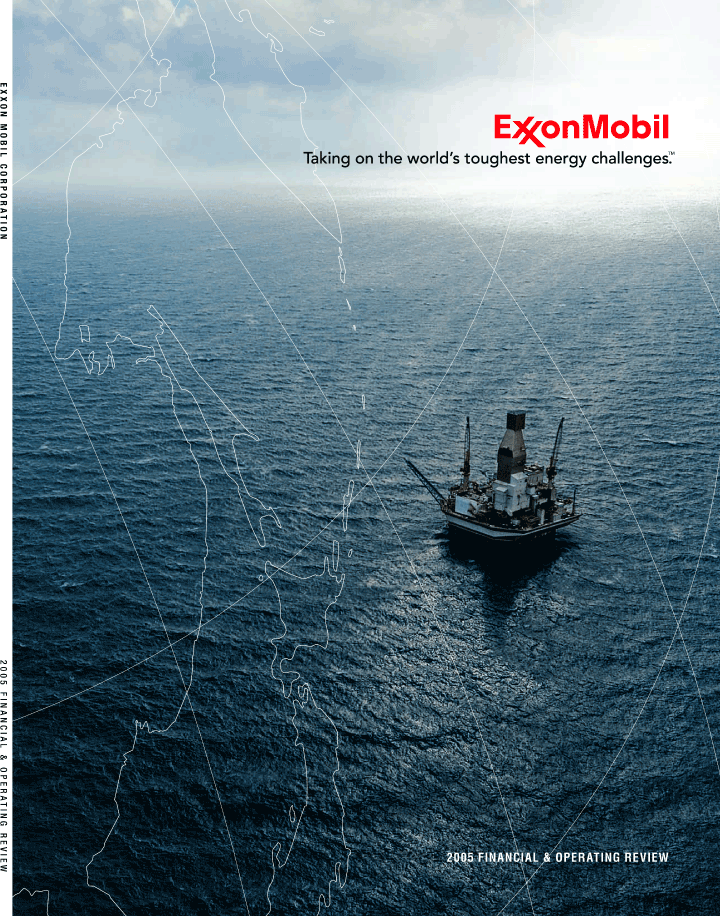

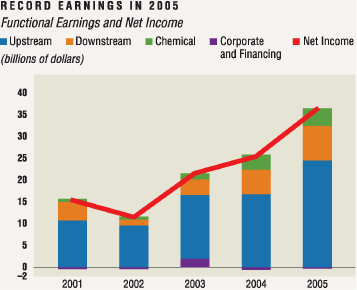
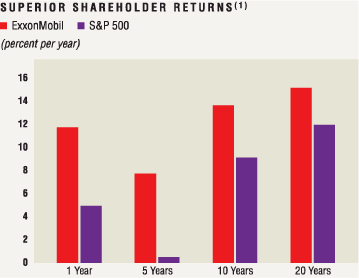
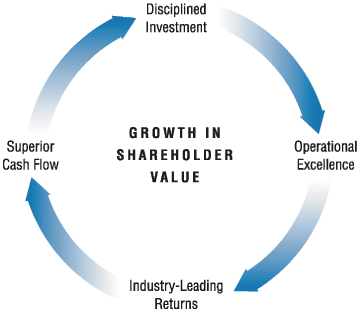
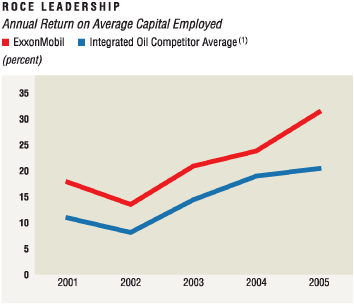
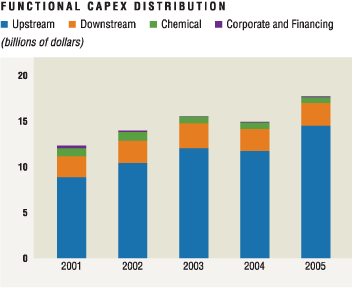
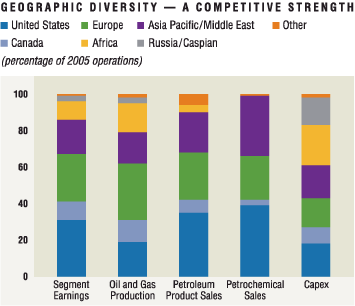
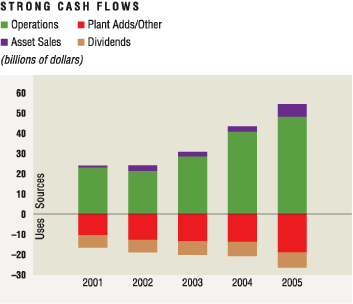
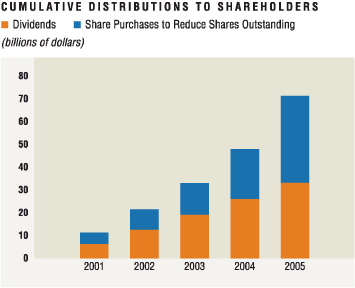
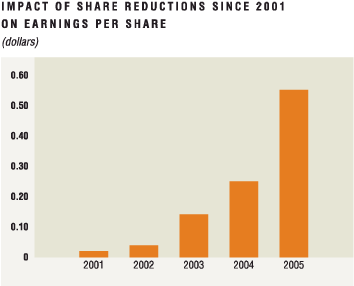
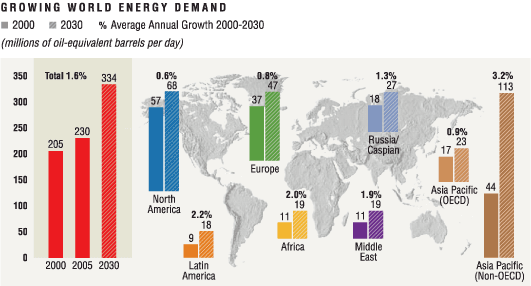
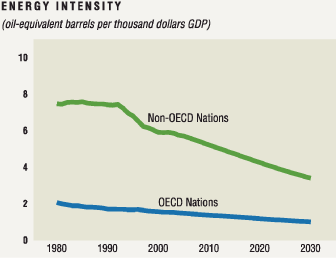
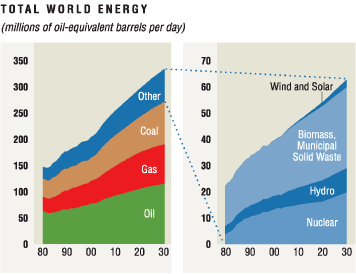
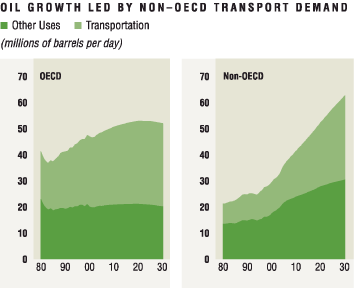
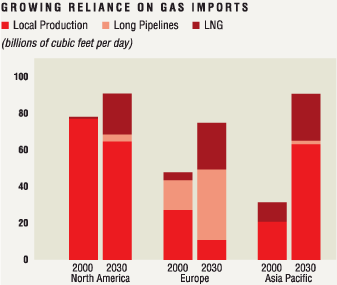
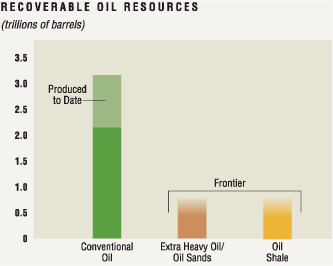
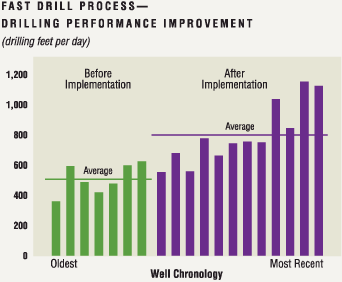
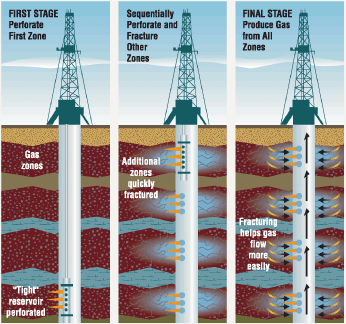


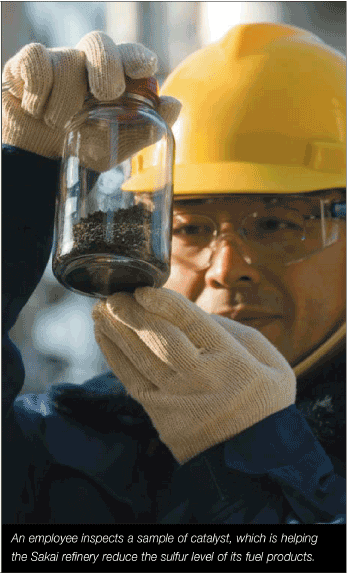

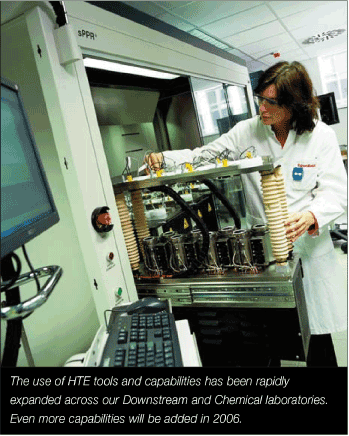
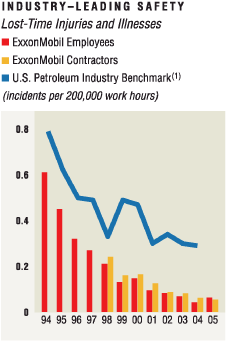
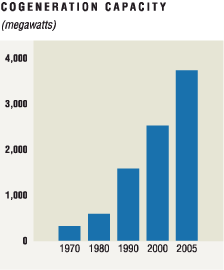
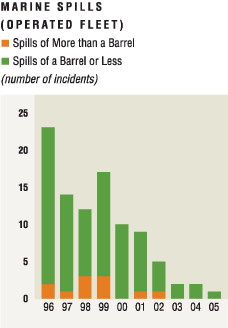
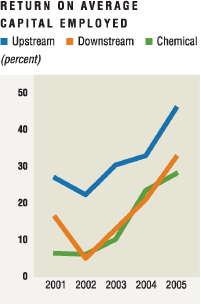
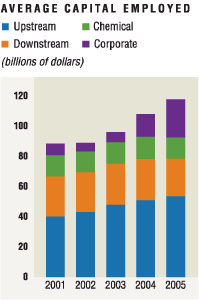
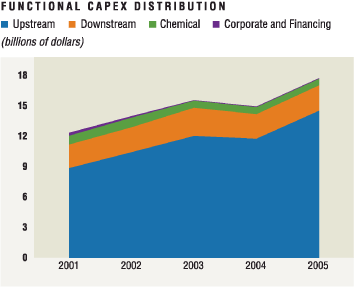
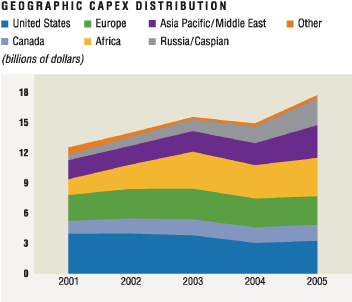
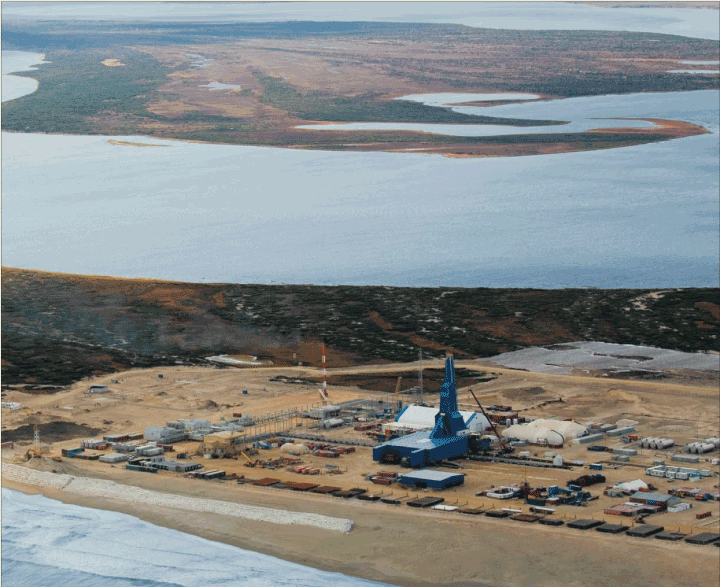
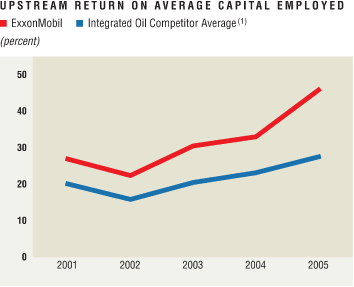
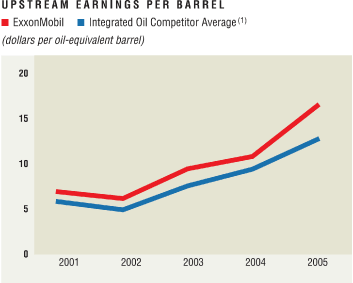
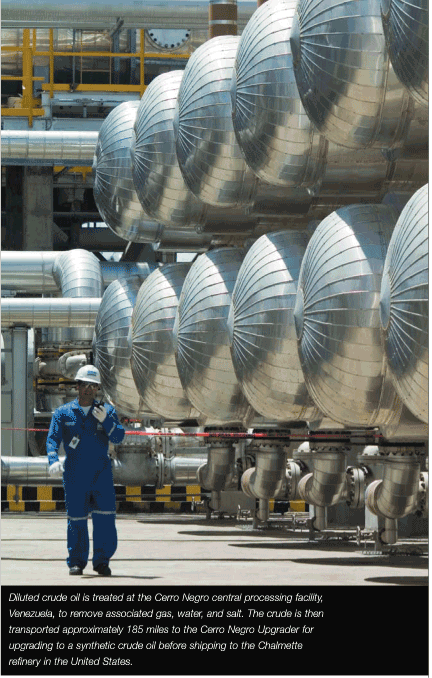
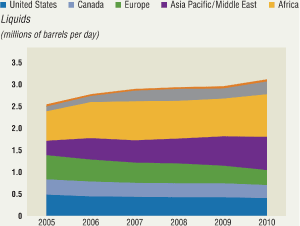
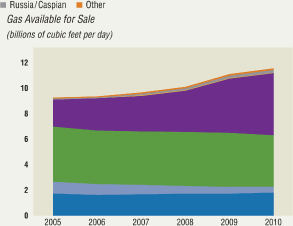
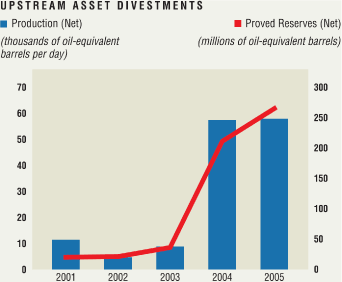
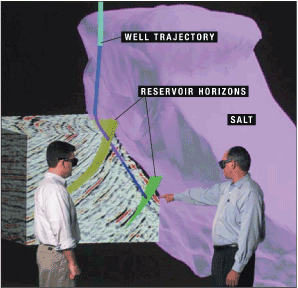

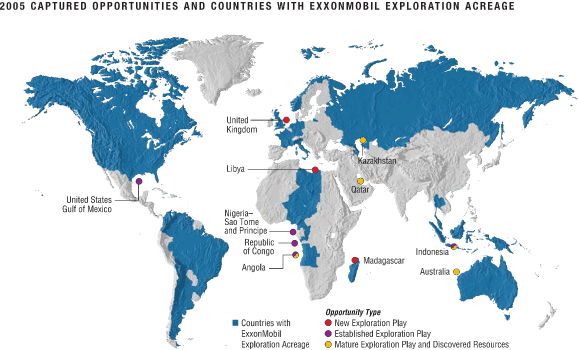
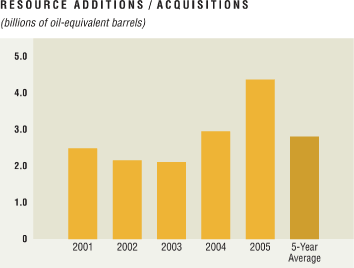
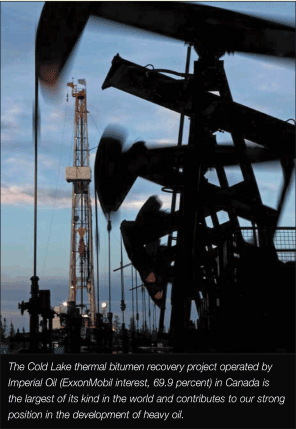
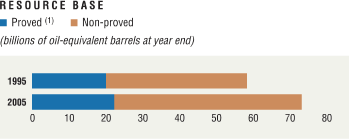
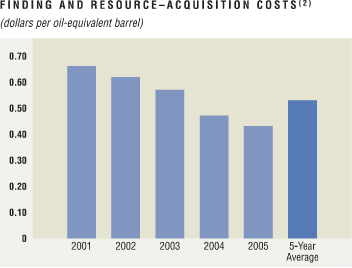
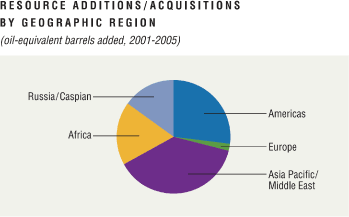
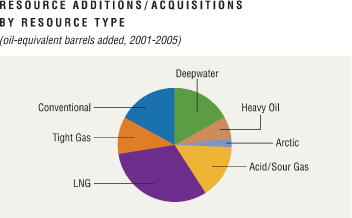
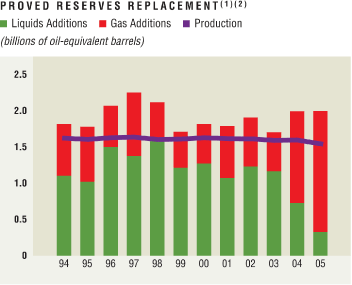
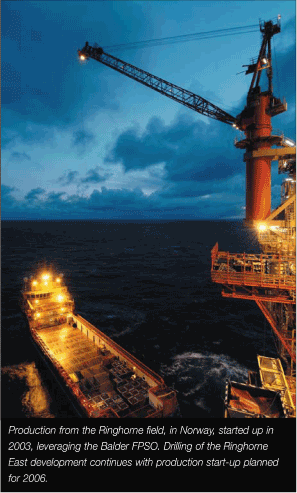
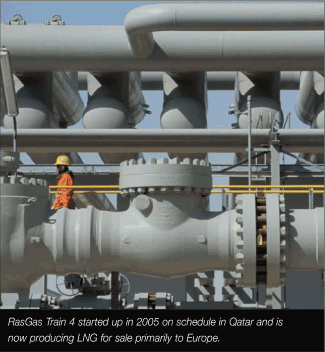

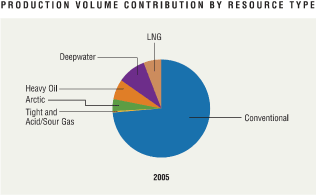
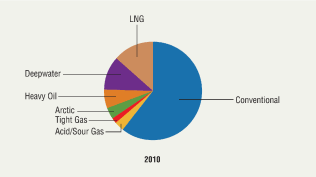


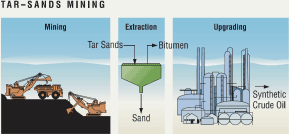
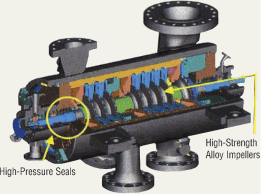
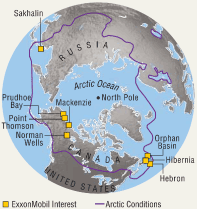
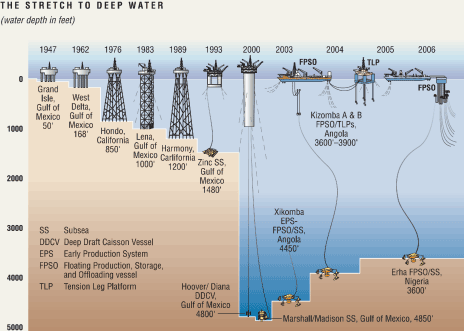
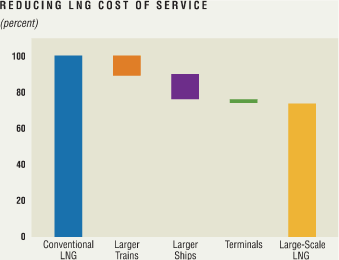

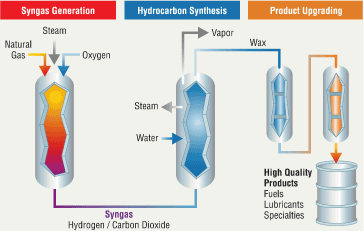
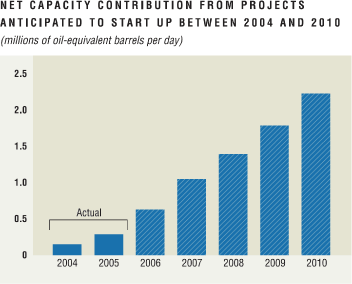
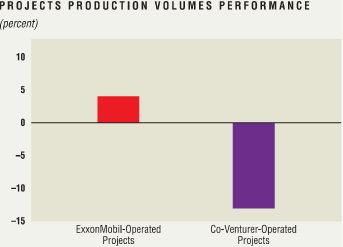
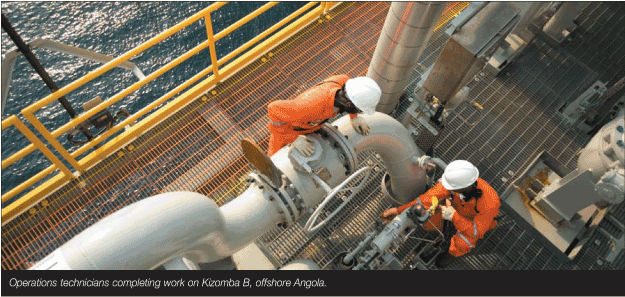
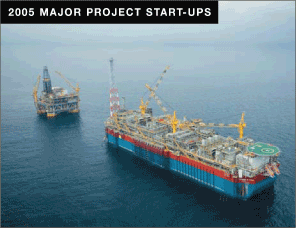
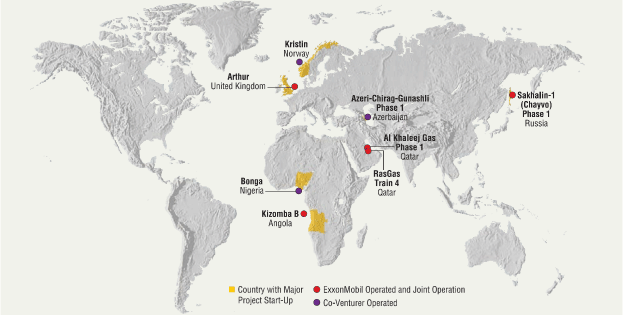
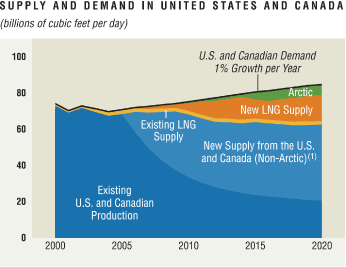
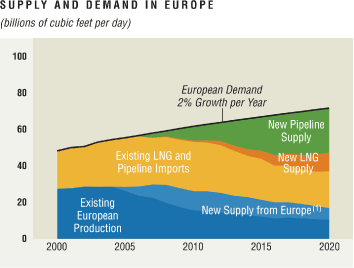
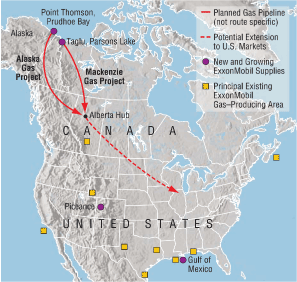
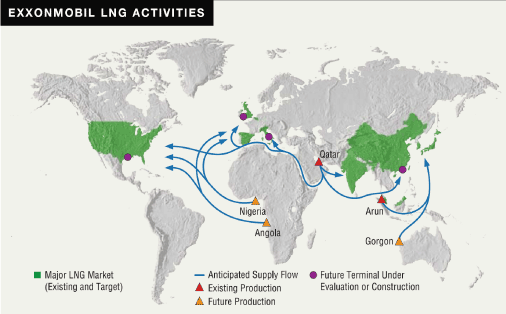
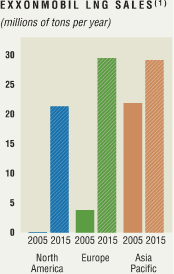
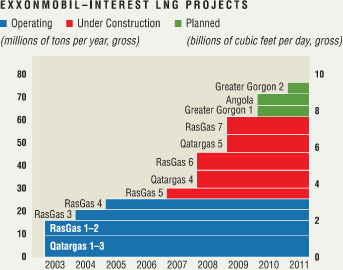
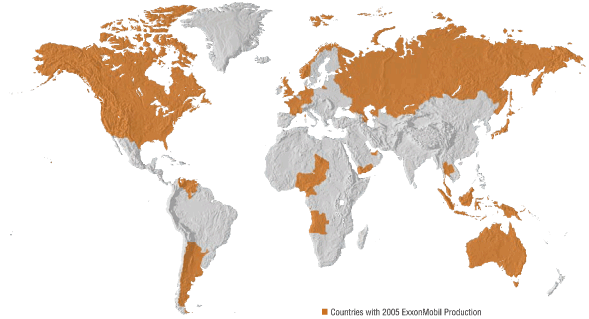
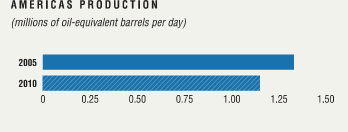
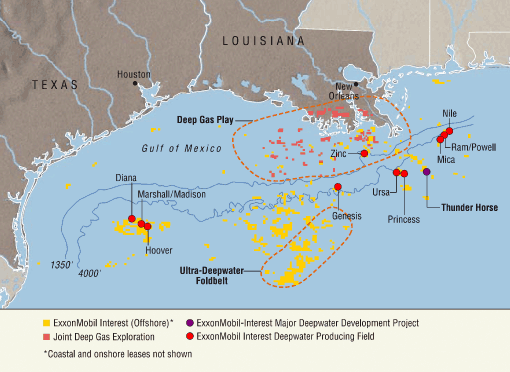
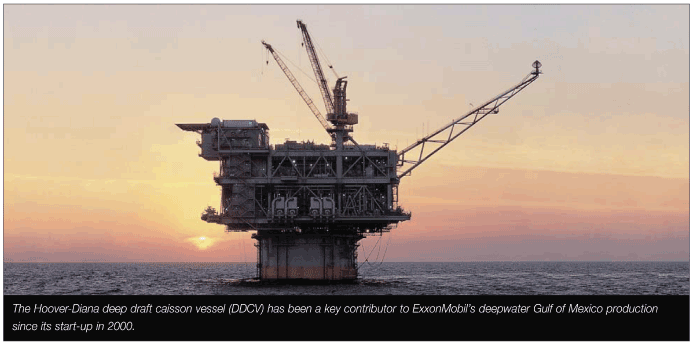

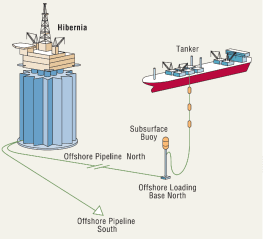
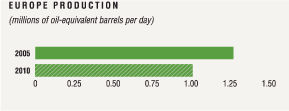
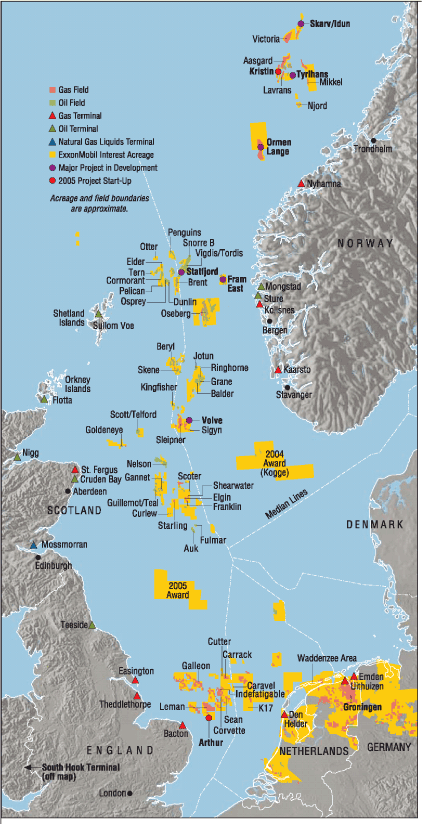
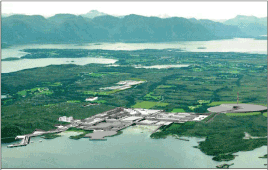
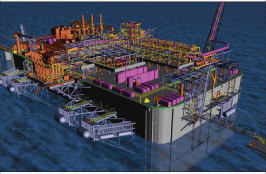


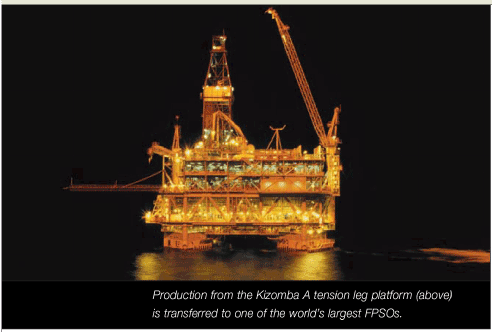
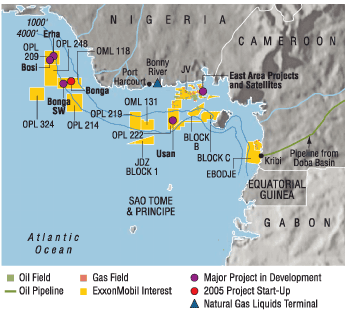
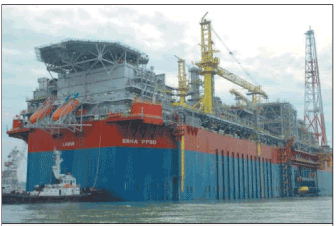
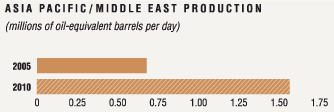
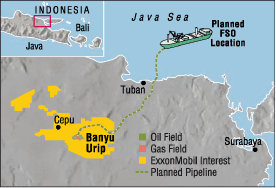
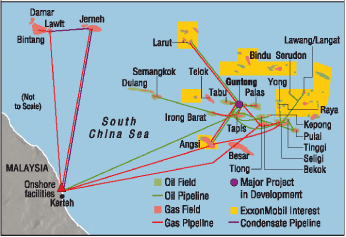
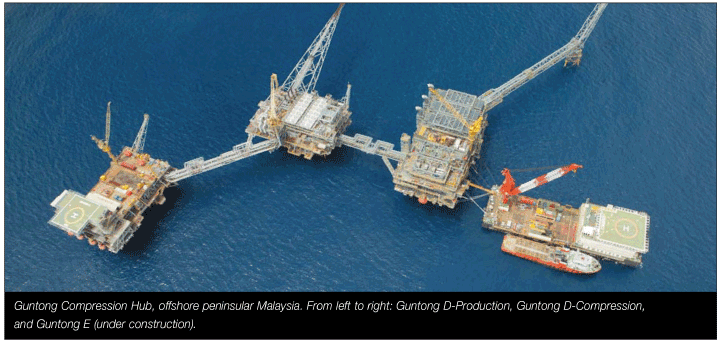
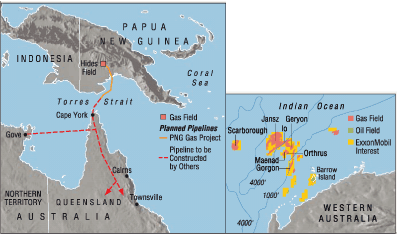
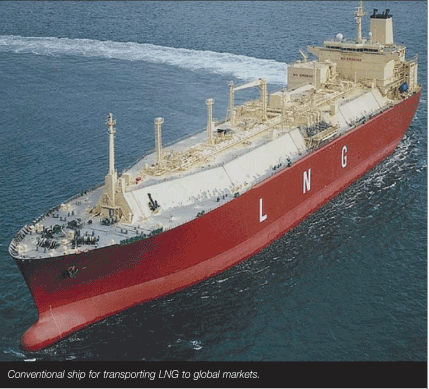
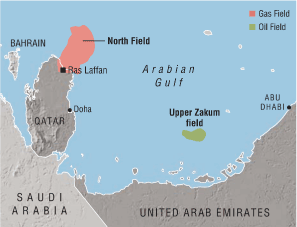
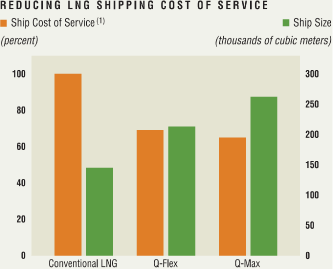
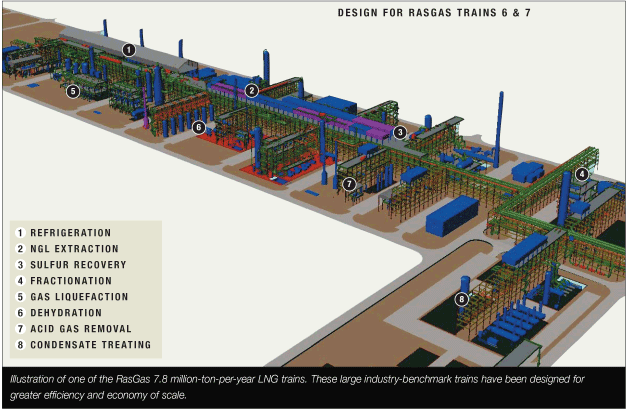
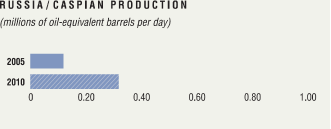
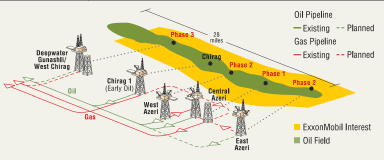
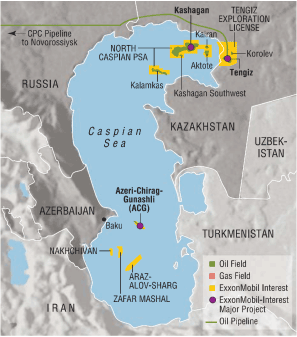
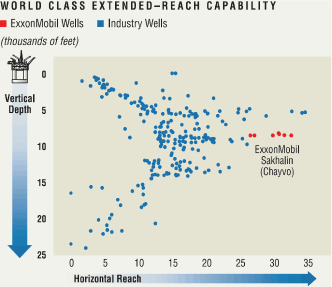
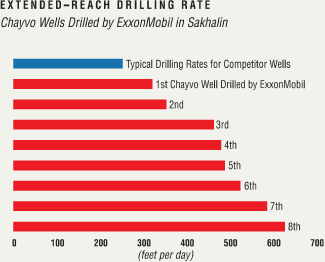
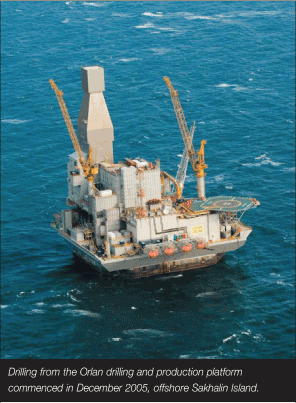
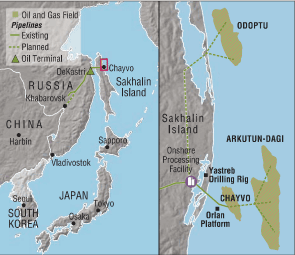
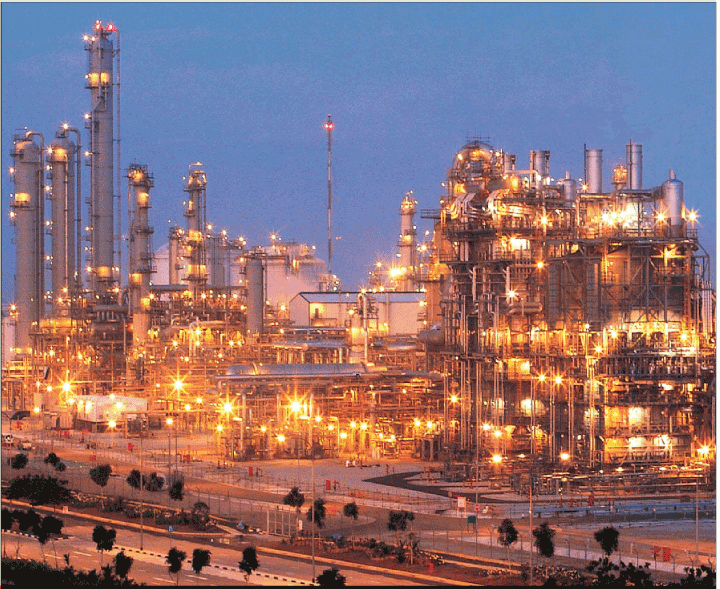
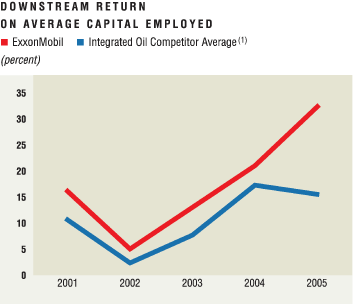
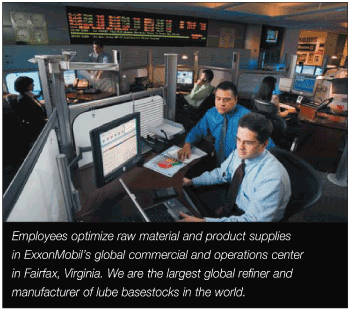
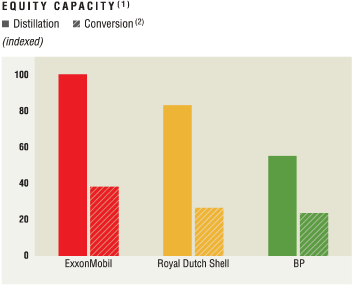
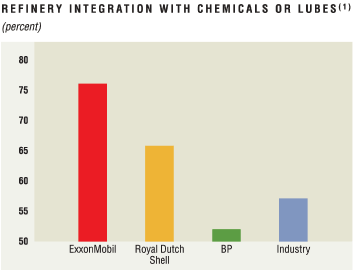
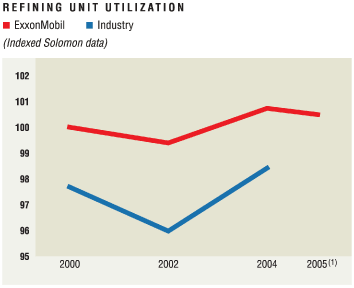
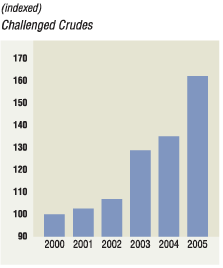
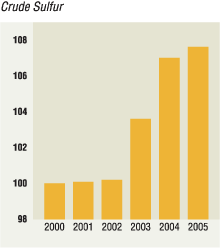
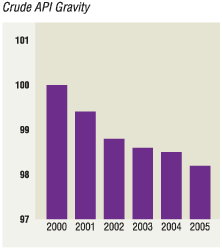
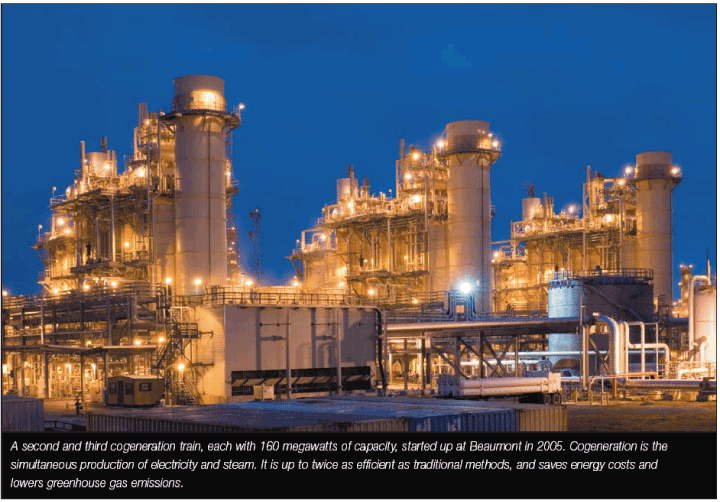
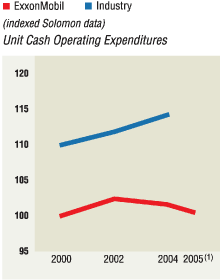
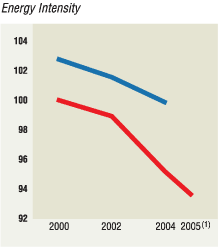
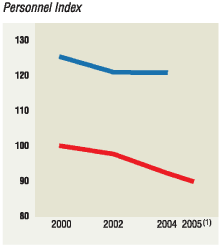
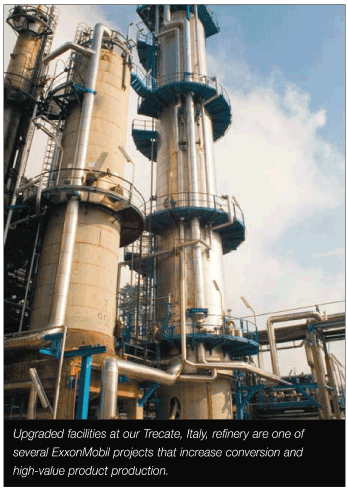
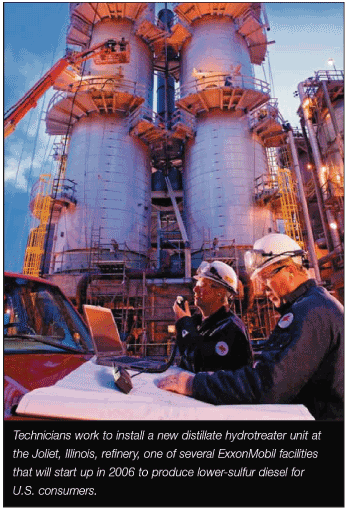
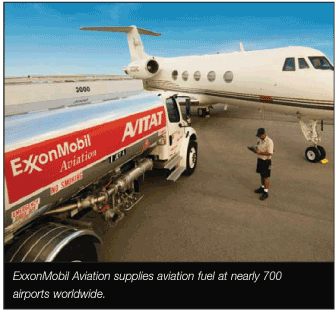
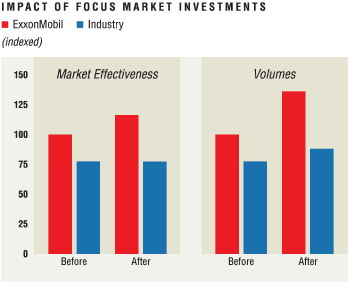
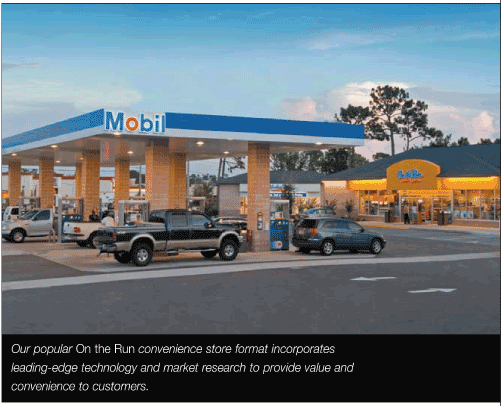
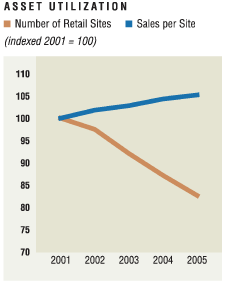

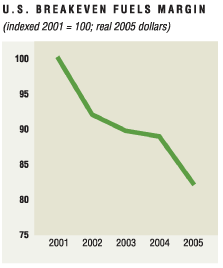
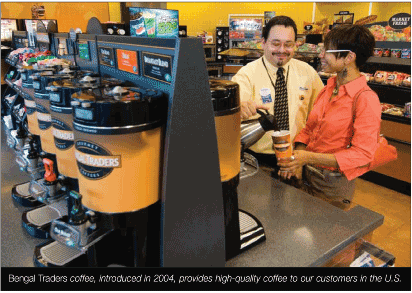
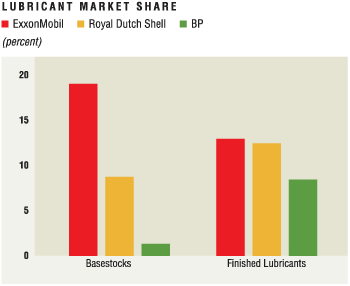
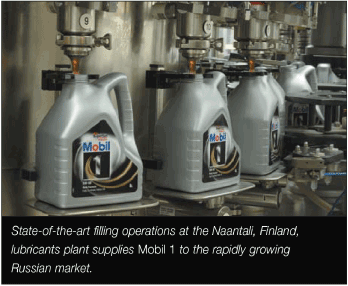

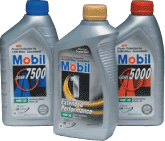
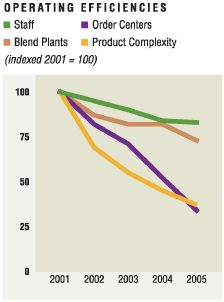
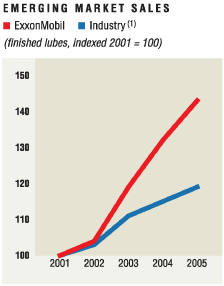
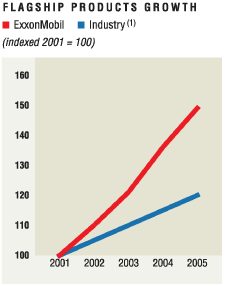
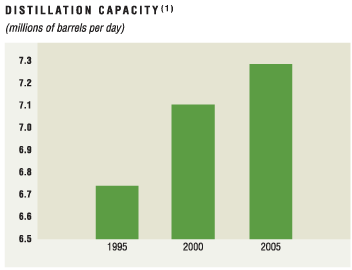

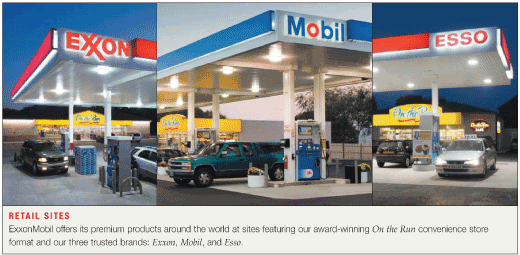

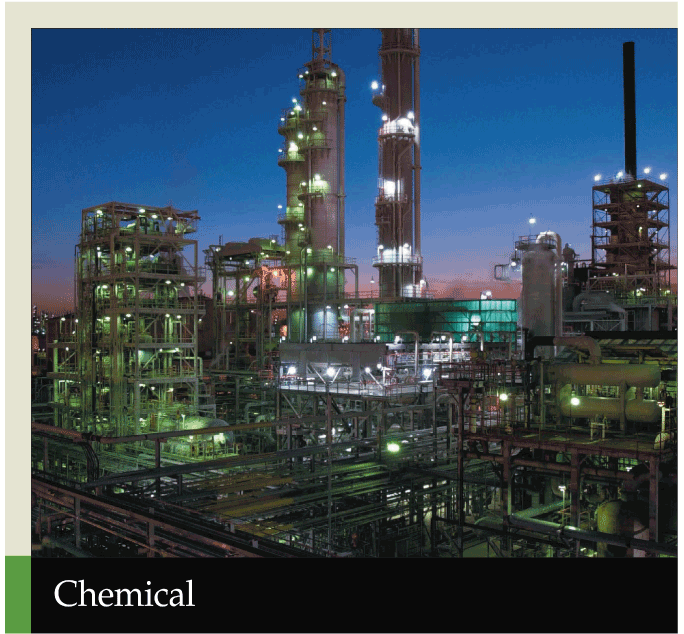
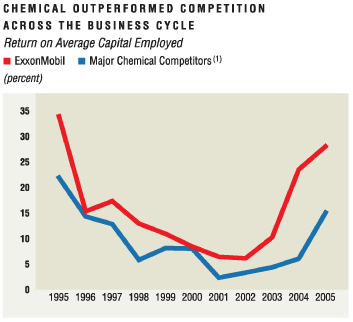
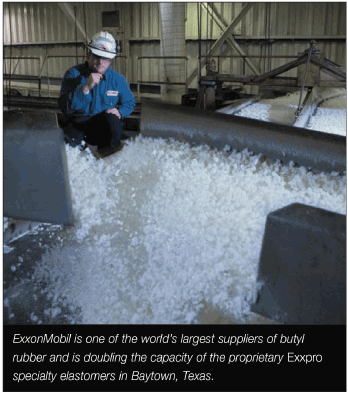
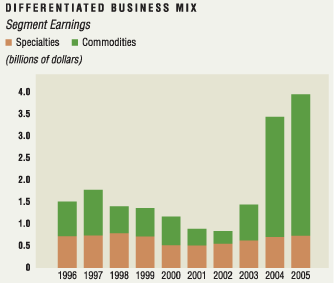
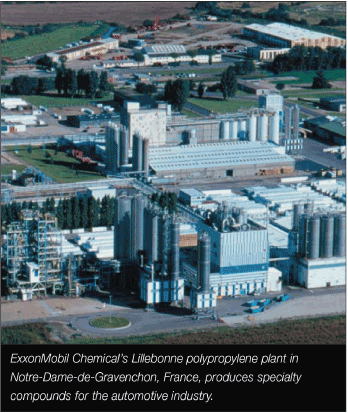
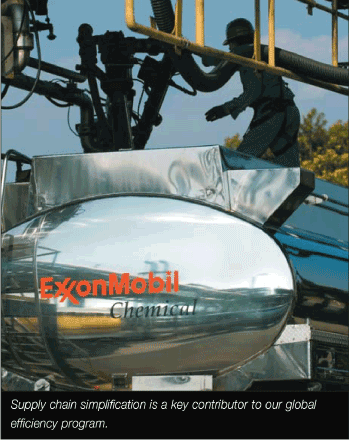
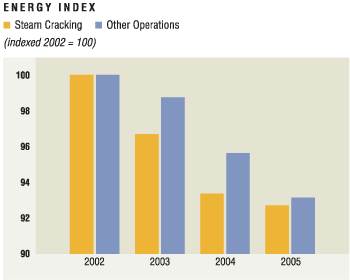
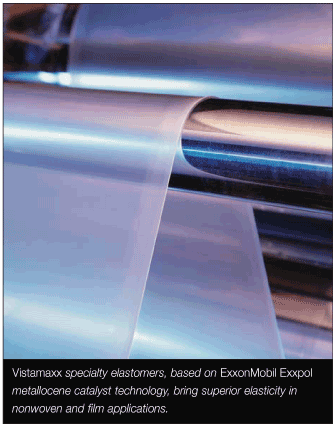
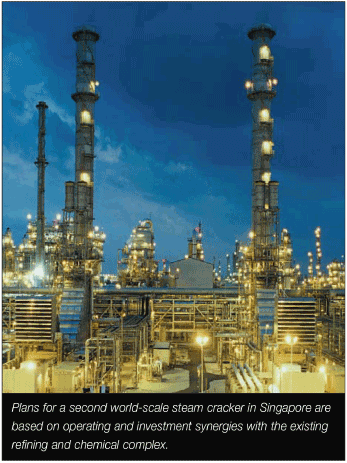
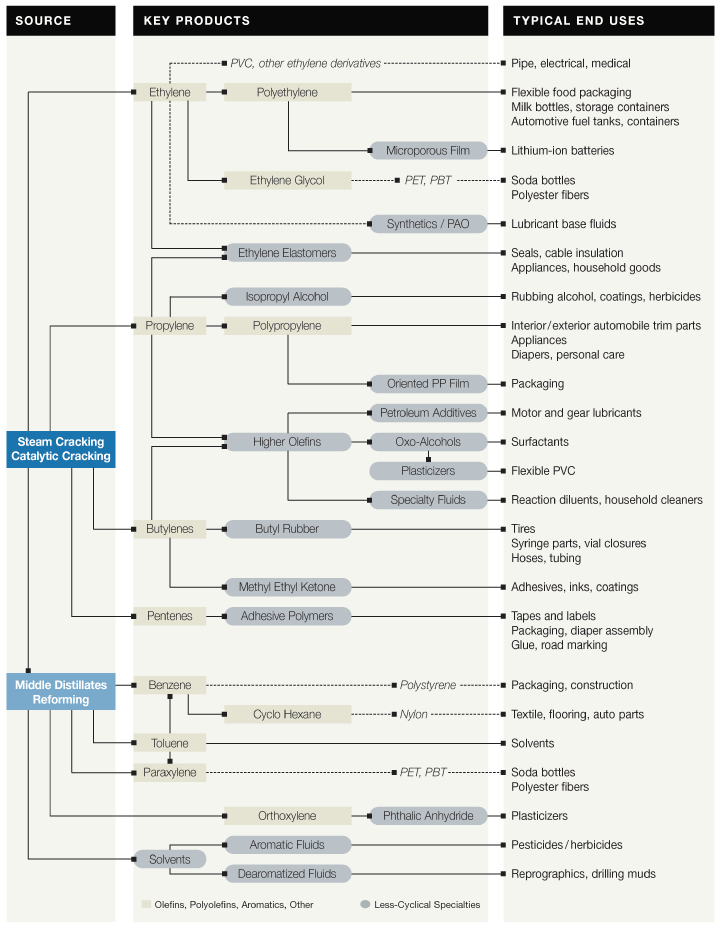
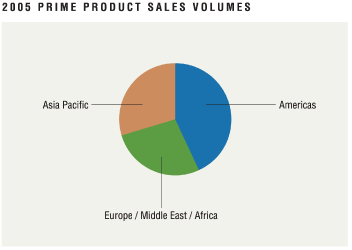
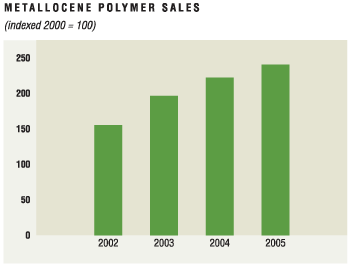
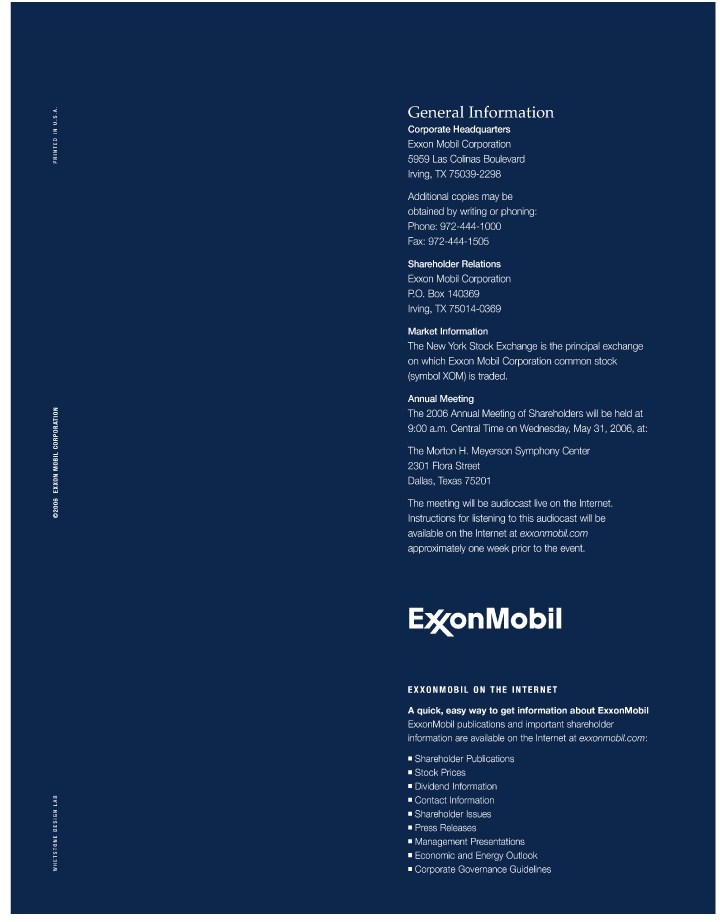
 Printed entirely on recycled paper
Printed entirely on recycled paper